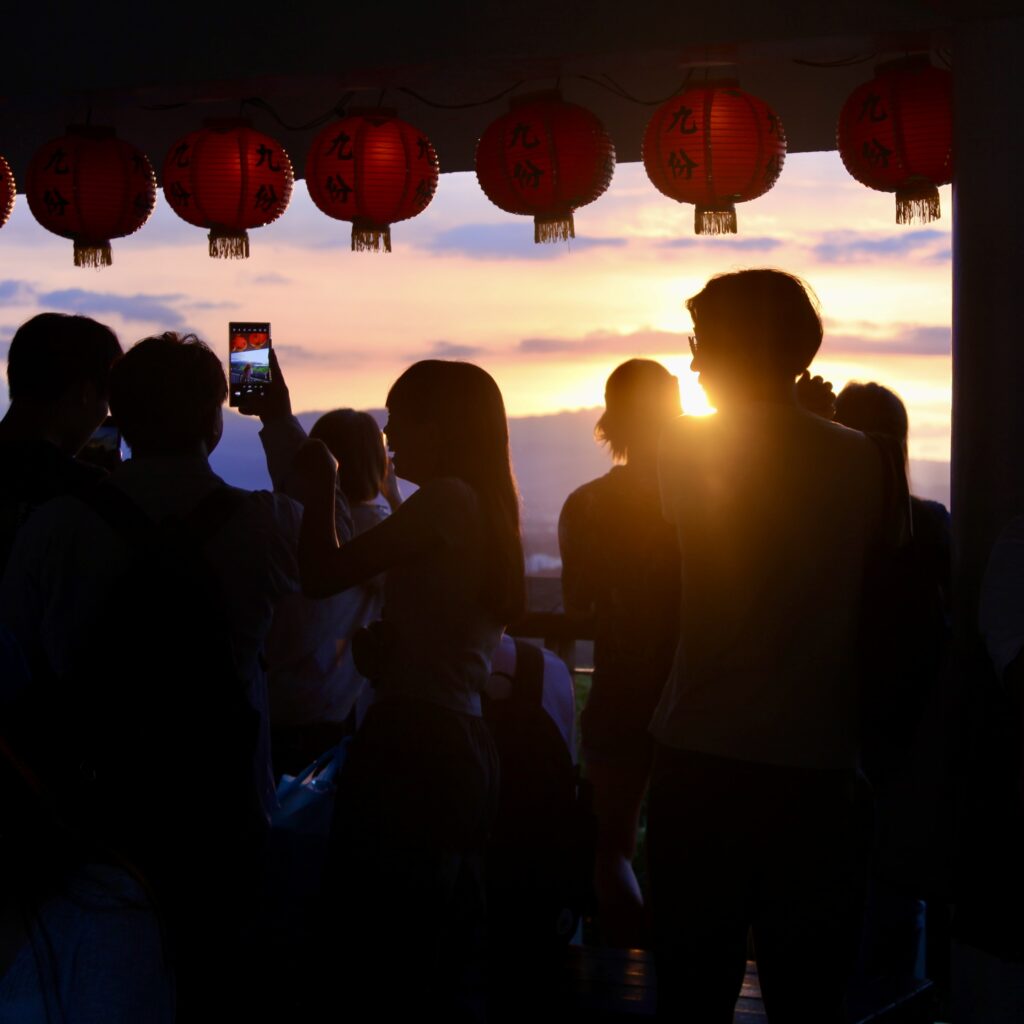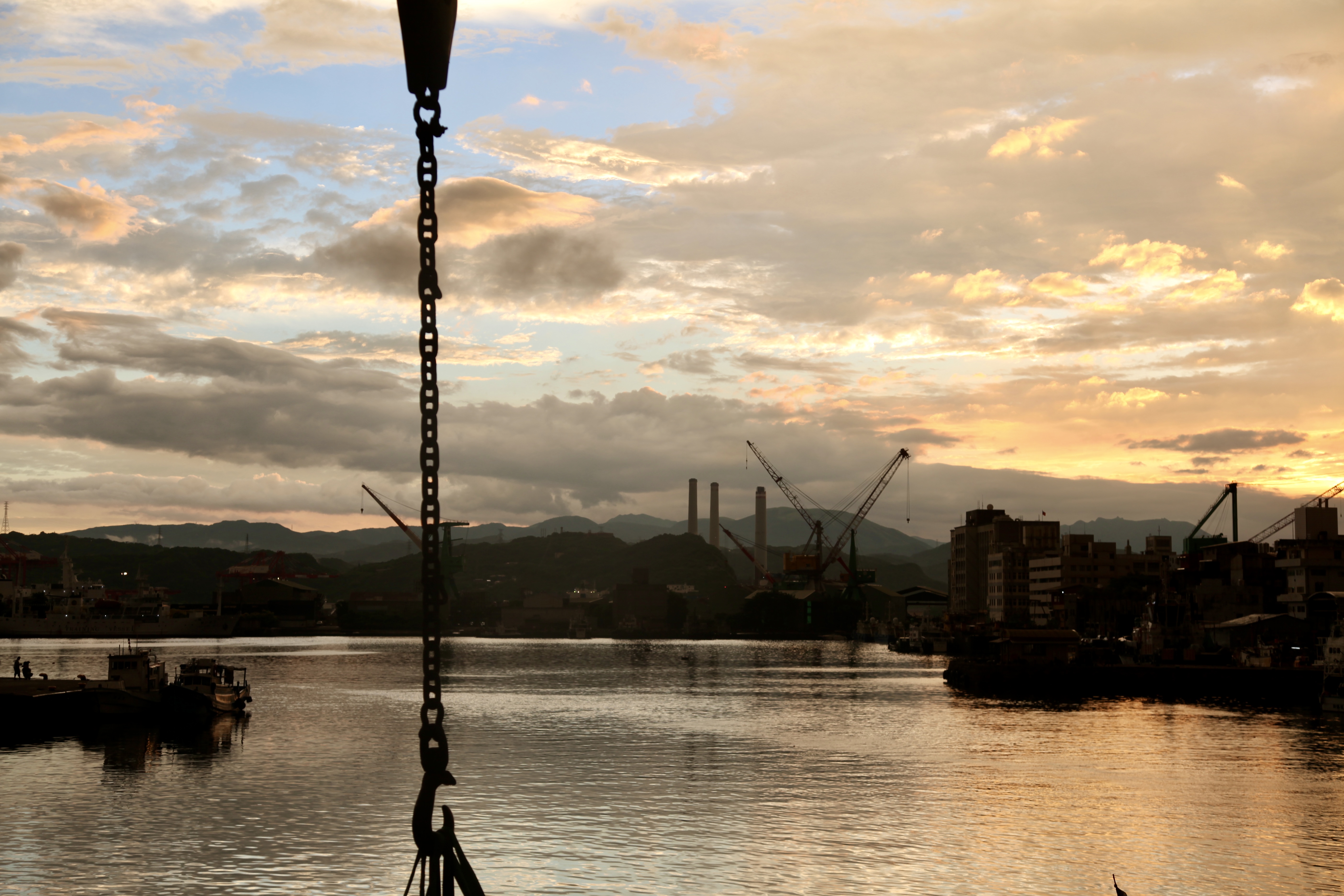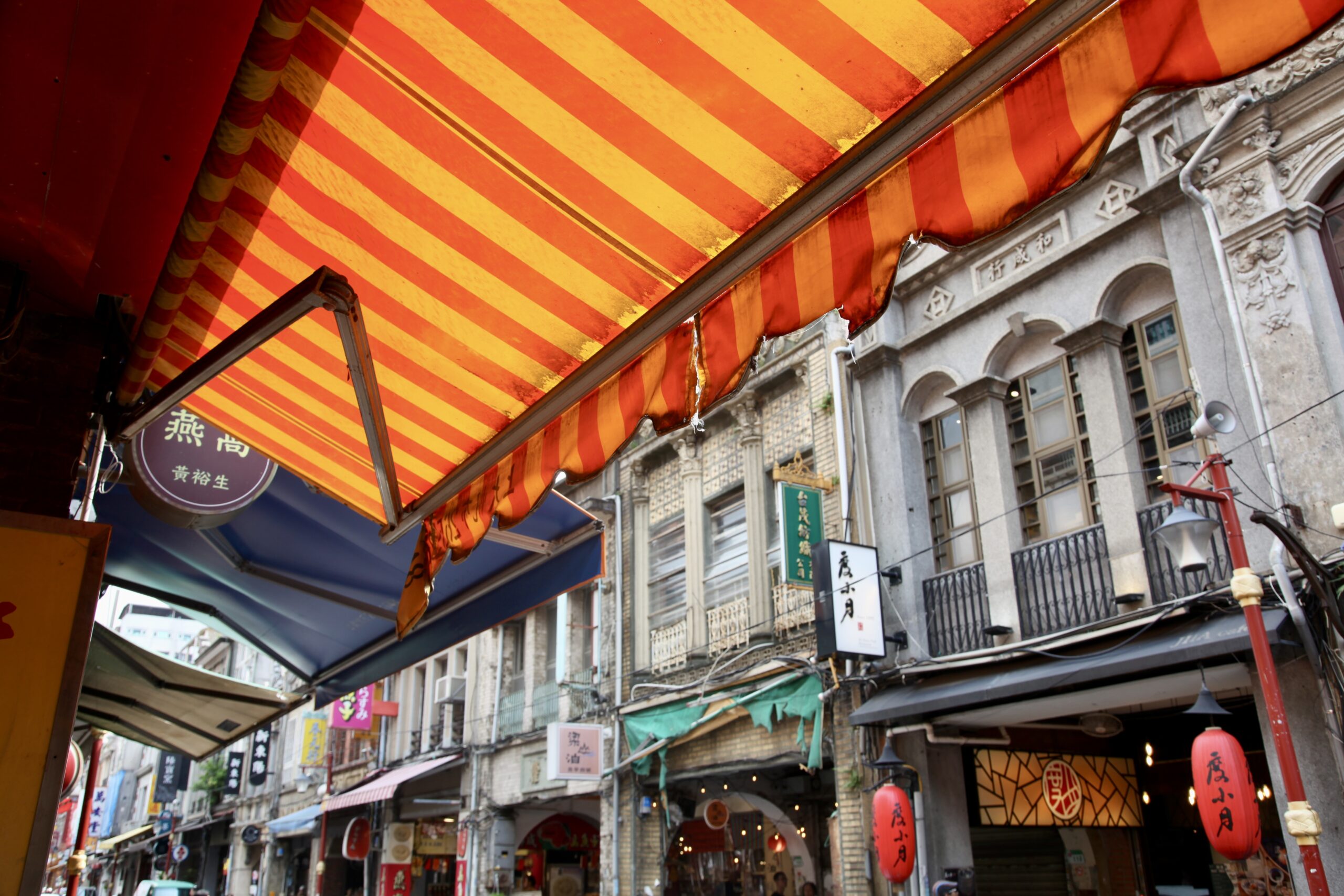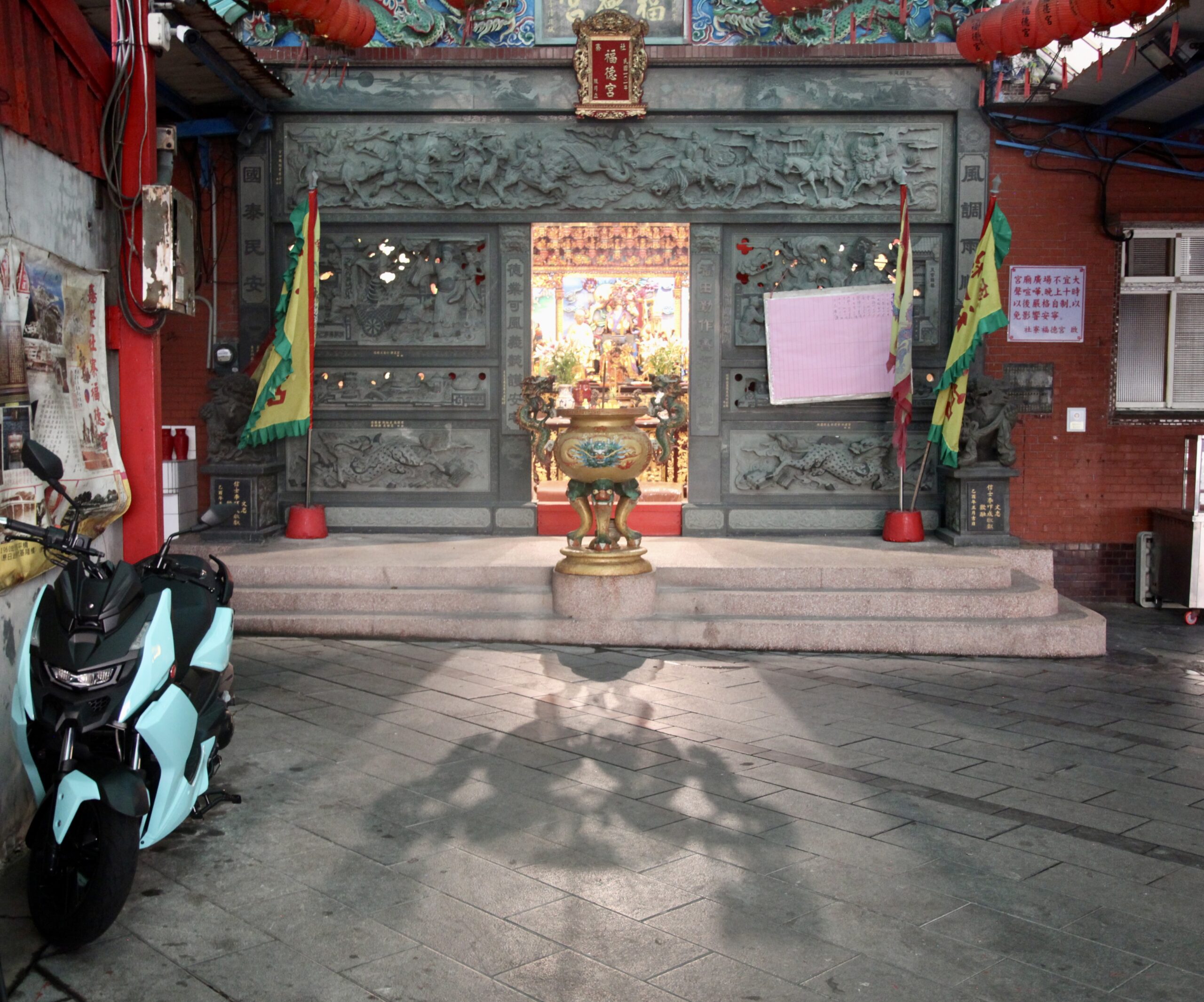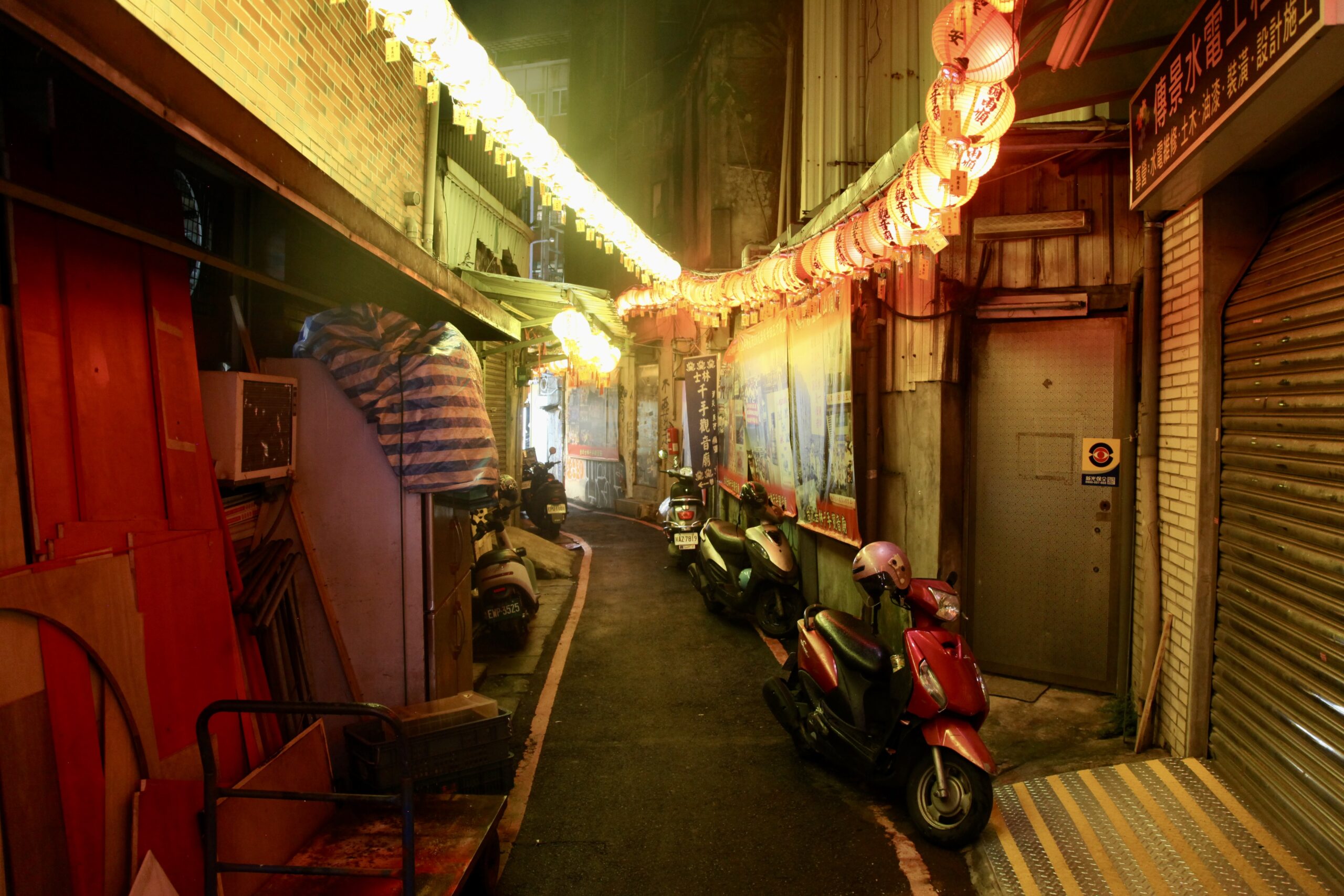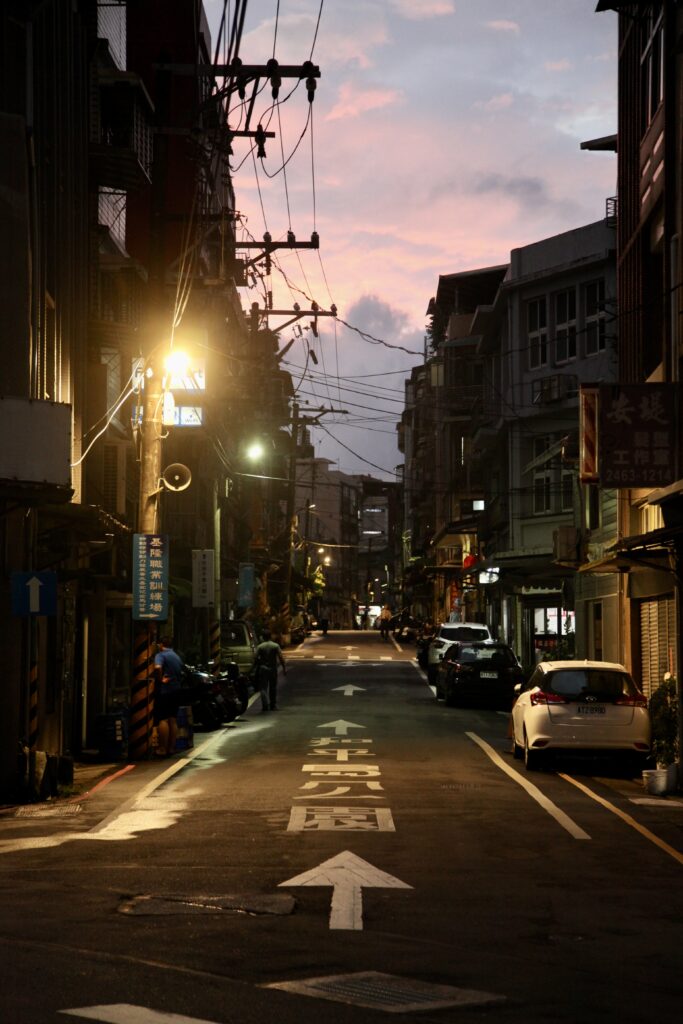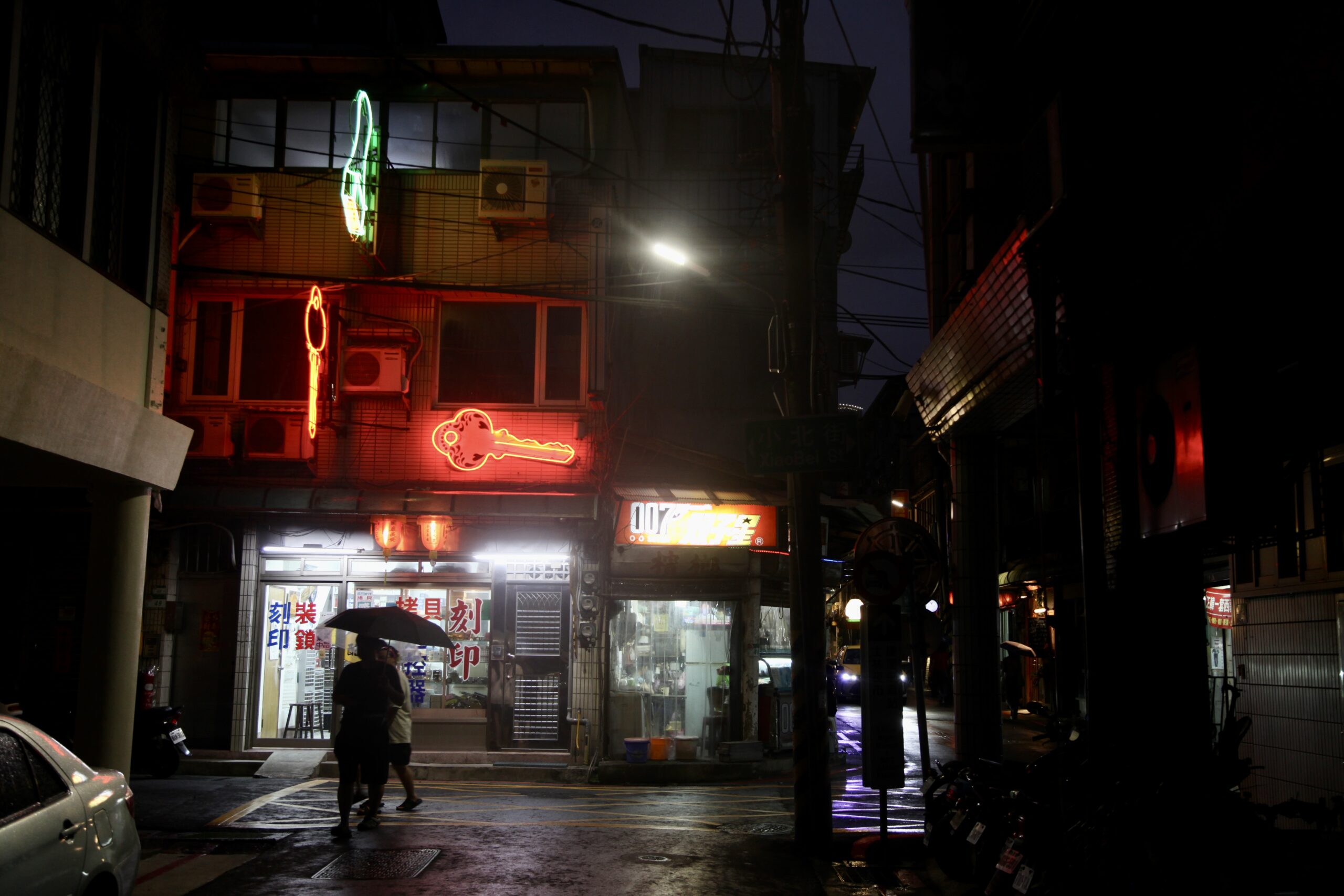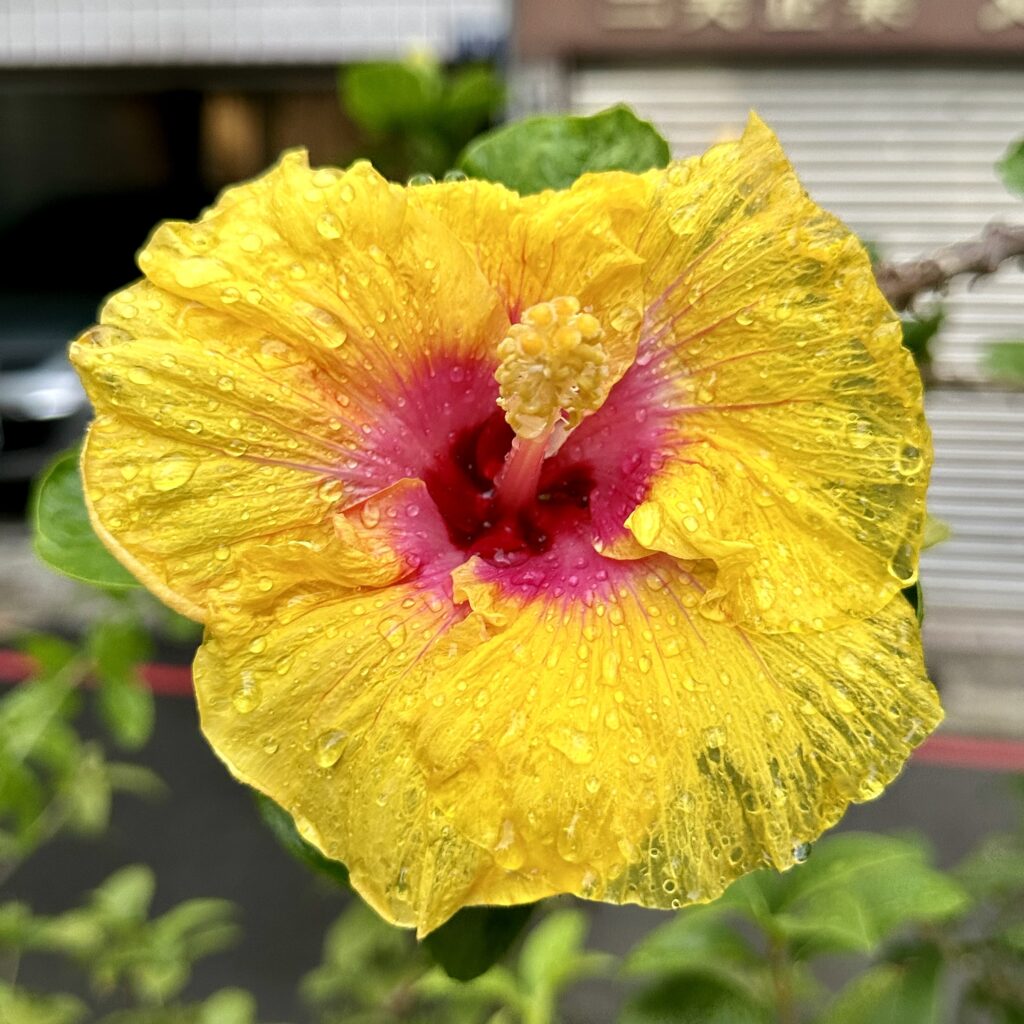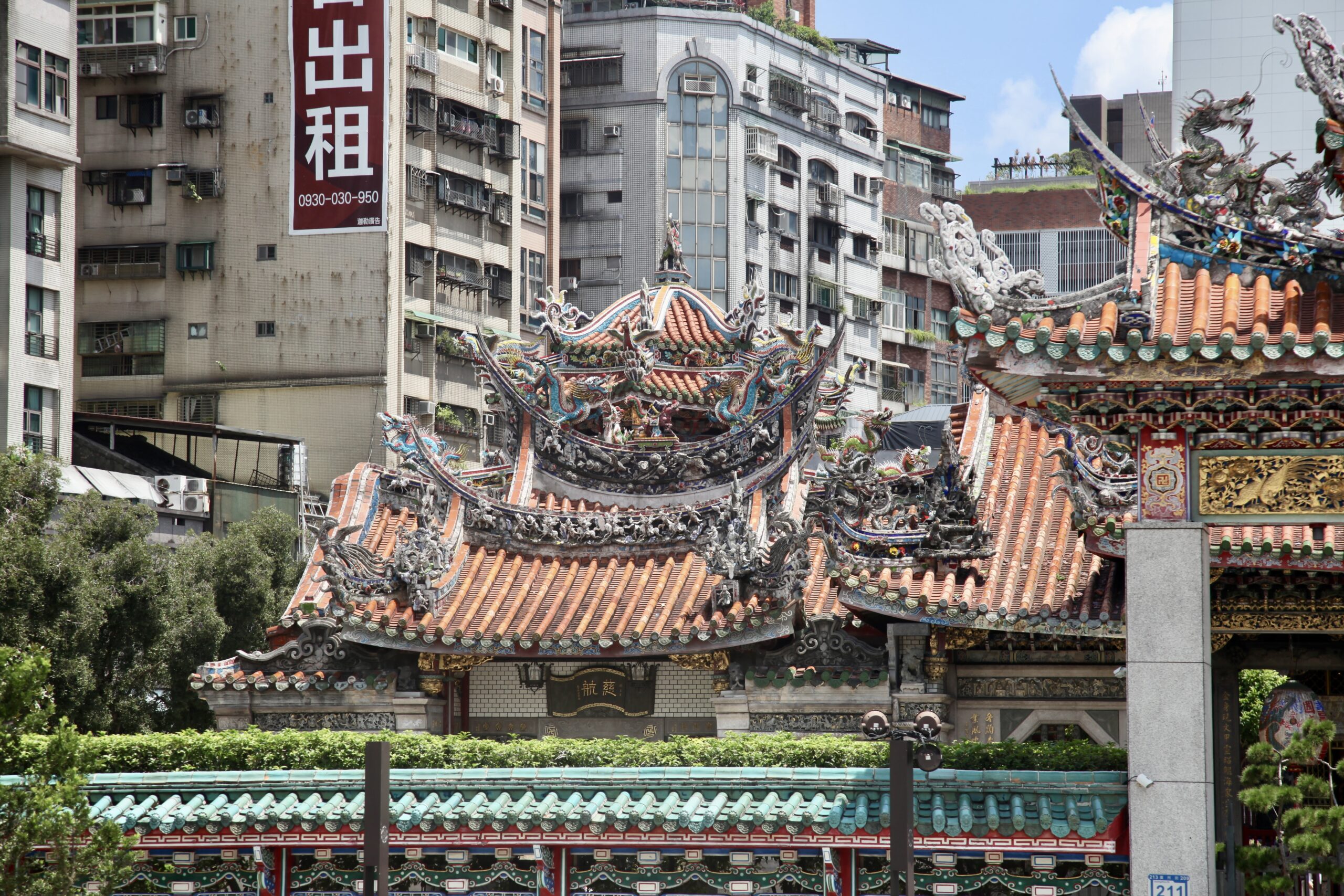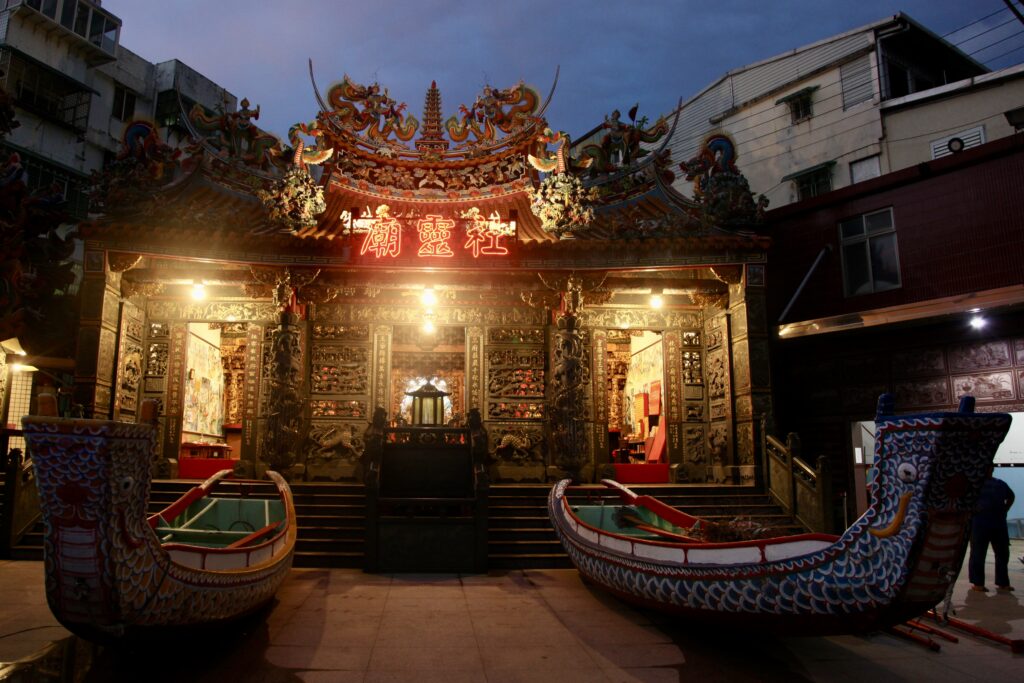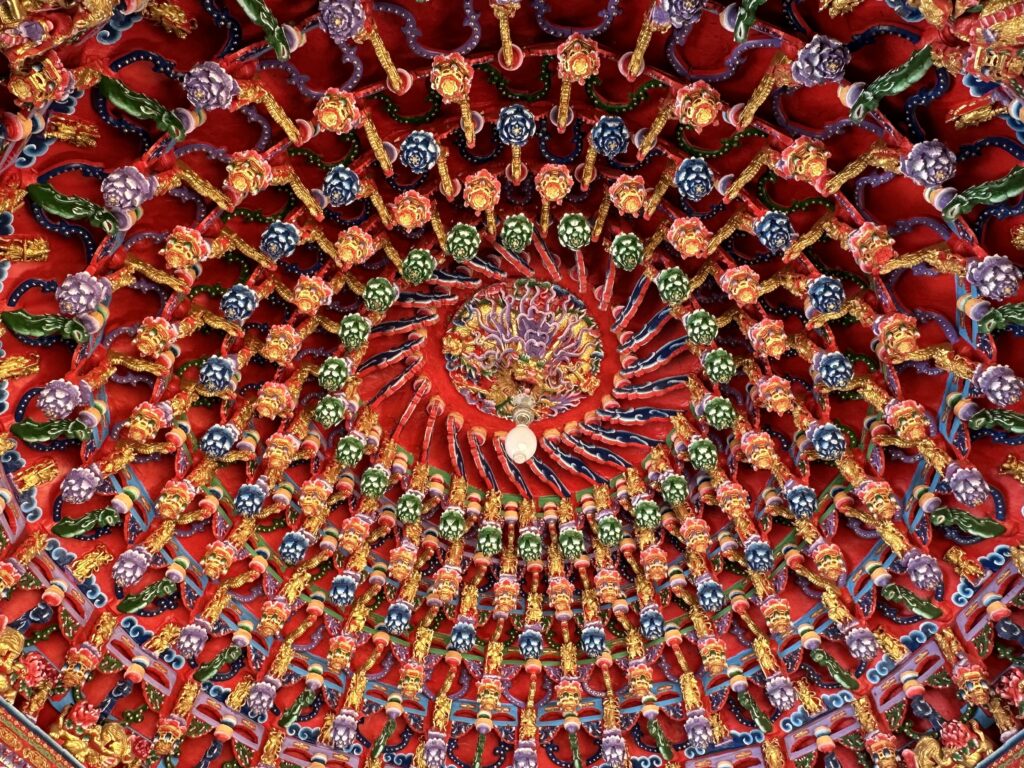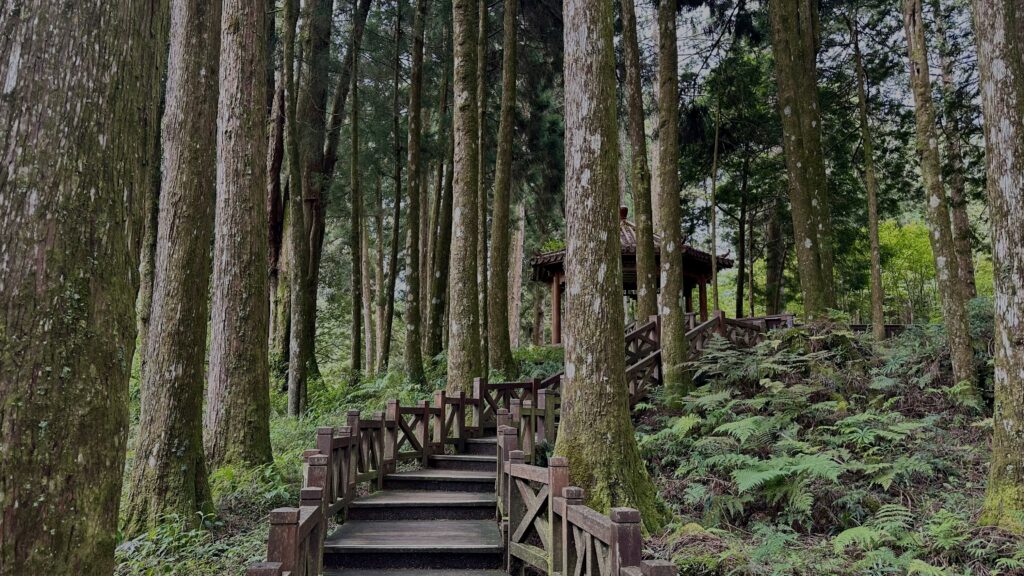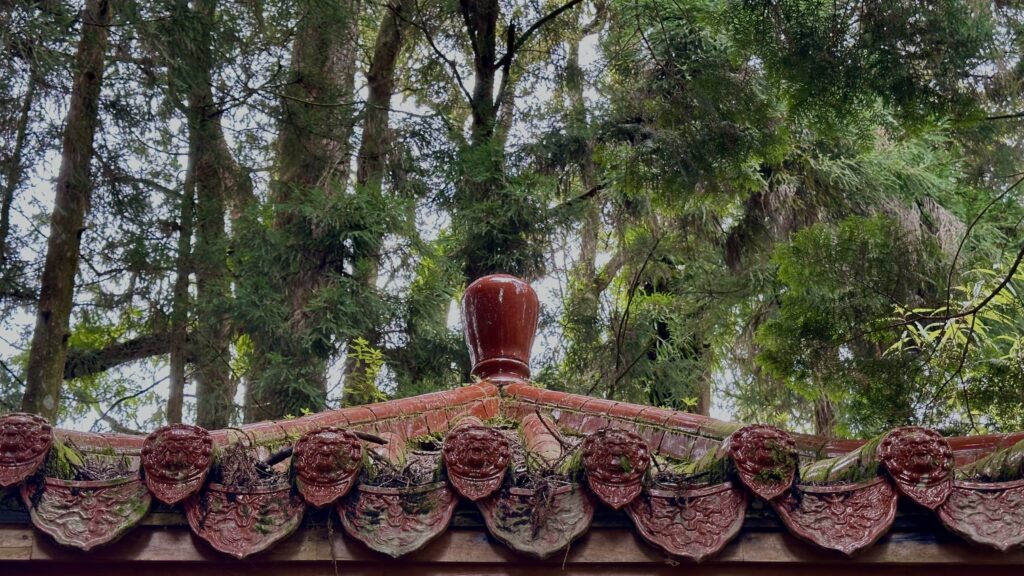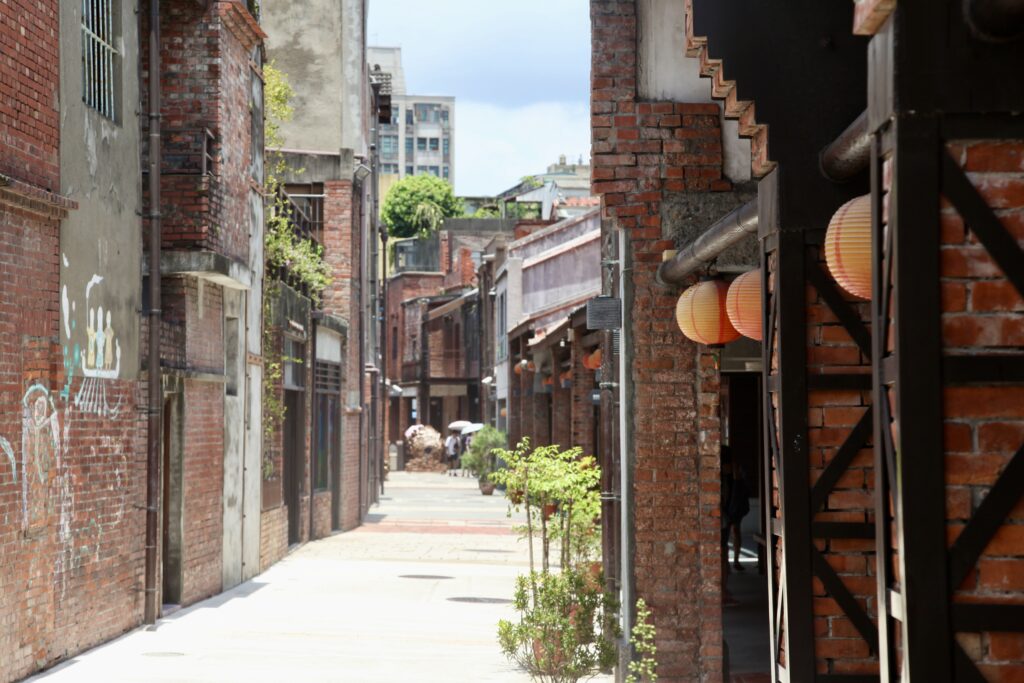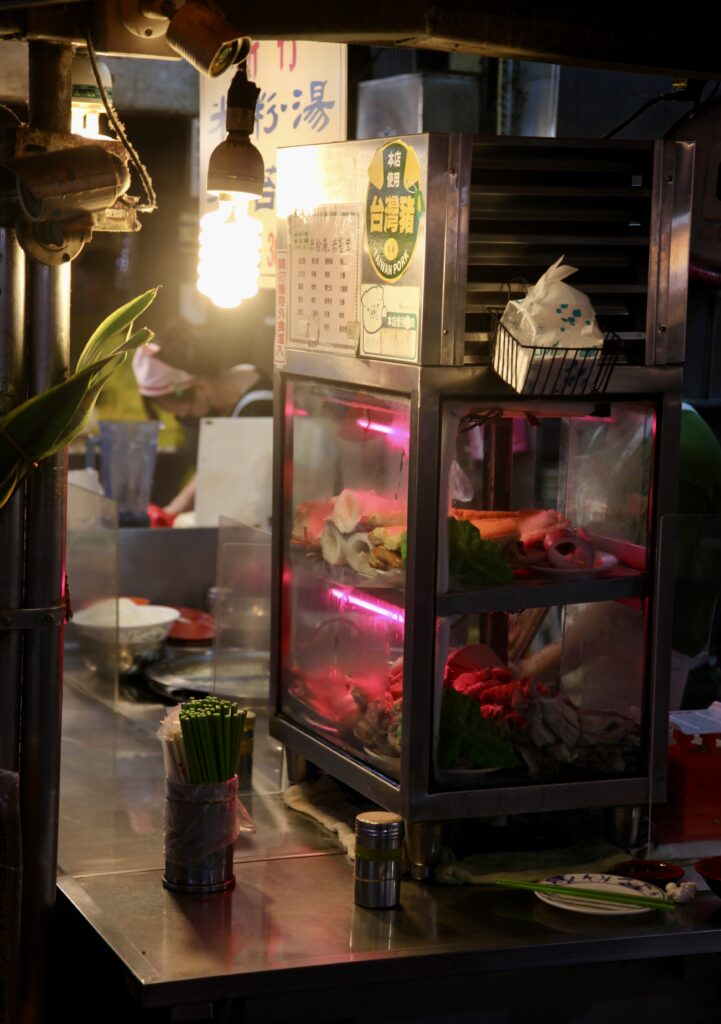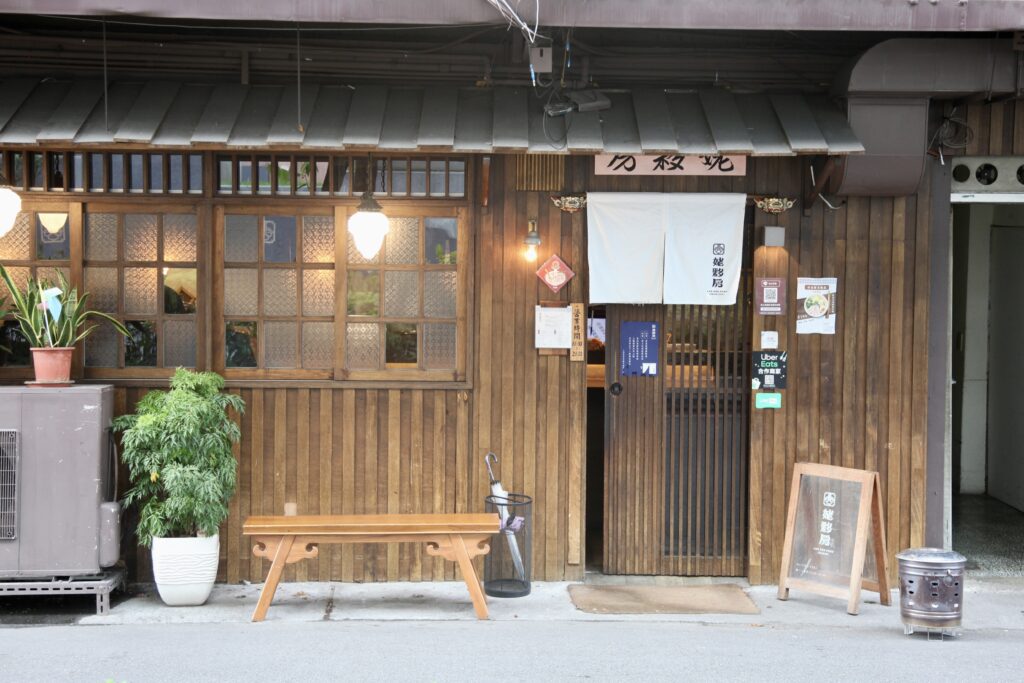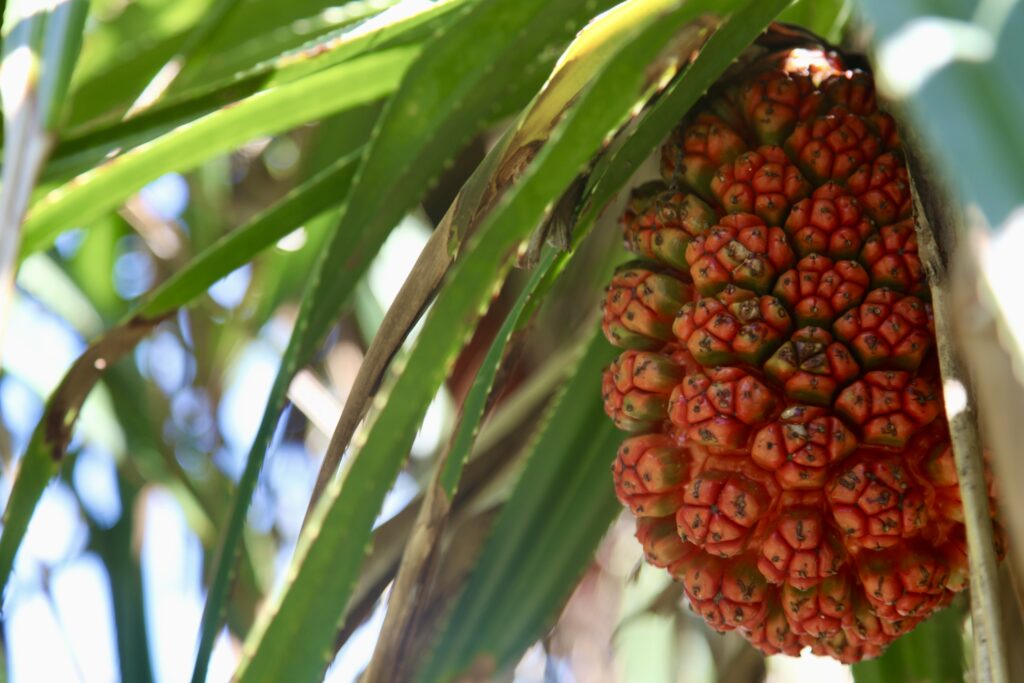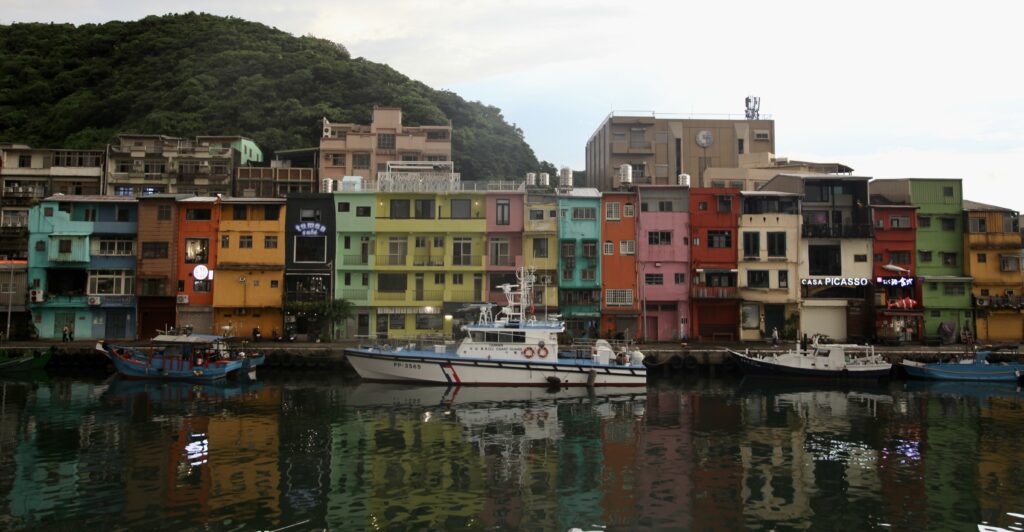1.
Visiting Taiwan is an experience in density. It is 1/5th size of Washington State and 4x as populated (Fun fact: Bangladesh is the only major country with a higher population density than Taiwan).
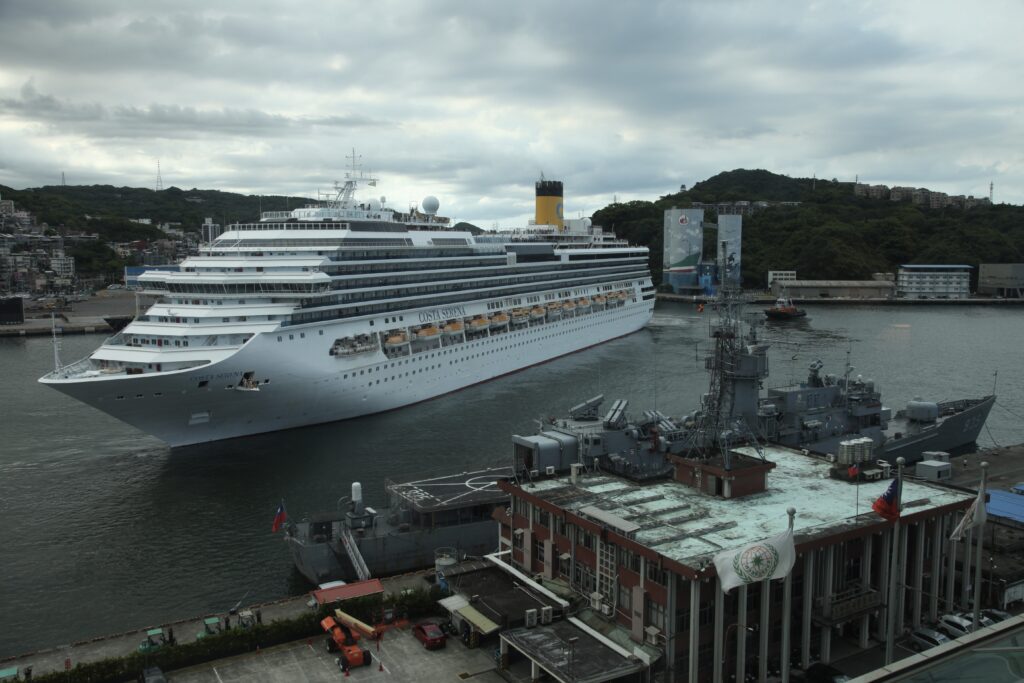
This means that experiences happen fast. For example, you'll hike up a jungle trail as butterflies flit by and emerge to discover both a beautiful vista - and a military installation that confusingly has an attached cafe.
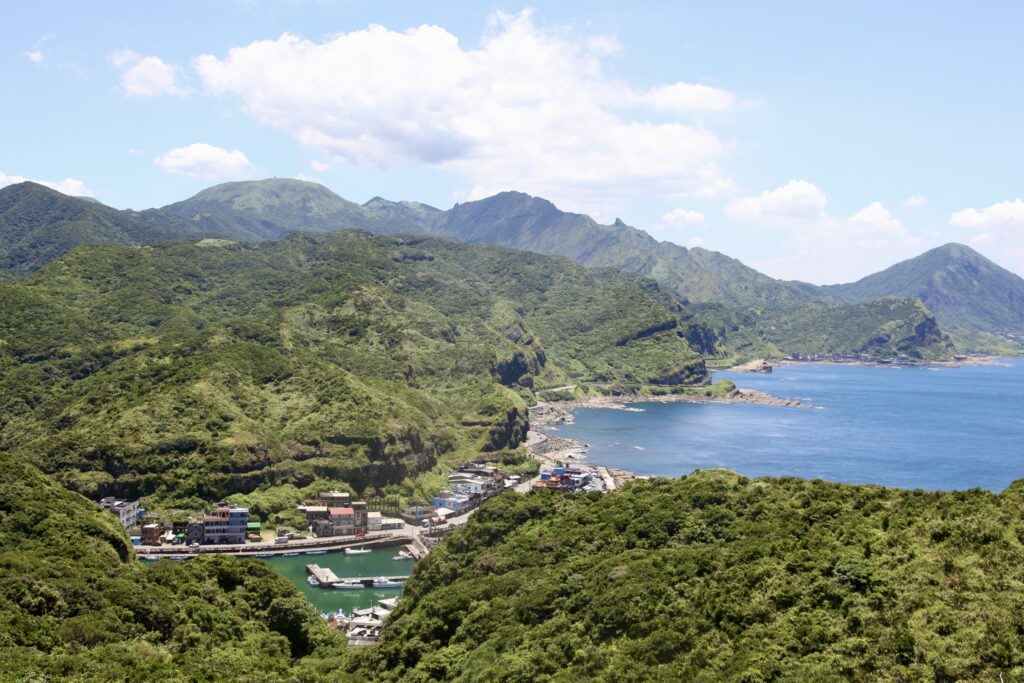
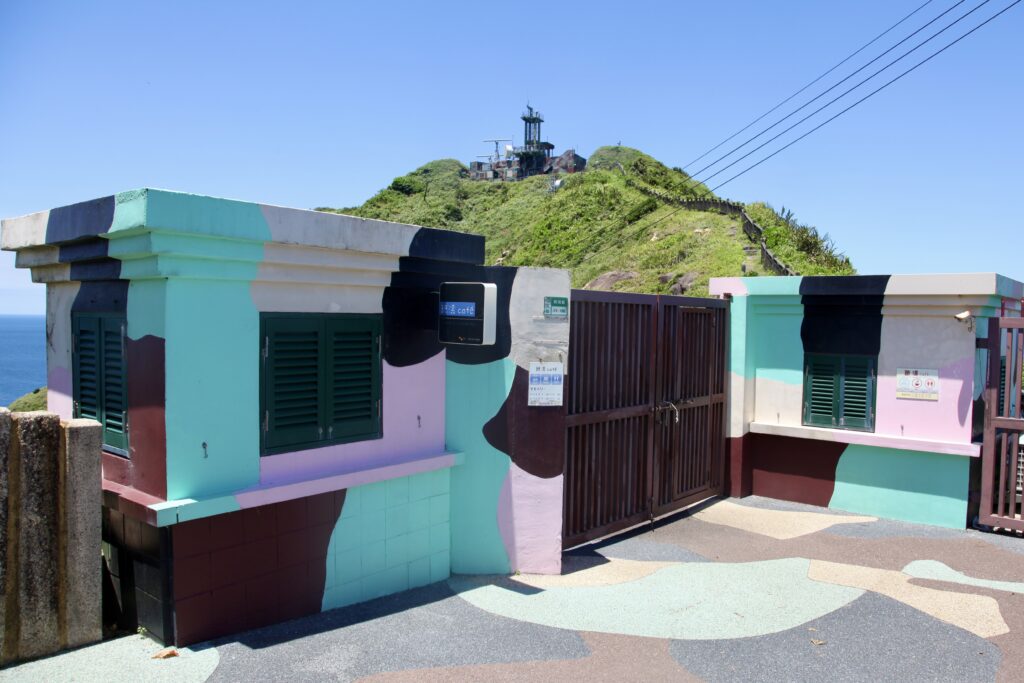
You can swim in an outdoor saltwater pool amongst fish next to both protected natural features...and a container port.
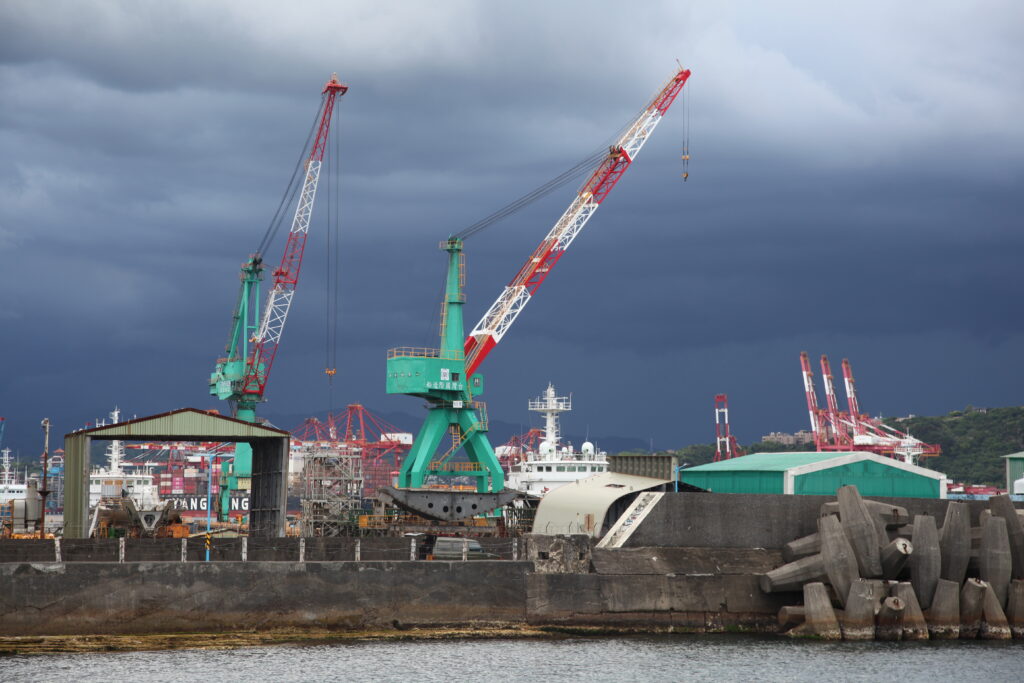
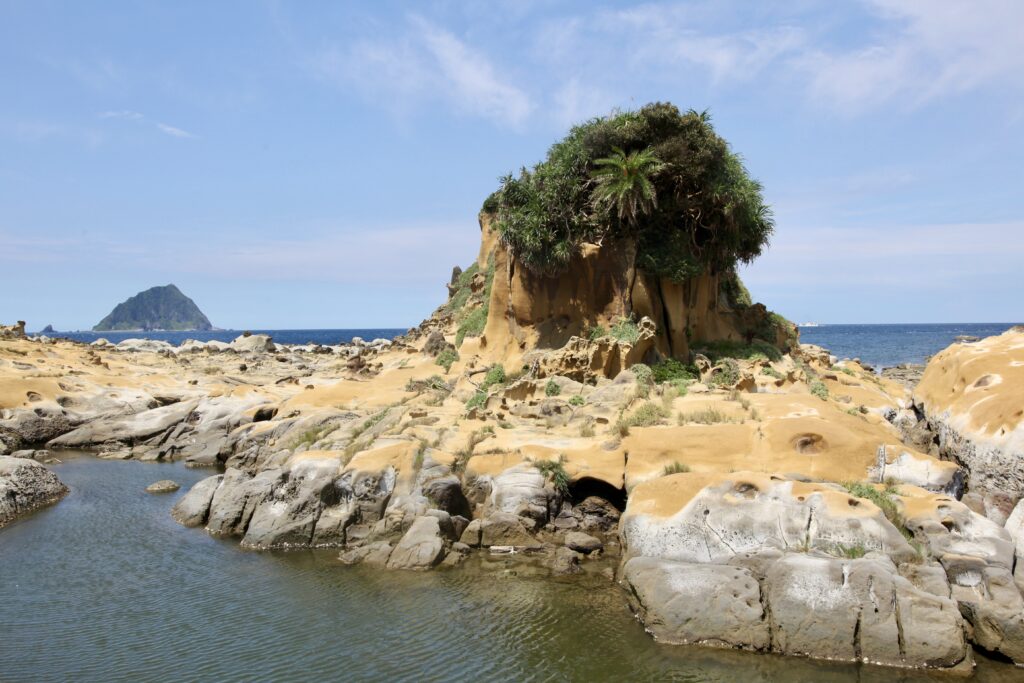
And, of course, the cities are alive. Thick with people. People on sidewalks. People on scooters. People on bikes. Packed subways. Cars and buses jostling for position. Everyone moving and trying to get somewhere.
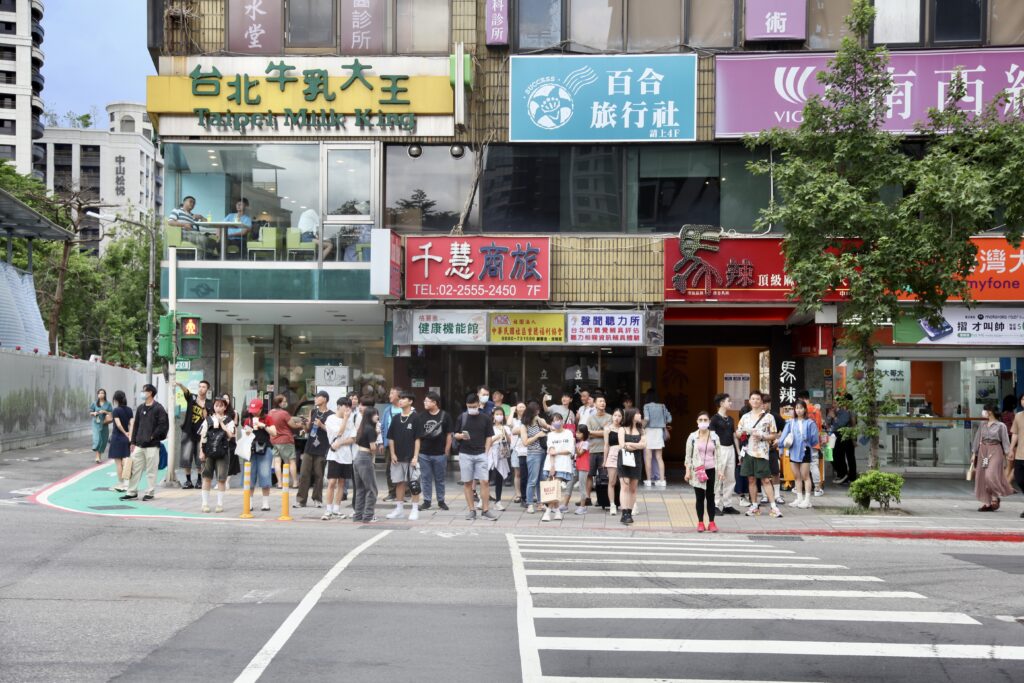
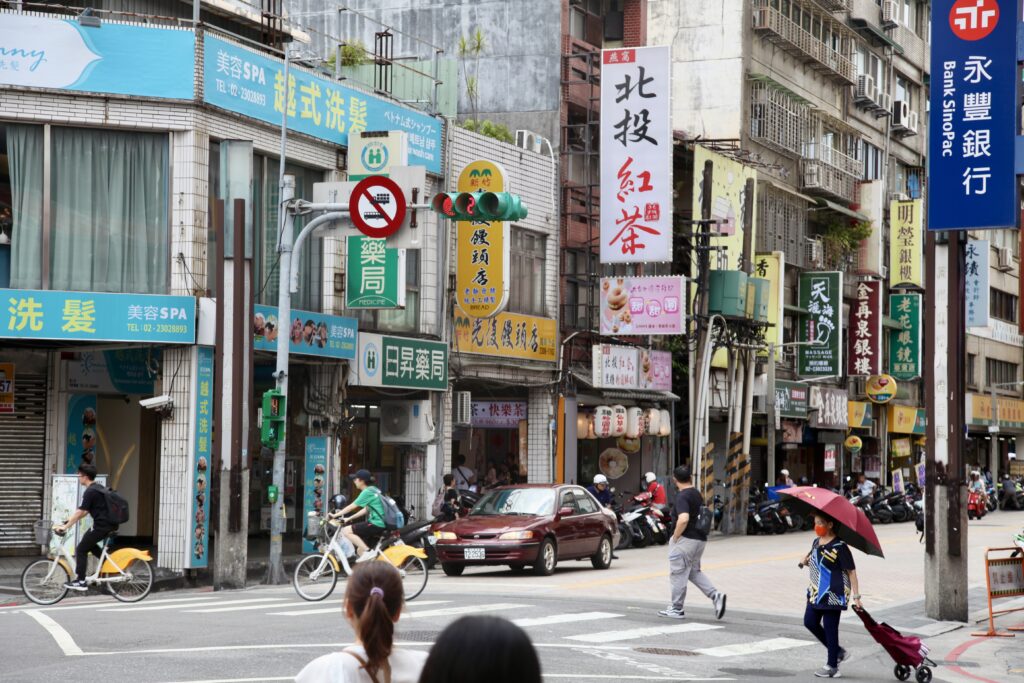
The density feels even more evident due to the very different approach to zoning taken in the cities. The population has tripled since 1950 and no more land has been found so this has meant building up. The skyline pushes upward and, as Taiwan gets richer, the oldest buildings sprout new neighbors that are an order of magnitude taller than the previous generation.
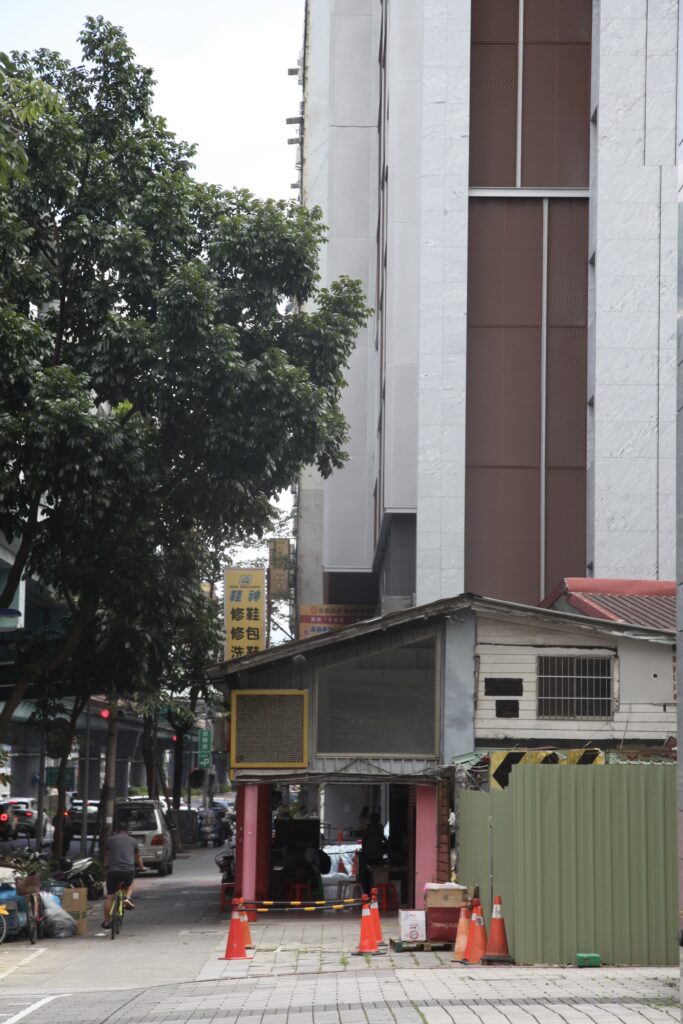
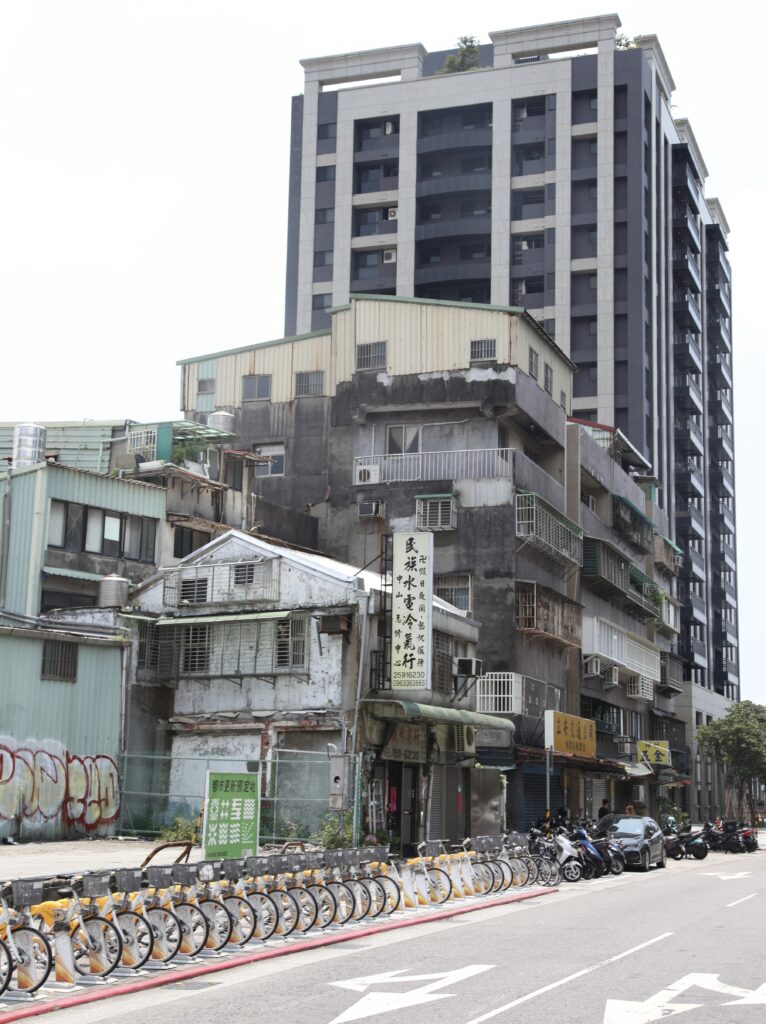
However this combination of incongruous scale and dizzying activity isn't chaos. There is flow to the cities and you can easily move. It's just that scooters will barge by you. Sidewalks will suddenly end - or turn into storage or a workshop. A car repair station is right next to a BBQ restaurant. All perfectly logical solutions to the problems raised by dense living and completely foreign to my current day-to-day.
If you enjoy exploring cities this makes Taipei and its cousins wonderful places to wander. High density means that most sites are hidden from view and that there is an immense amount of novelty to be discovered if you'll just take the time to walk around.
Streets branch into working alleys where lights, smells and sounds intrigue you. Snatches of a foreign everyday life echo.
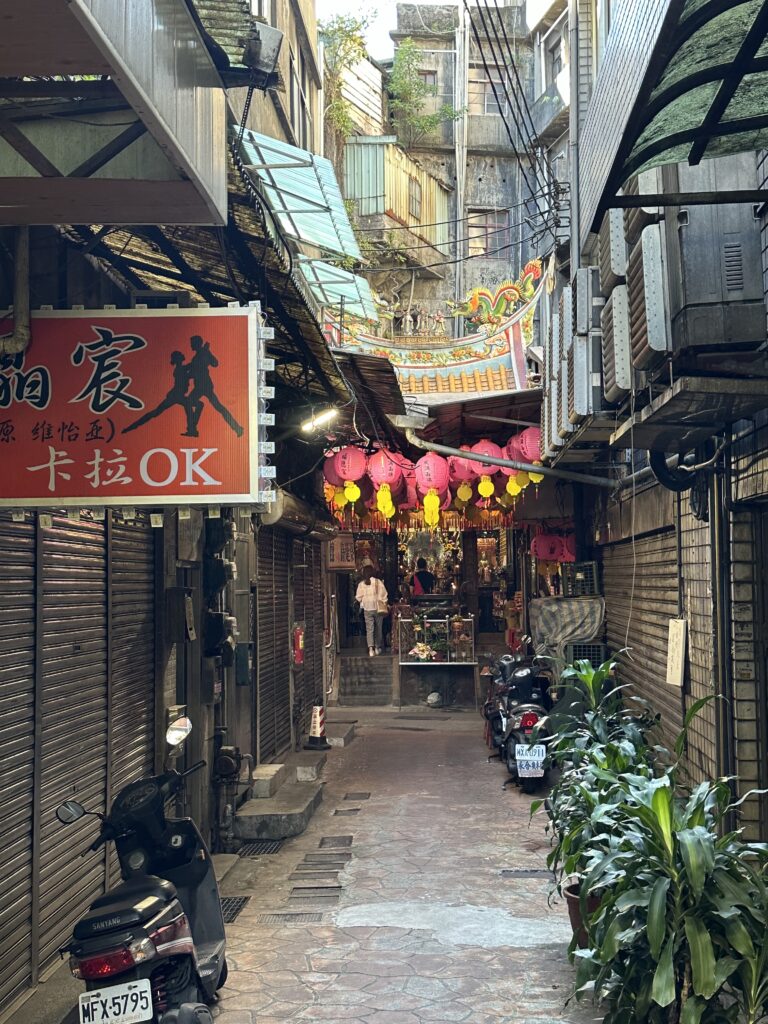
Open-doored temples are merged into the neighborhood scape and simply appear.
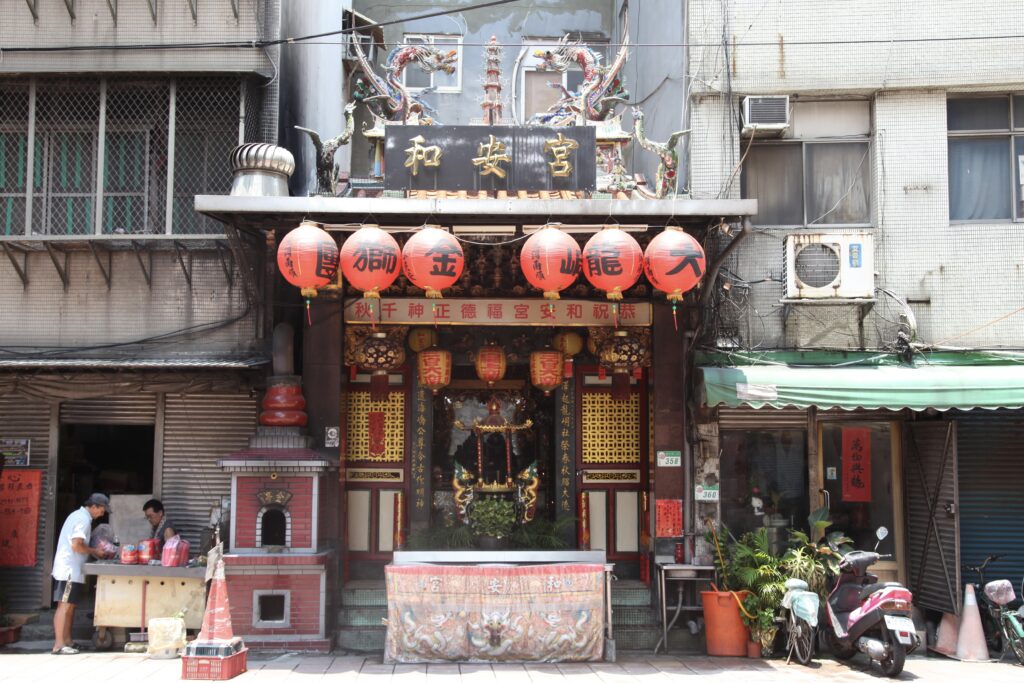
Parks with ancient banyan trees are hidden within neighborhoods.
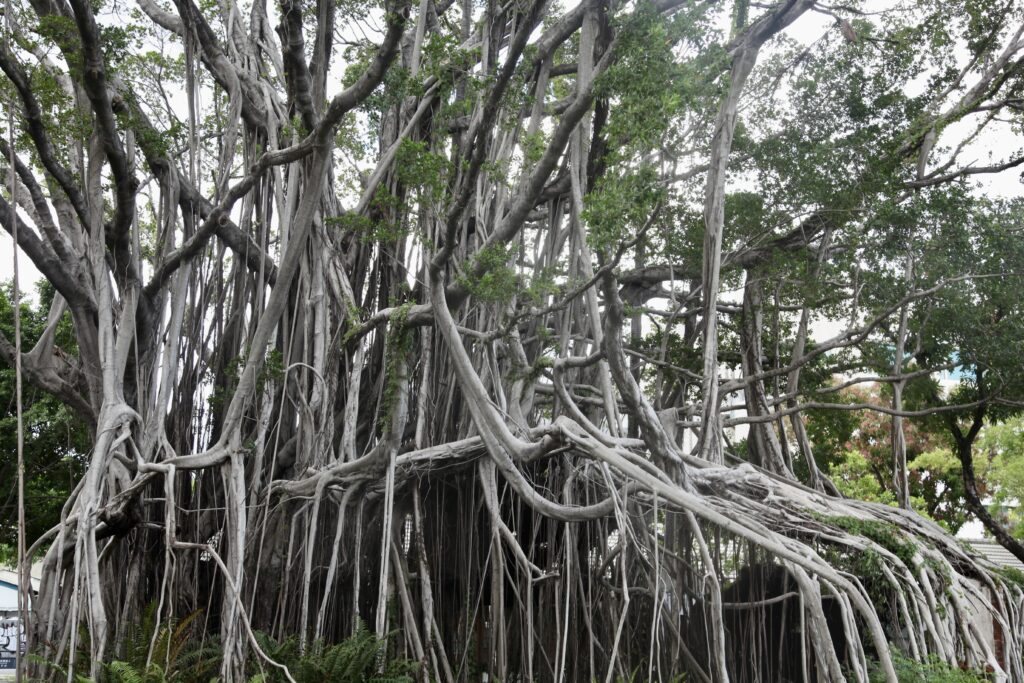
In older neighborhoods a trend emerges where stores are organized by purpose. You'll find the textile district. Dried fruit district. Hardware supply. Flagging and tape. Dried flowers. Gardening stores. Tea. Car repair. Moveable type.
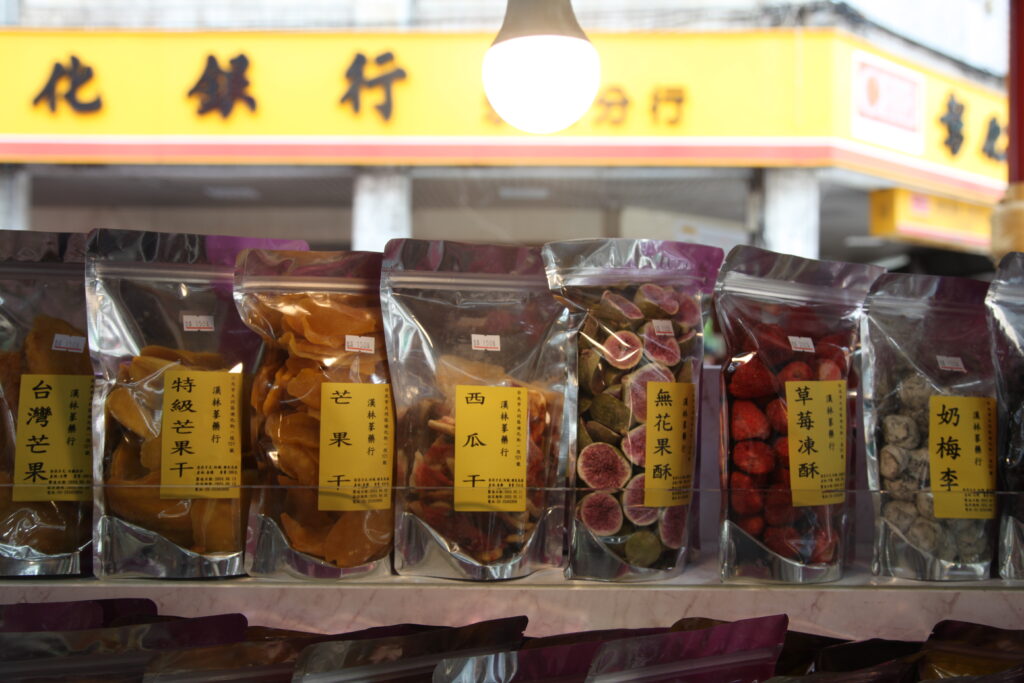
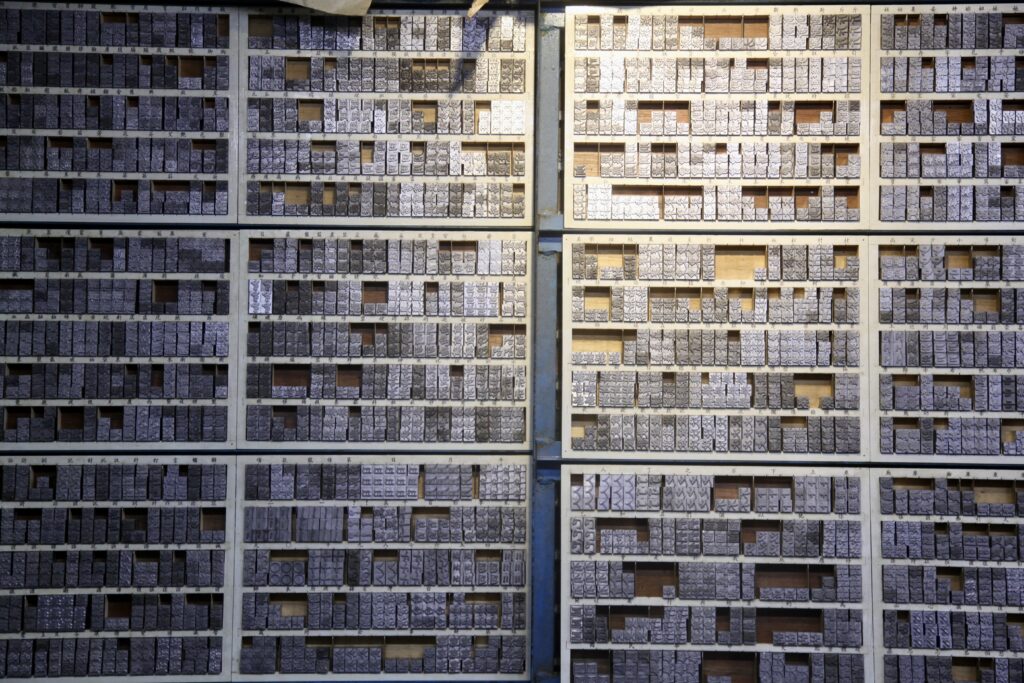
This feels like some sort of byproduct of density. If someone makes easy money then it's easy to see this and start a competitor right next door. And with fixed size storefronts, multiple competitors makes it easier for shoppers to find the full range of goods they need.
On side streets, tiny restaurants abound and spill into the streets. And due to the heat - more on that in a moment - there's a local architecture where sidewalks tend to be covered. Restaurants take this to the extreme, placing their hot cooking outside and reserving the interior for cooler seating. These are working sidewalks driving more density.
One additional note on the sidewalks: they are covered in potted plants. Everywhere you go, potted plants bring nature back into the city (and what a comment on social trust that people can do this and know that their plants will not be stolen). Another form of density.
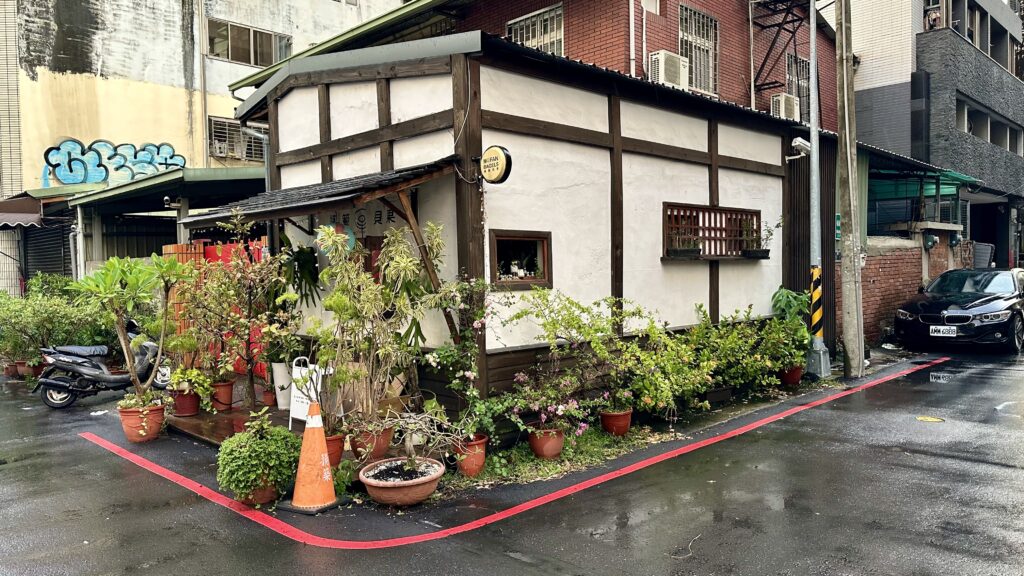

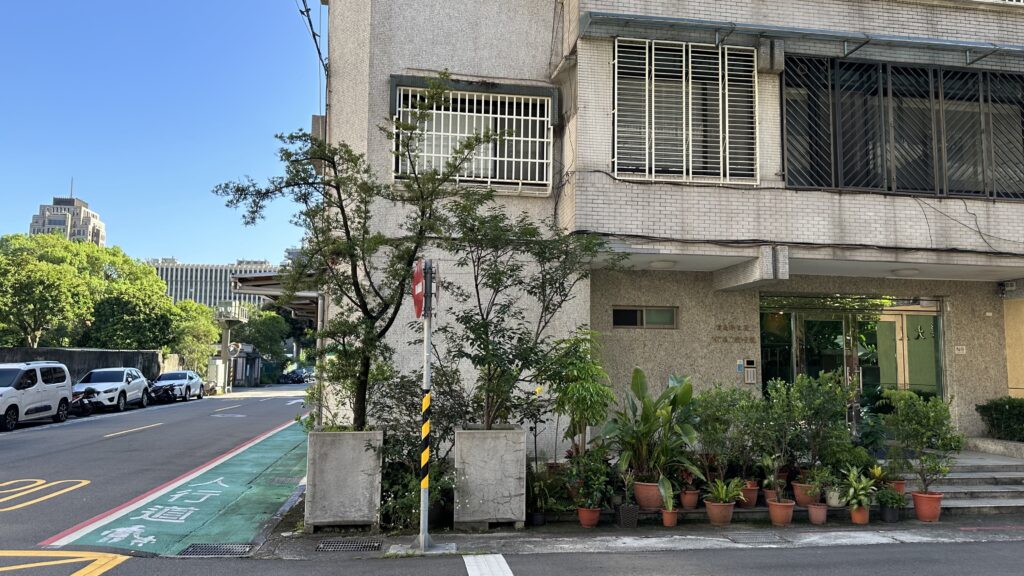
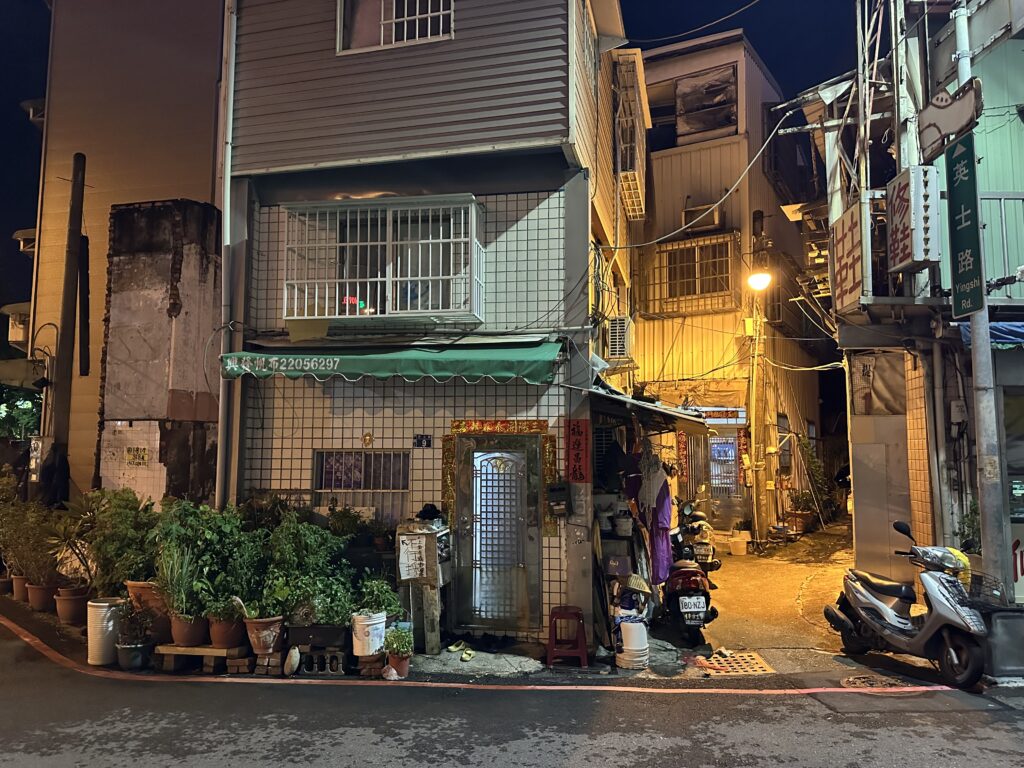
Sidebar: this plant trend is also reflected in the modern architecture. Taipei and its cousins are modern cities and trend seems to be to include as much plant life as possible in buildings.
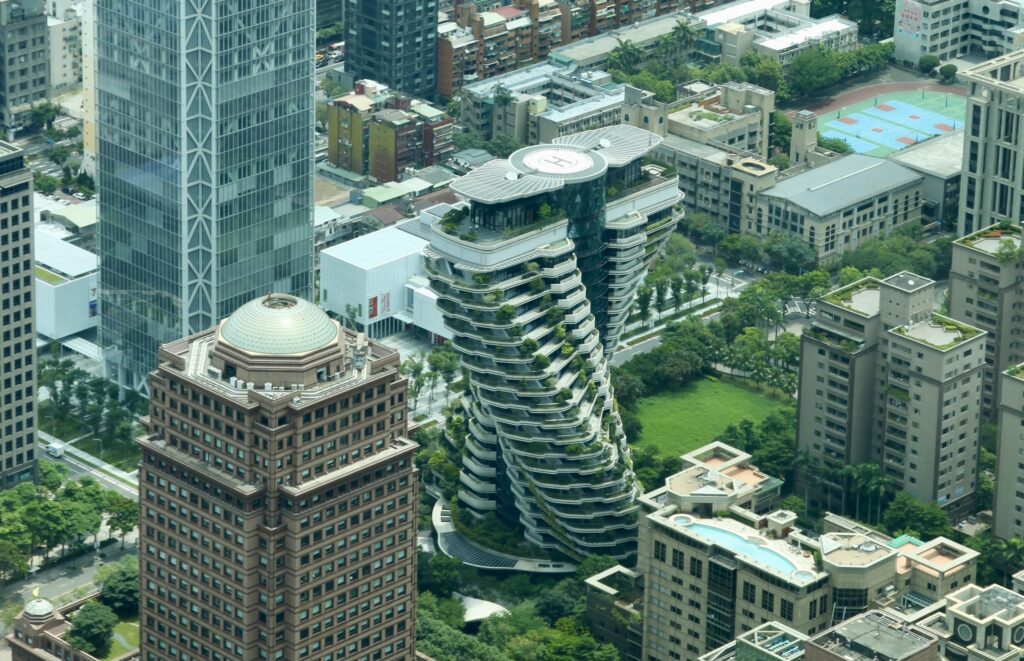
Maybe this is all a way of acknowledging that this is a subtropical island and the jungle will take back everything. It is always there, looming at the sudden edge of town and reclaiming old buildings.
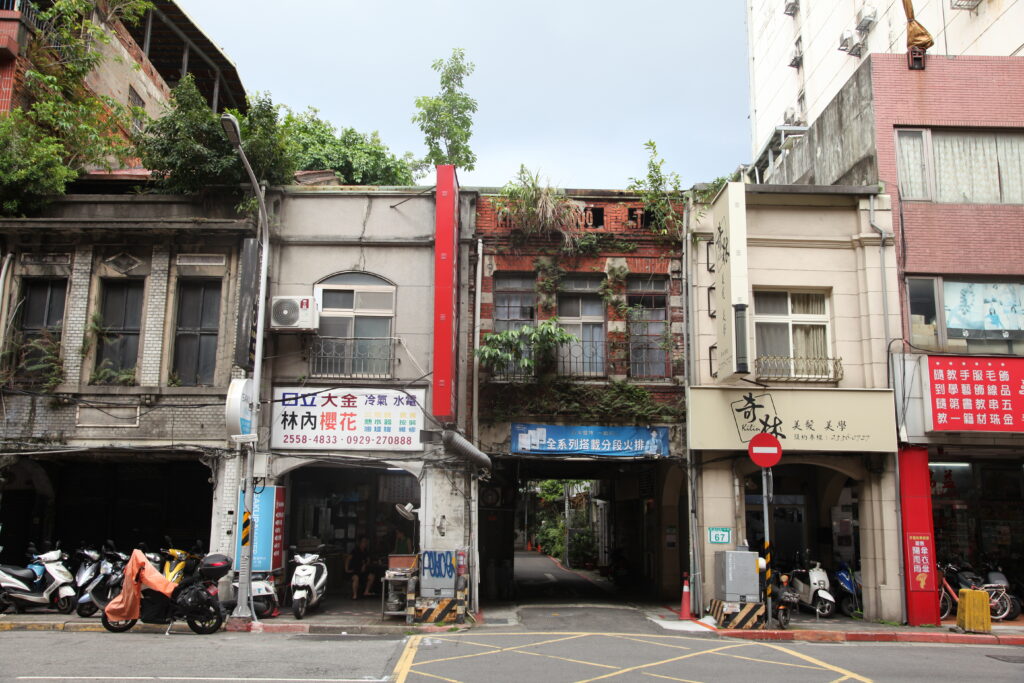
Density has also affected Taiwan's demographics. As it has urbanized its population growth has stalled out and it may begin declining in population as soon as this year. You'll see both young and old everywhere in Taiwan but there is no longer an ever-increasing pool of young, cheap, strong labor entering the workforce.
Fortunately, Taiwan has a solution for dealing with this: technology. Through the most sophisticated semiconductor manufacturing on earth they have a glimpse into what is possible when you have cheap, powerful, ubiquitous chips and they have put it to use.
The result is simultaneously amazing and banal.
Consider how a parking lot in Taiwan works. You drive up and the gate just enters. There is no taking a ticket or similar. Ditto upon exit: you drive to the gate, it opens and you exit.
How does this not result in rampant abuse? It's not due to "social harmony" or similar; it's due to cheap cameras and artificial intelligence.
As you enter, you license plate is scanned - or in some cases you just enter and there is a camera in each stall.
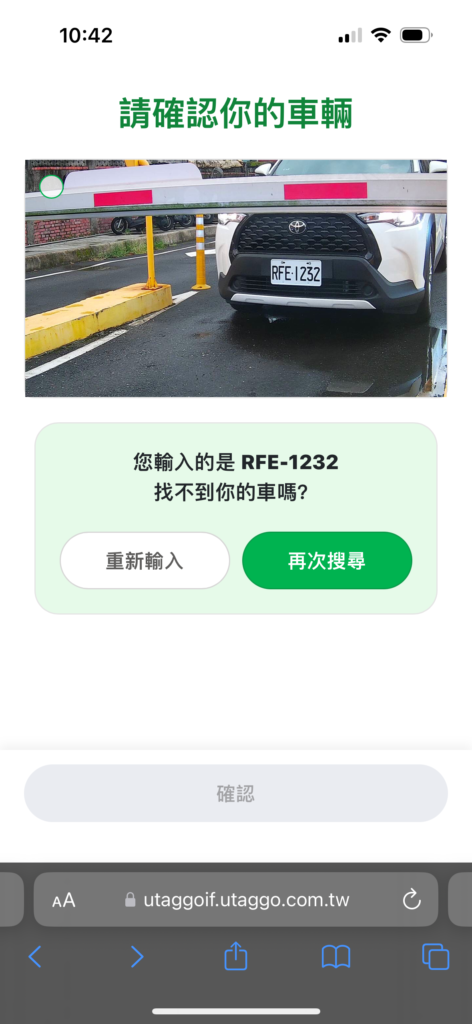

You then type your license plate into a kiosk, it calculates a price and you pay. The system scans your license plate on the way out (yet another camera!) and compares that with the receipts to make sure no theft has occurred. There's no need to stop you at the exit; they know every detail of you.
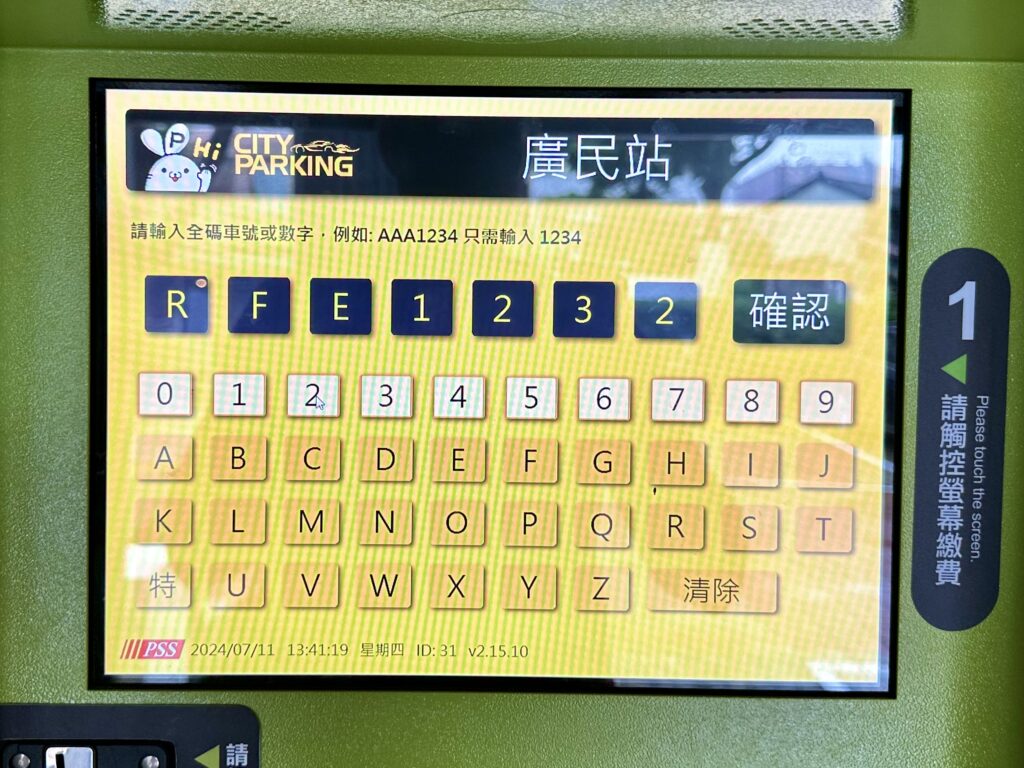
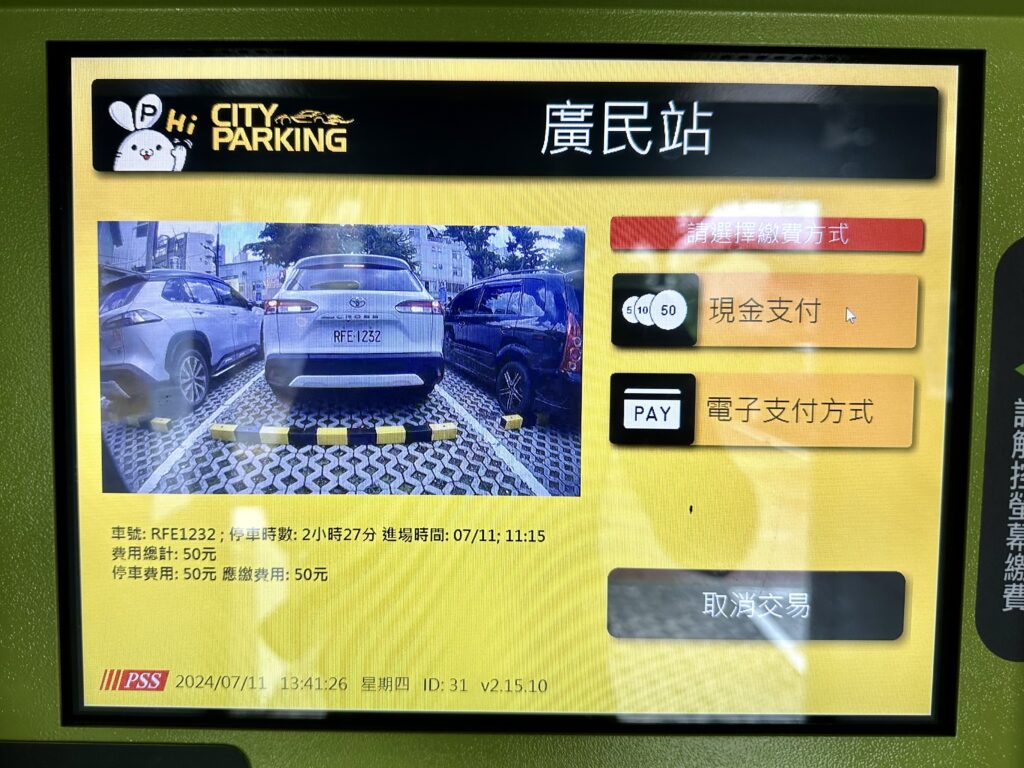
There's not a human involved at all. I think I saw one parking attendant on the entire island.
Labor-saving abounds. The national highway system is tolled and the only way to pay is via an RFID tag in your car. In our case, we simply drove and settled up with the rental car company at the end (and the tolls are cheap - it cost approximately $20 for several hundred miles of tolled driving). As we drove along the highway we could actually see old toll plazas that have been abandoned; the highways now reroute around them and grasses grow in old guard shacks.
Don't be surprised if you go to a restaurant and order via a QR code. Not just to see the menu but order to the kitchen. We didn't realize this was how it was done and only learned about it when a waiter came by to ask us if everything was okay.
Related to this, QR codes are used to pay for everything. Nobody needs to use cash anymore in Taiwan and there are countless ways to pay.
It's not Visa, Mastercard and American express but Line Pay and a dozen others you've never heard of. You simply figure out your bill and then send money; flash your receipt to get your goods. Here's how you could buy at a food cart (!) in Taipei:
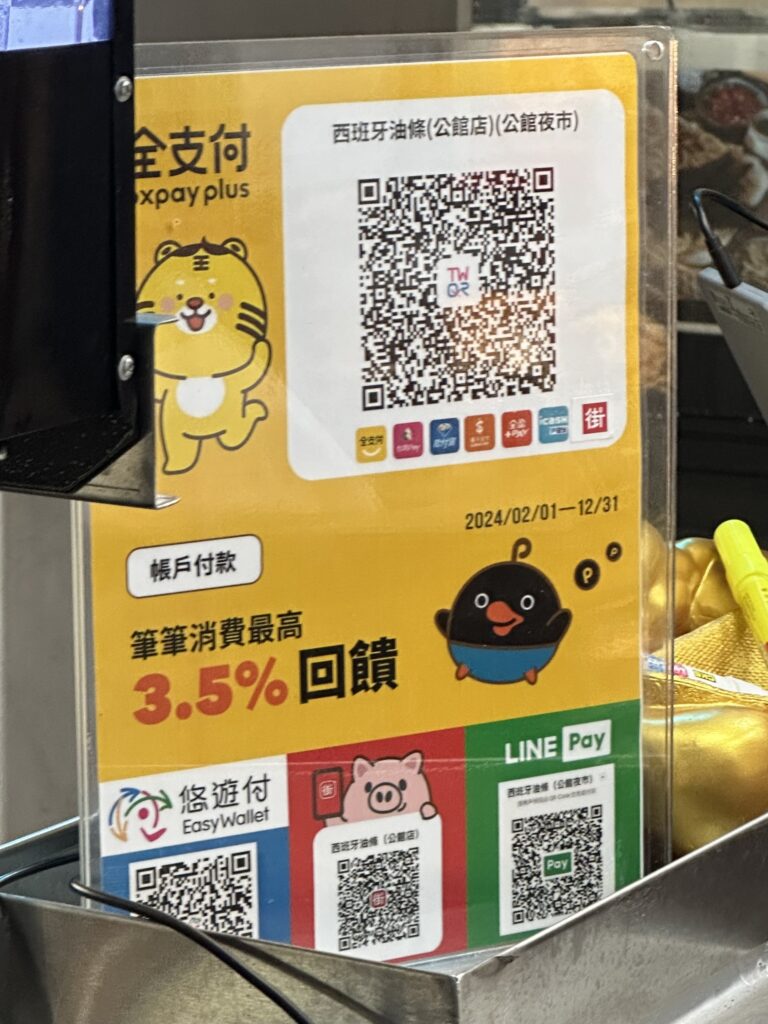
There's no way that these folks are taking the same $0.25/2.5% they get in the US; many times people are digitally paying for things that cost $1-2 USD.
The grandest implementation of this technology-replacing-humans though is likely via the Taipei police. There are multiple security cameras at every intersection and rather than staff up they have built a digital twin of the city to enable remote policing. The city is a benevolent panopticon (nobody loses a phone); it's also easy to imagine how this technology could be misused.
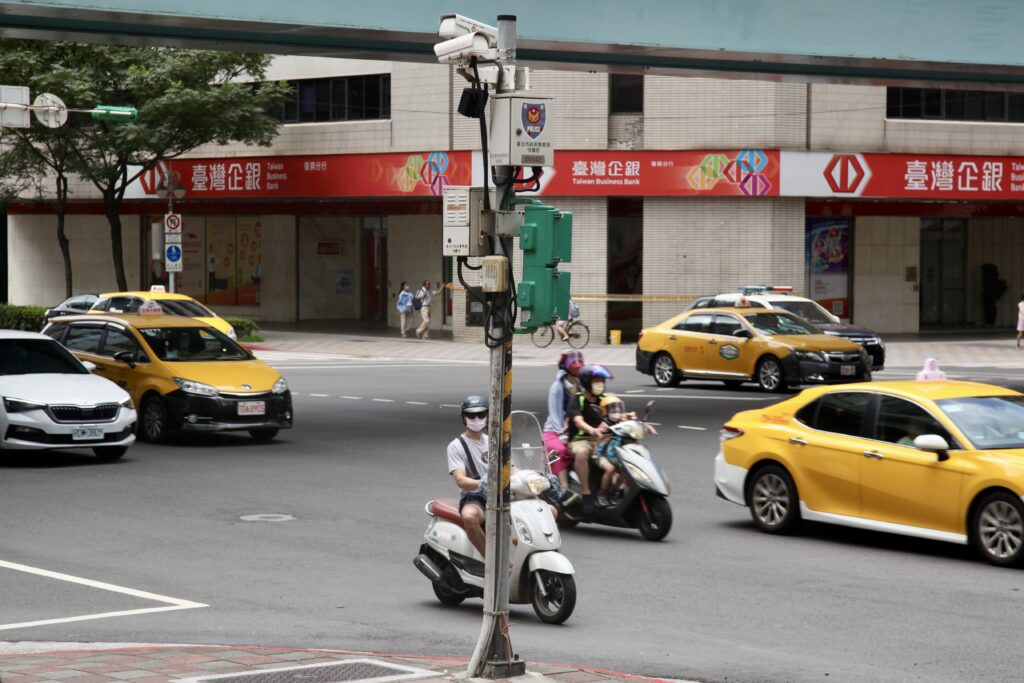
A side effect of density is that there is less personal space for everyone. Everyone in a Taiwanese city appears to live in an apartment and most don't seem overly spacious. As a result, the city is full of third spaces where you can be alone in public.
This is most notably reflected by the coffee culture. There are cafes everywhere and they are almost always full. You pay a slight $5-10 TWD (\<$1 USD) premium for a "to stay" drink and some are explicit that there is a 60 minute maximum.
More importantly, there is incredible coffee everywhere and a plethora of beautiful cafes.
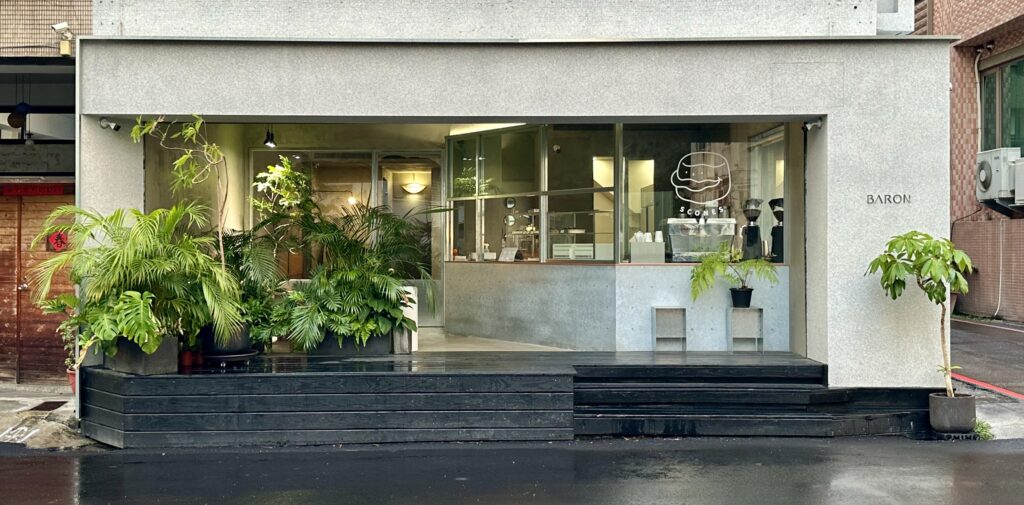
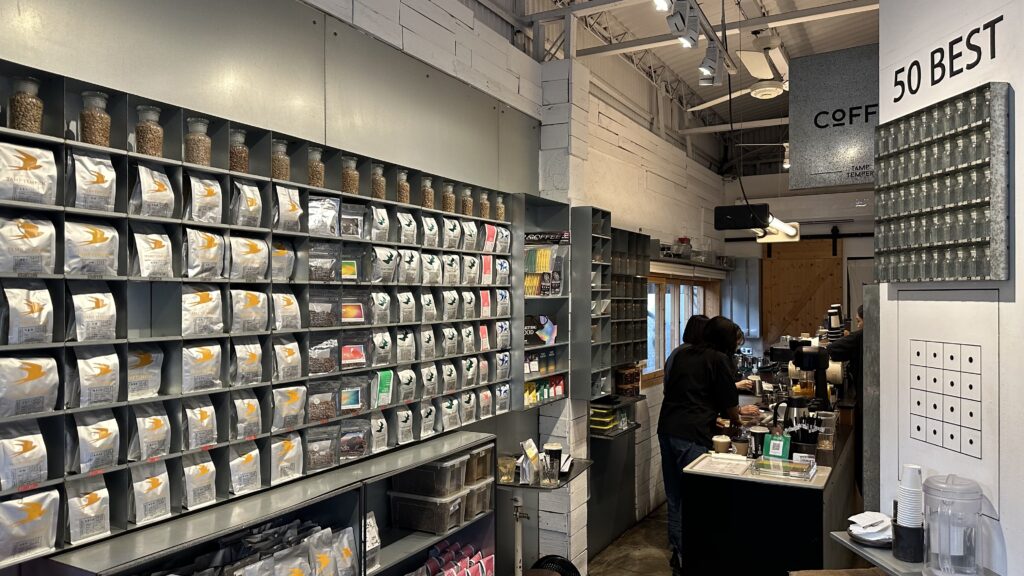
Many of these cafes conform to the international coffee shop chic - a lot of white and bright wood tones plus some potted plants. However, there's a definite trend in Taiwan to adorn your coffee shop with little characters. I'd love to know what cultural history has been transmogrified into this.
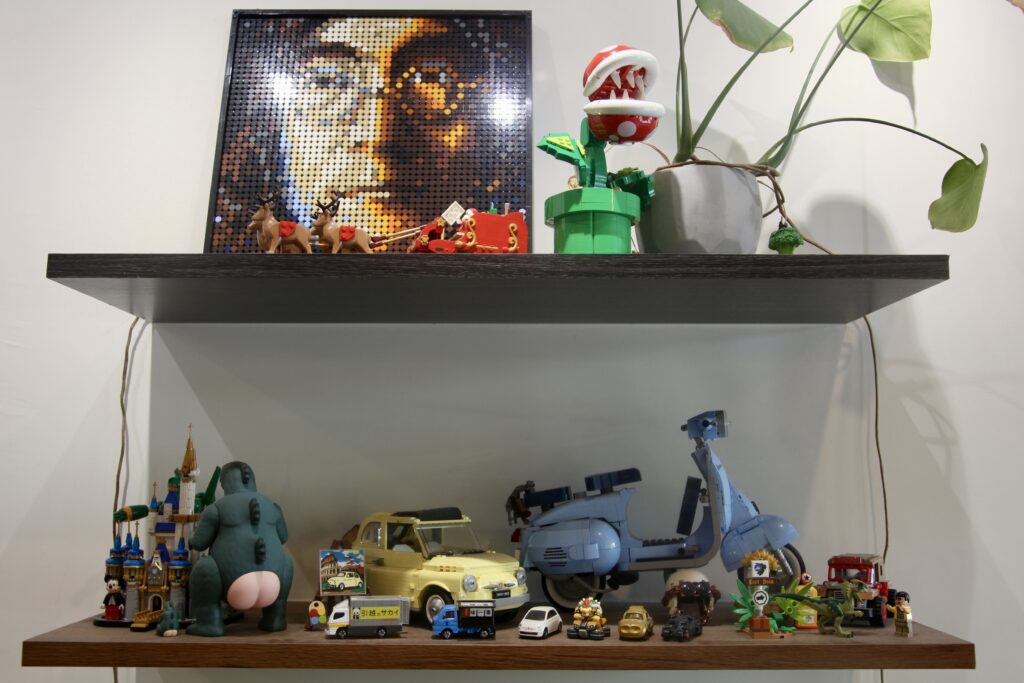
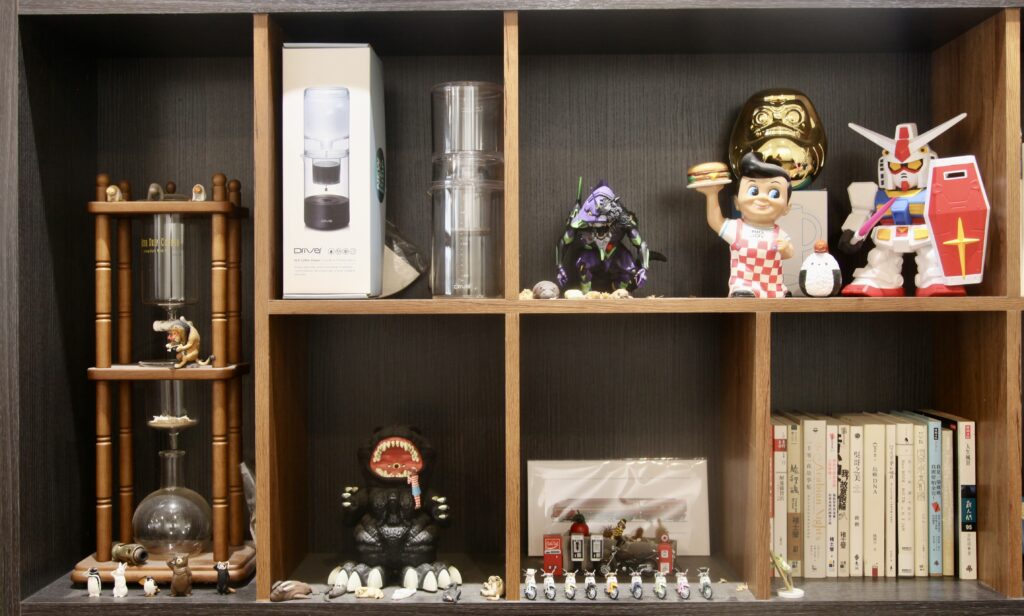
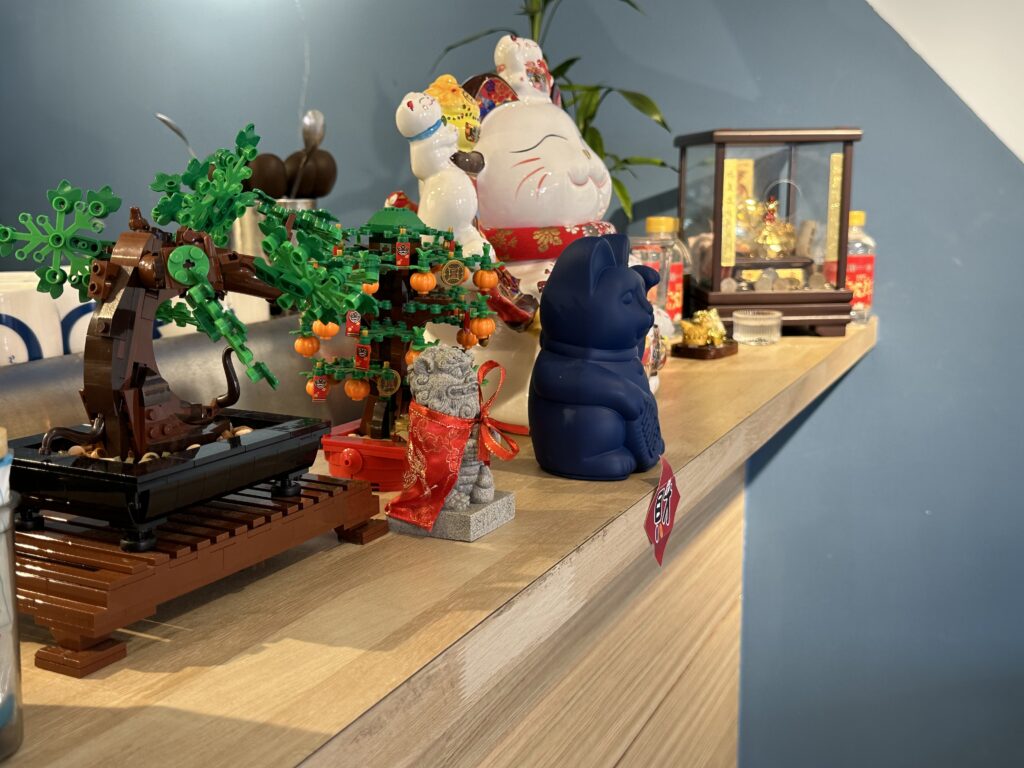
The other third place is the convenience store. 7-Eleven. Family Mart. The others. All have at least one or two bars or tables - and they're always occupied. Everyone is alone in public.

It's worth talking a bit more about convenience stores and how this dense island gets fed. It seems to be a combination of cheap restaurants, market stalls and convenience stores.
There are convenience stores everywhere. We literally found this area where there are two Family Marts across the street from one another:
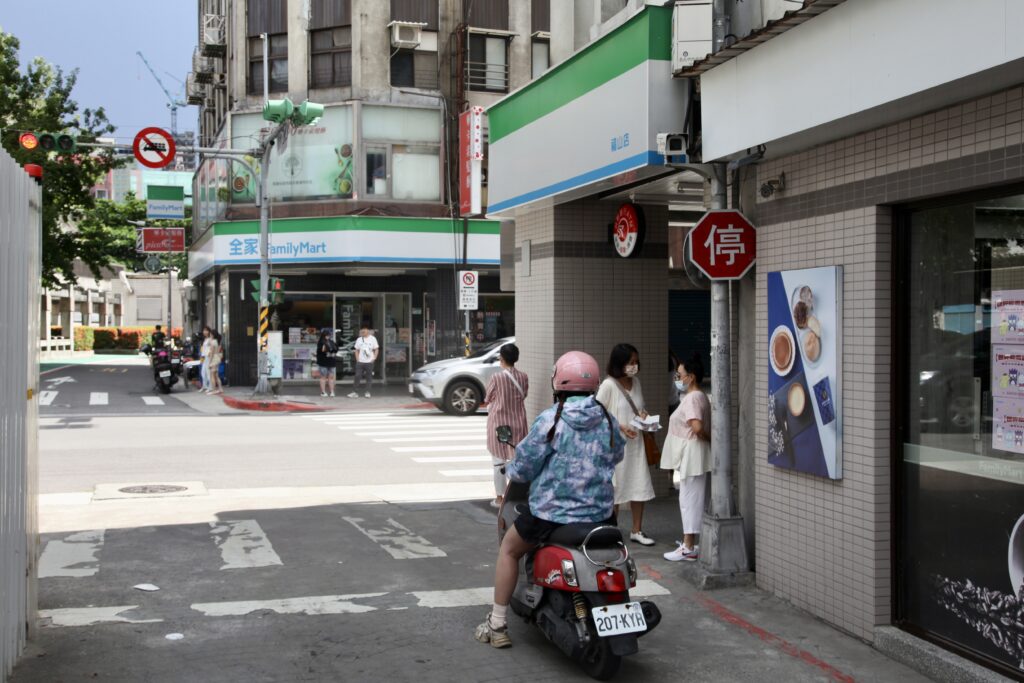
Convenience stores here have an incredible selection of food. There are warm foods - with local flavors like sweet potato and boiled eggs:
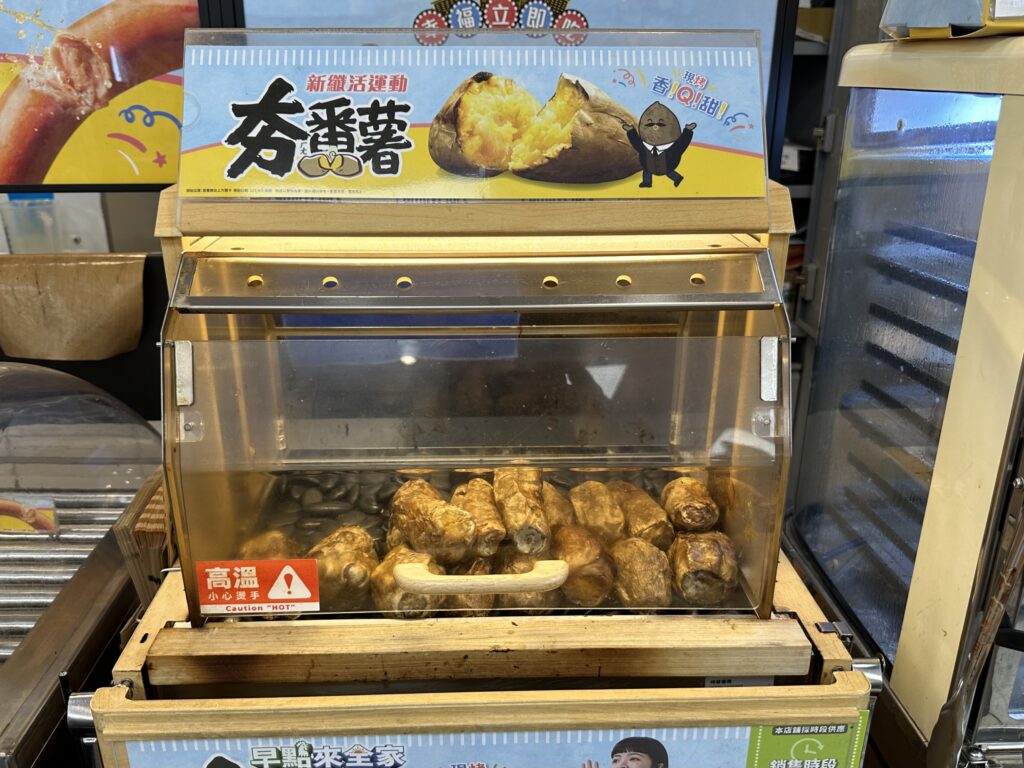
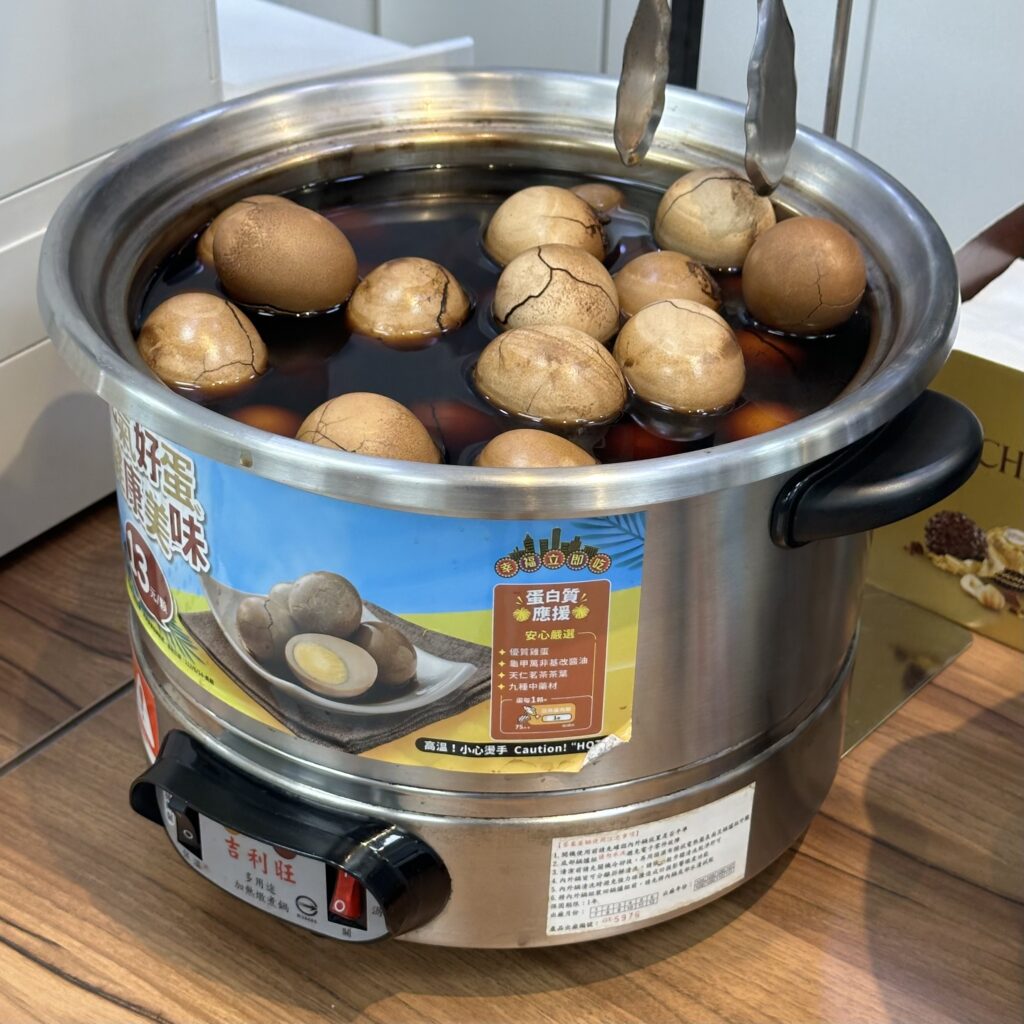
Followed by an assortment of single/double portion frozen and premade meals. For most people, it appears to play the role of grocery store (and one with an incredible selection of juices and crazily flavored chips):
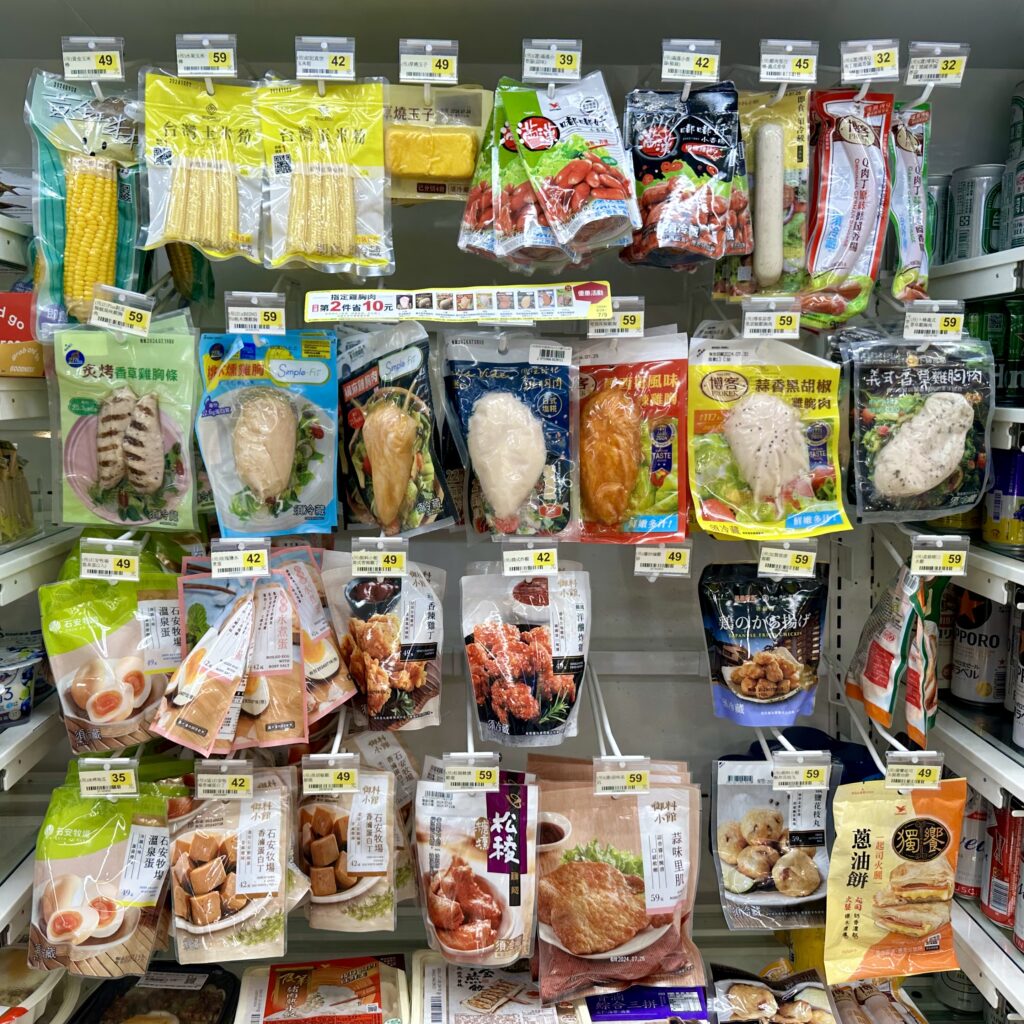
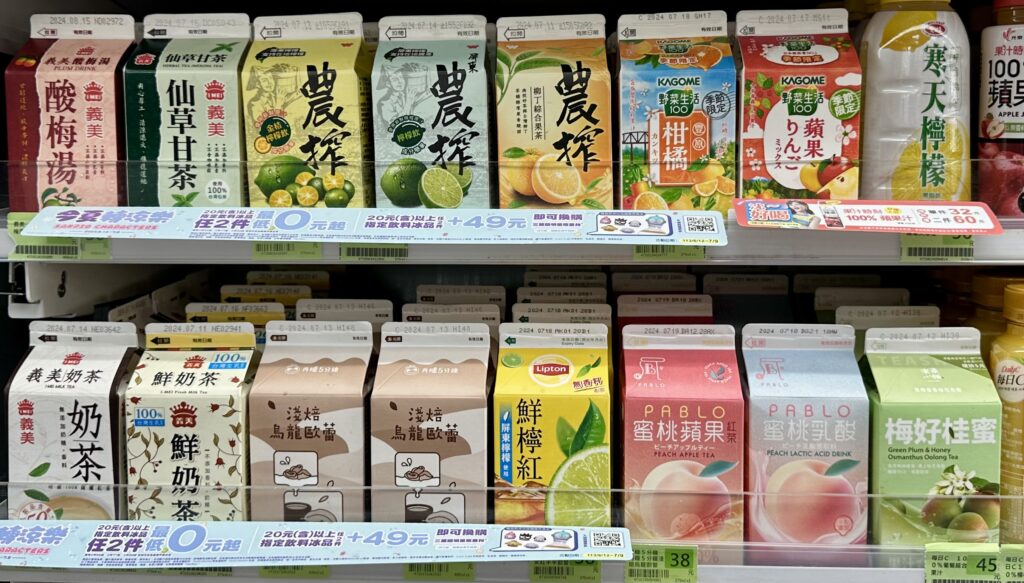
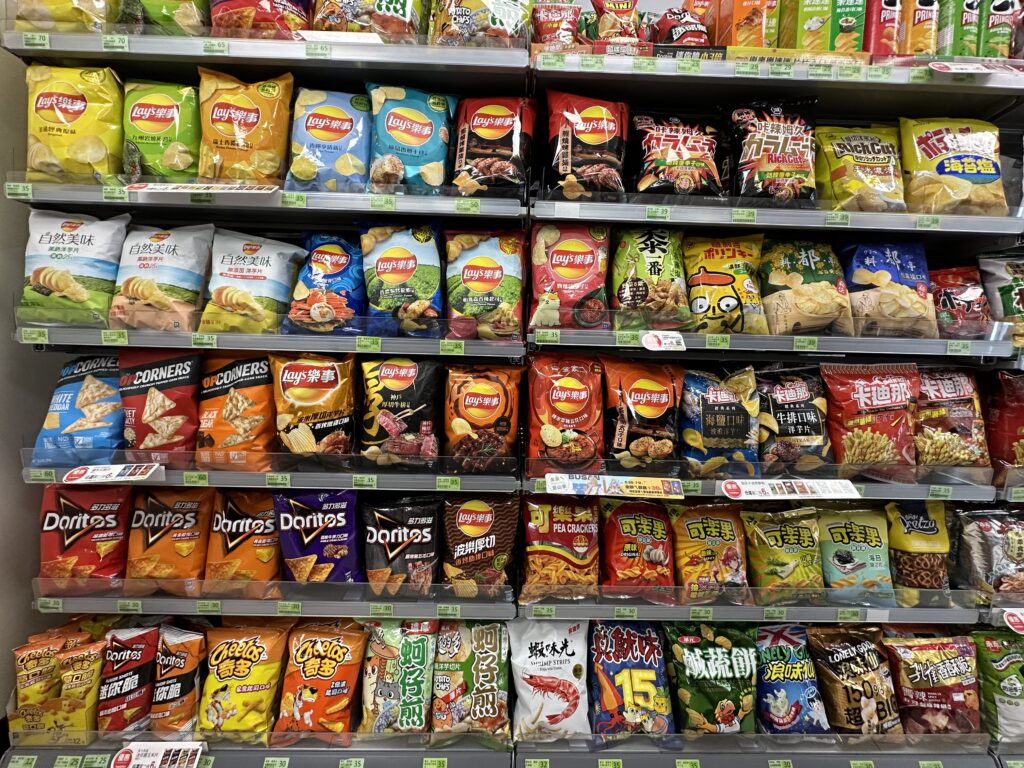
It's fascinating how the combination of density, no one owning a car and (I'm guessing here) that historically a lot of folks didn't have refrigeration/it's so hot nobody wants to cook at home has led to a unique and vital role for convenience stores in Taiwan. A 7-Eleven in Seattle is a depressing experience (my local one was burned down) whereas we would legitimately get excited to try the food in a rural Taiwanese 7-Eleven (one hotel we stayed at gave up on breakfast and just gave everyone vouchers to the neighboring 7-Eleven).
The other way folks get fed appears to be via a plethora of markets and cheap restaurants. In some areas it seems like 50% plus of the storefronts are inexpensive restaurants where you can buy several dumplings for a dollar or a similar type of food:
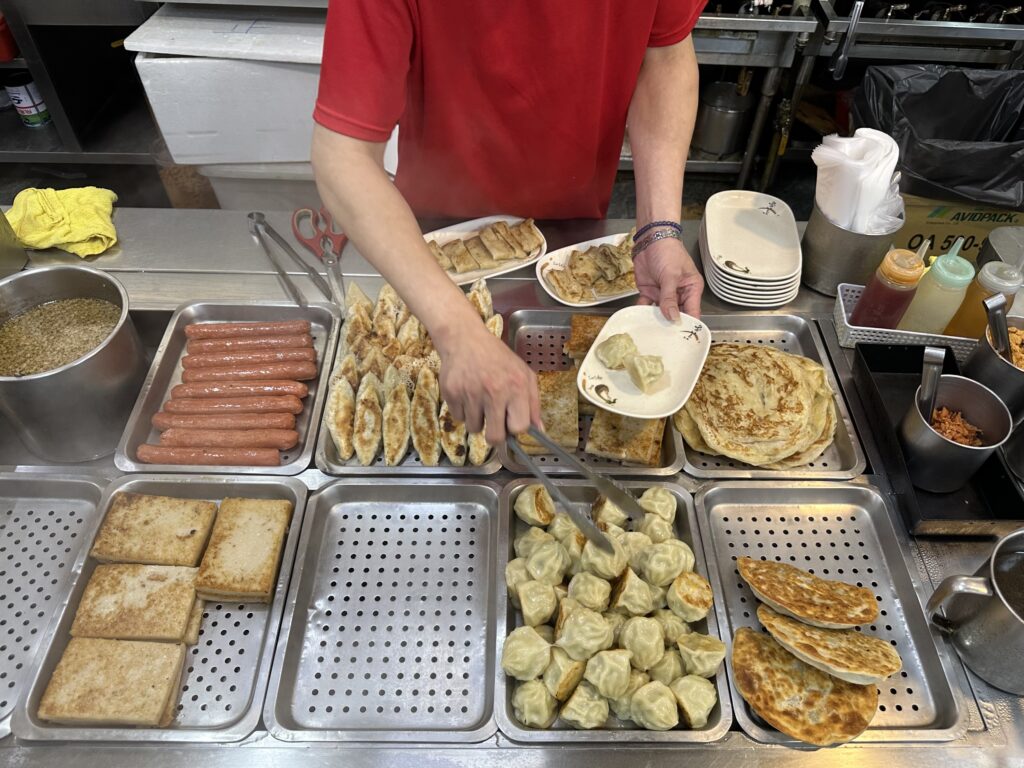
There are also night markets are chock-a-block with carts selling delicious and cheap food. We went to one Michelin-reviewed cart that sold the best green onion pancakes I've ever had for less than $1. As a foreigner this is incredible; as a local this is just how one eats.
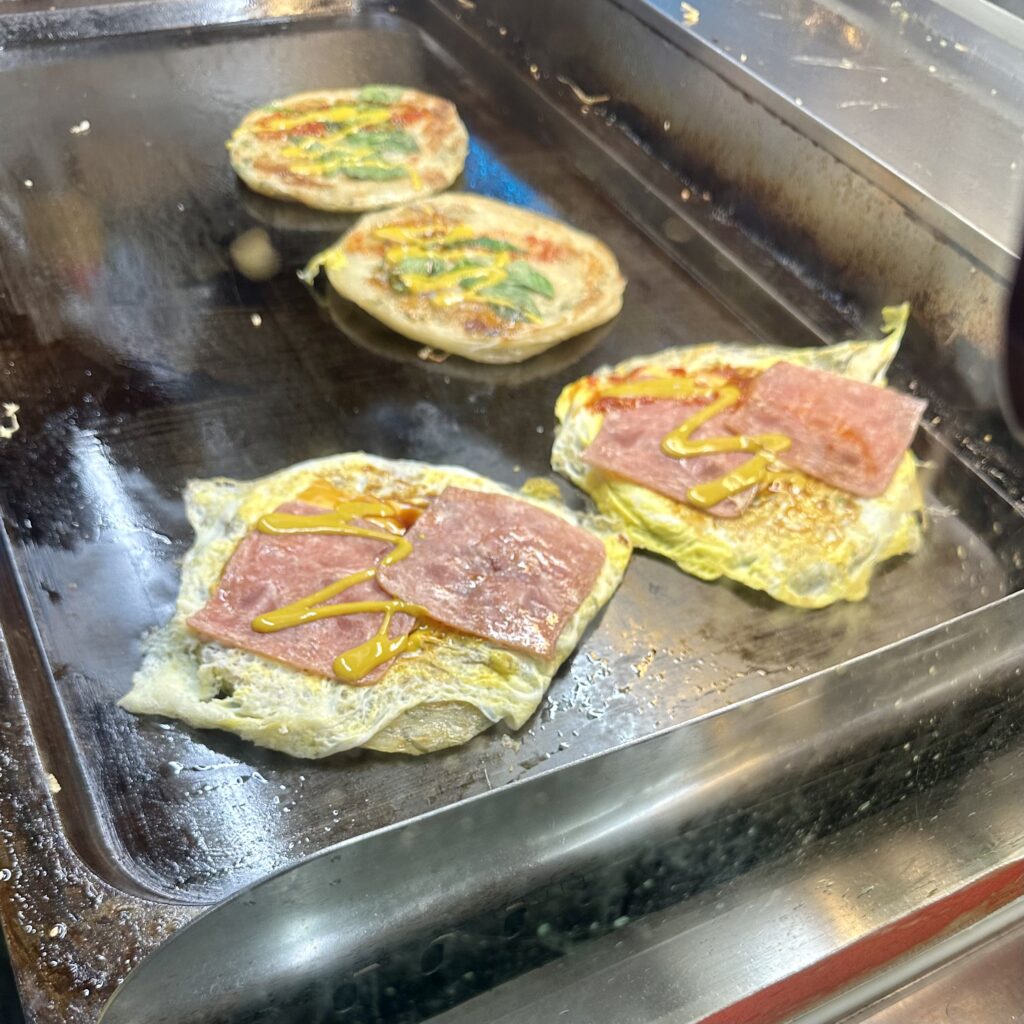
Needless to say, the Taiwanese are incredibly (and rightfully) proud of their food. And they come out for it: the night markets are packed every single evening.
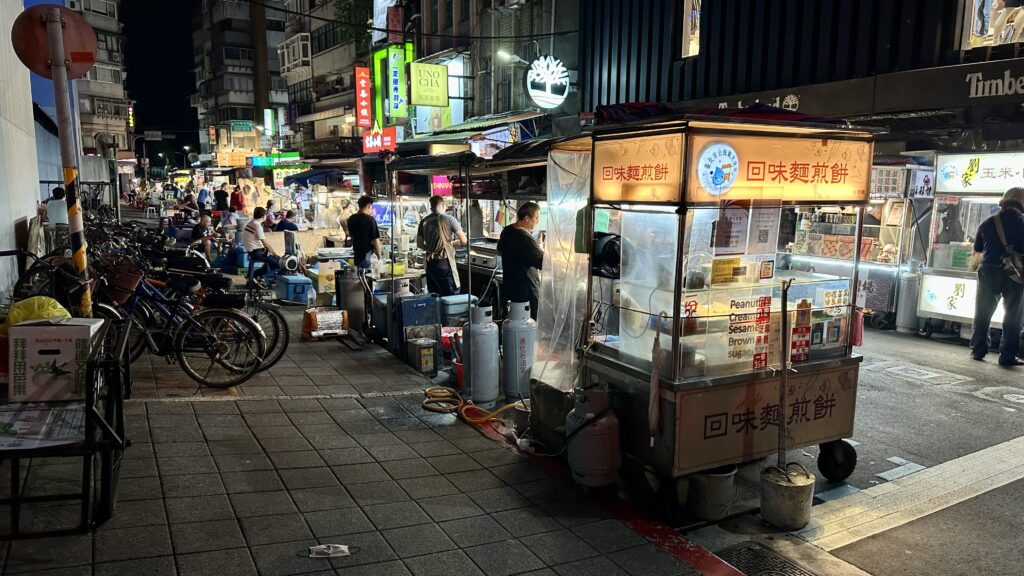
All this talk of density may seem off-putting, as thought this is a concrete island and just one giant megalopolis. But what's amazing is that it's not. What is confounding is how things are either dense or empty. Half the island is rugged hills covered in impenetrable jungle. Taiwan's population is 1,680 people per square mile but it feels like it's either 3,000+ in a city or zero when you get outside a city.
And it's easy to get outside and experience beautiful wilderness. 90 minutes outside of Taipei is one of the greatest "swimming holes" I've ever seen. I'm using air quotes because there's a wicked current that will test weak swimmers but it's the local version of a swimming hole - at 8:30 in the morning the local teenagers were already lining up and jumping off cliffs.
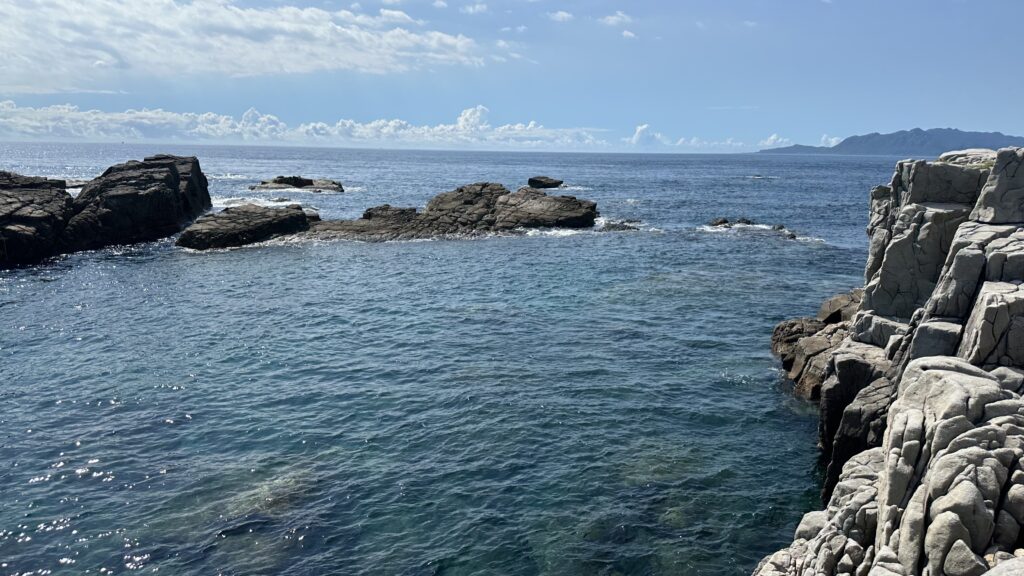
Visit a hill town and watch the fishing fleet go out to sea a the sun dips over the horizon.
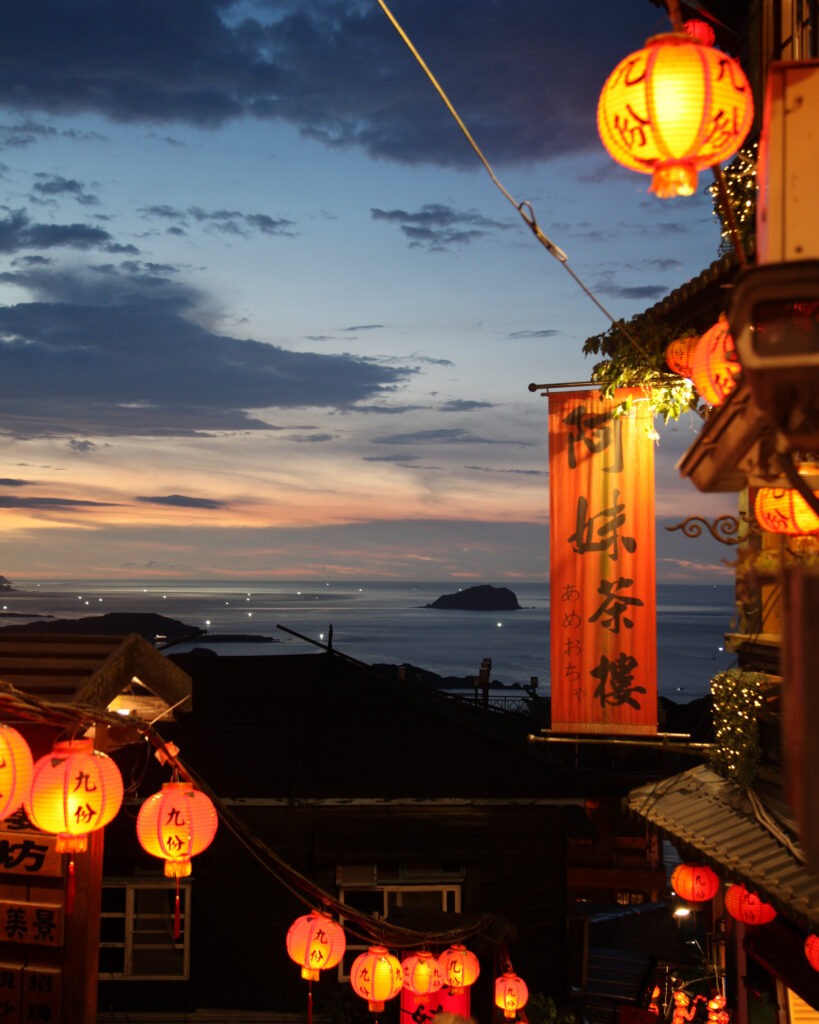
In the central mountains on a weekday you can find beautiful forest that's not too heavily trafficked (I fear it may be mayhem on weekends). Walk through a bamboo forest by yourself.
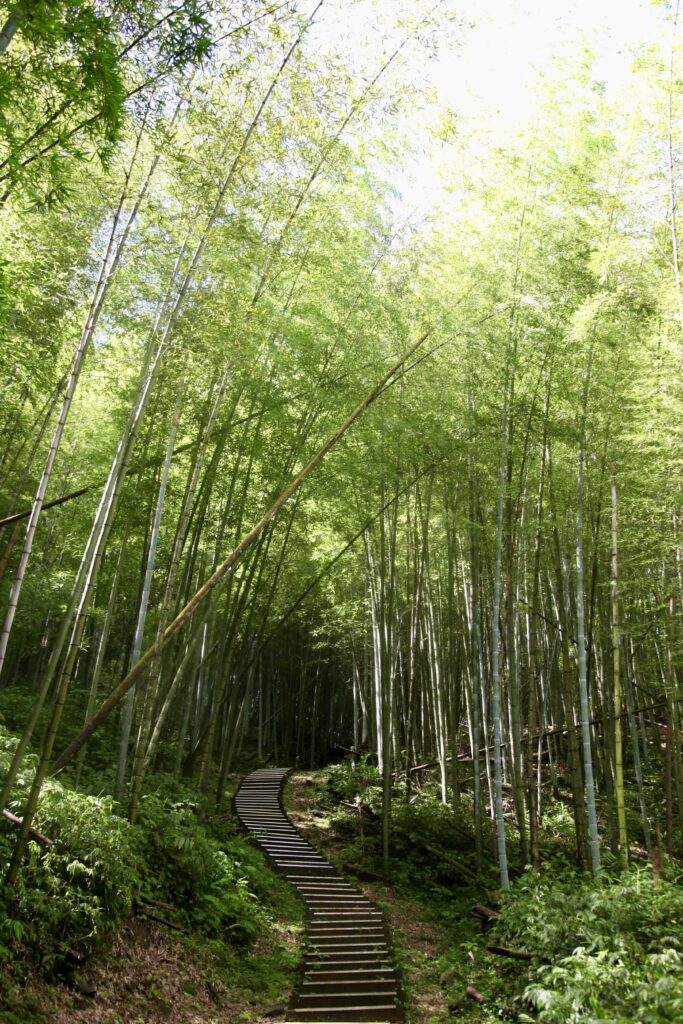
Watch clouds roll across limestone cliffs.
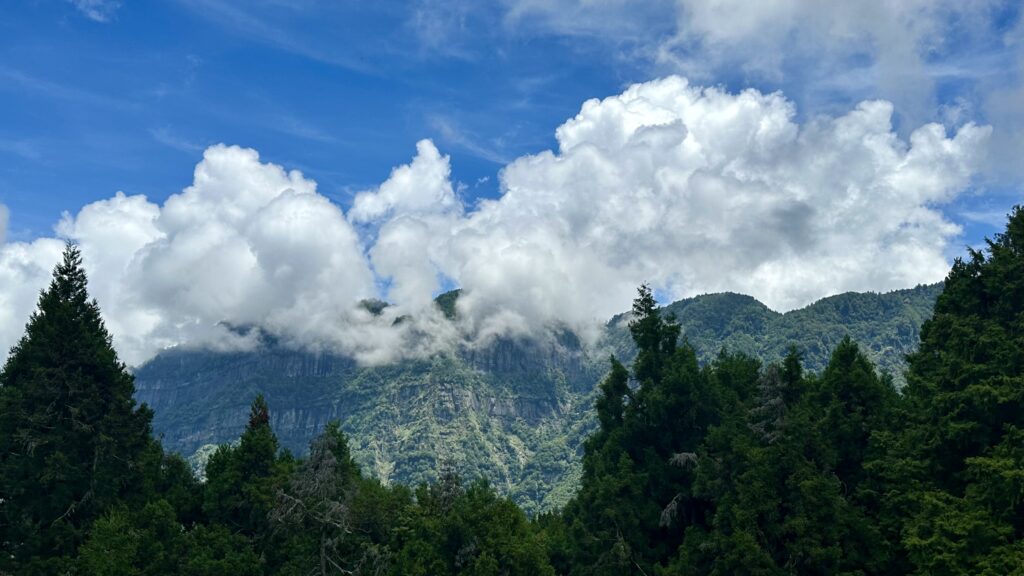
Chase fireflies at night in a cedar forest.
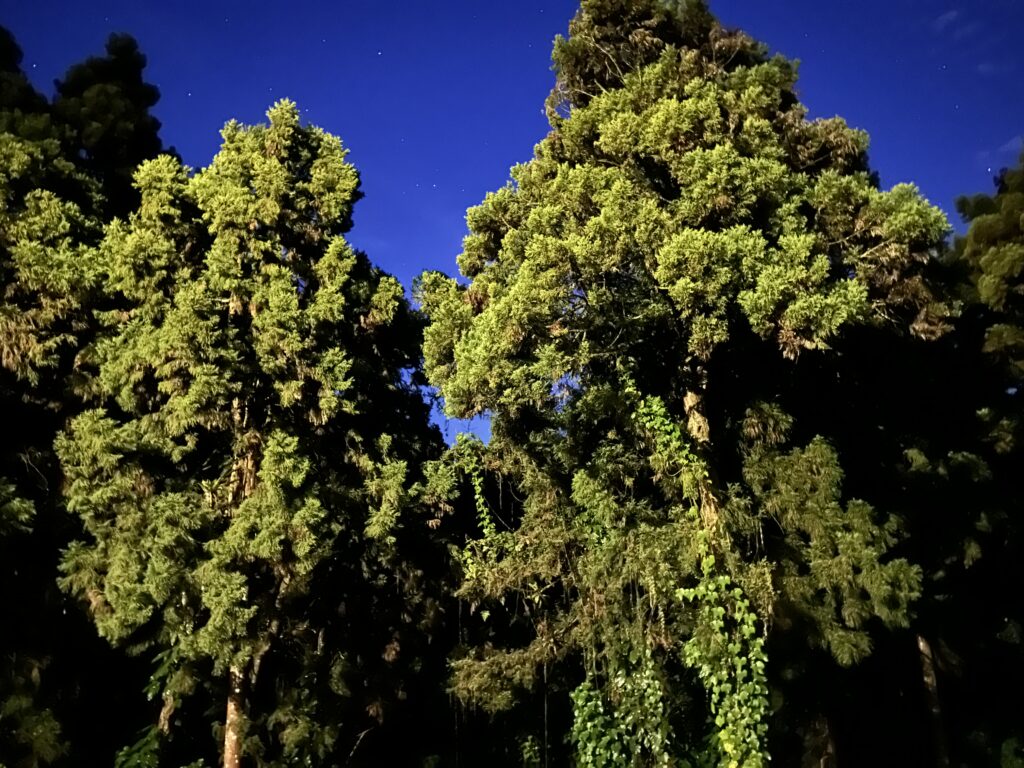
Discover 2,000 year old cypress trees nestled into a mountain valley.
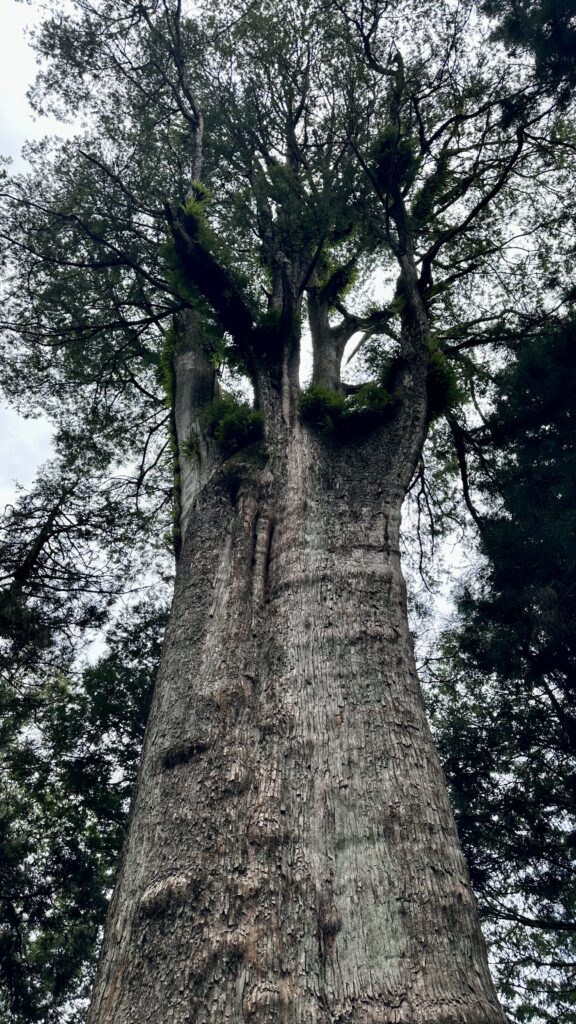
In full Taiwanese styles, each of these is a small, dense experience. There's not an endless expanse of bamboo forest or fireflies or ancient cypress, rather they're all growing in a tight little area you can visit. On this island, density abounds.
2.
If you had one day in Taipei, here's what I'd recommend to get a great taste of the city.
Get up and take the red line to Yuanshan station. From there, walk west to the Taipei Confucius Temple and the Dalongdong Baoan Temple. Both are beautiful and the latter is filled with incredible craftsmanship. The level of detail in the carvings and paintings is incredible; the effect of layering gold and stone and red-painted wood and orange roofs is mesmerizing.
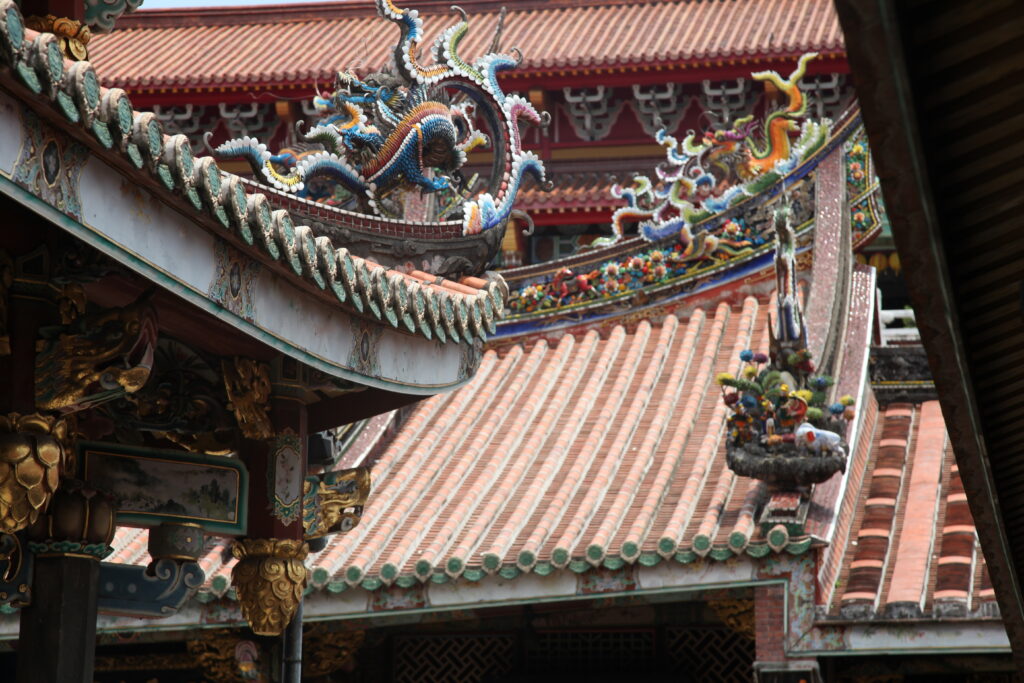
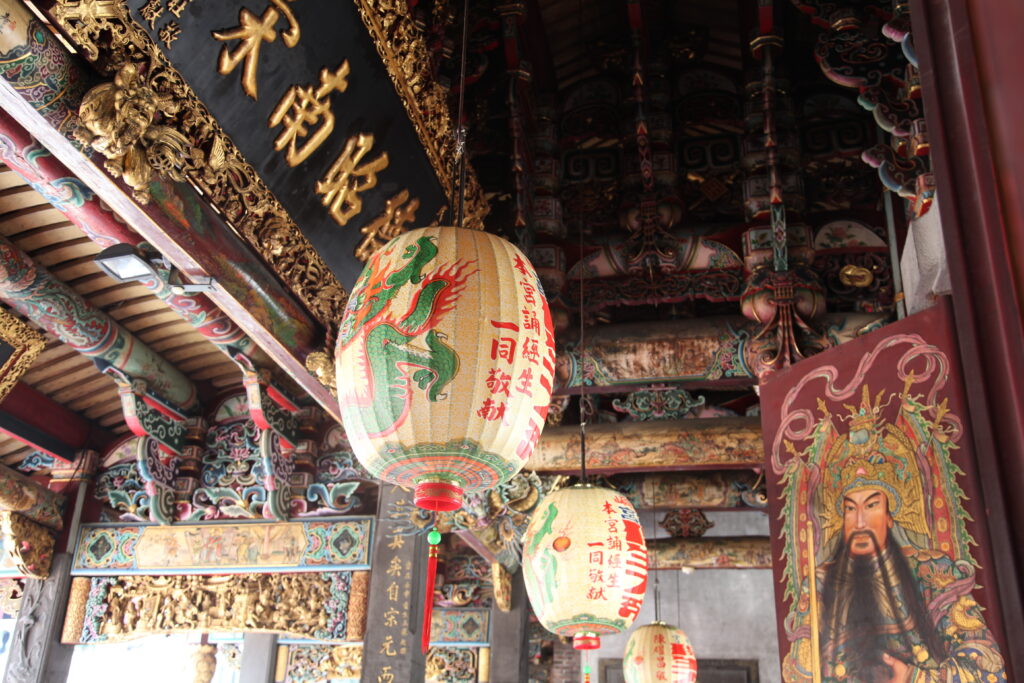
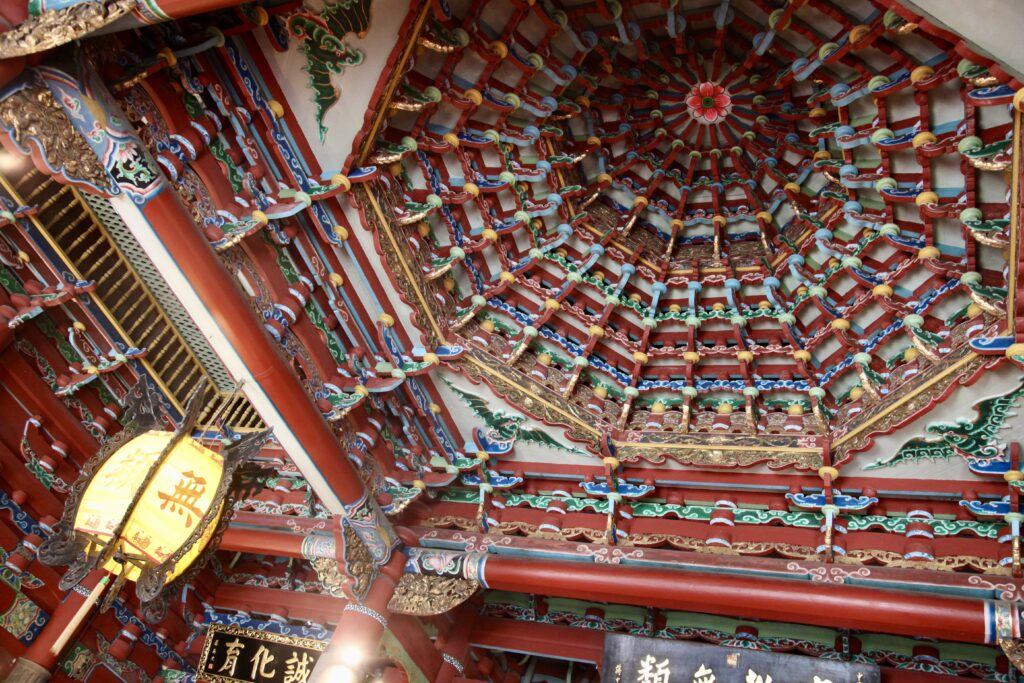
Continue west and walk through the alley to the end of Section 2, Dihua St (it ends at this temple). This is one of the older streets in Taipei and an absolute delight to walk along.
Imagine this being your local park:
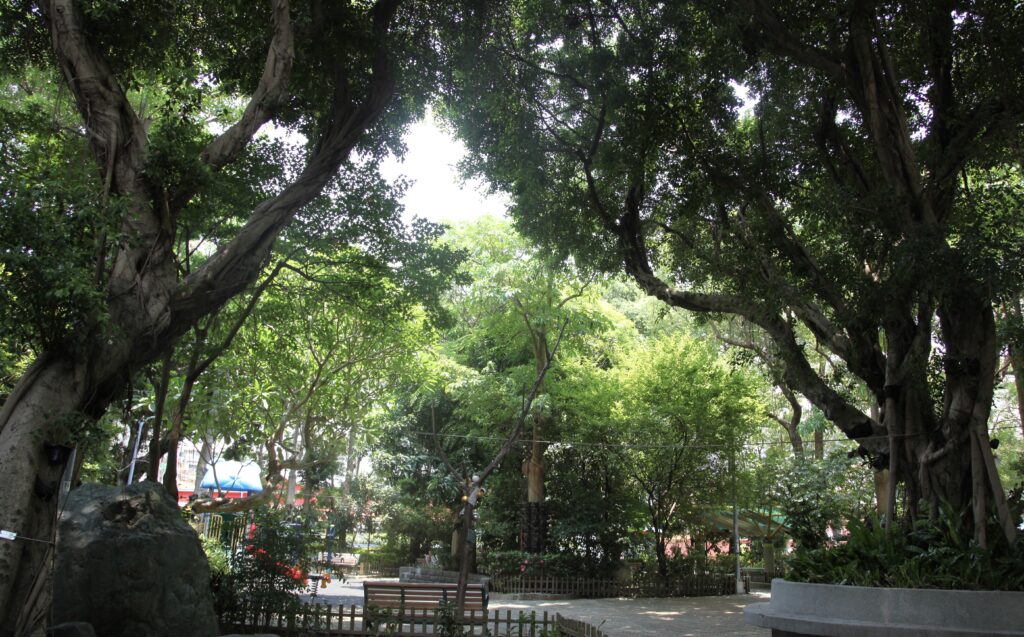
Stop for lunch at the Old Noodle Shop. They only do about 3 dishes (excellence in one dish is a trend in Taiwanese low cost eateries) and you'll eat at communal tables with locals:
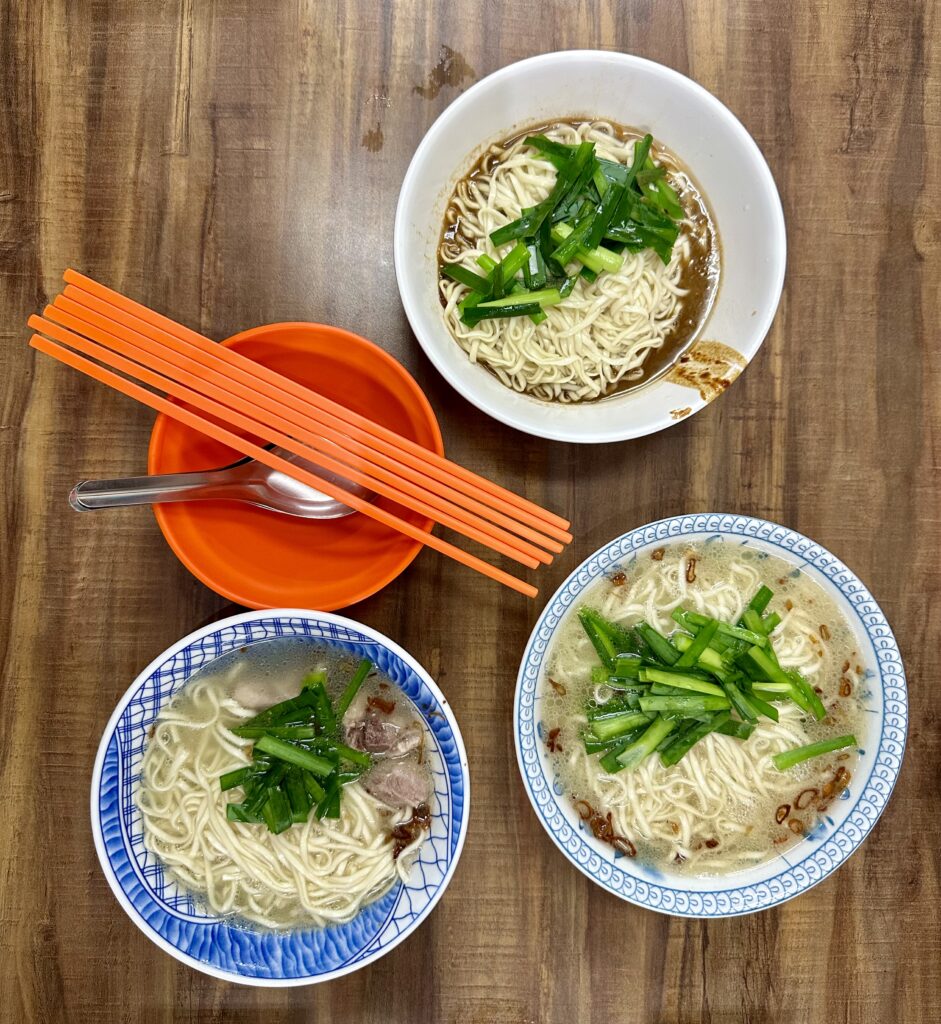
Keep following the road and keep an eye out for all the interesting details about Taiwan. You'll see one story buildings next to skyscrapers. You'll see ground floor stores with the owner's laundry hanging out above. You'll turn a corner and find a neighborhood temple appear out of nowhere.
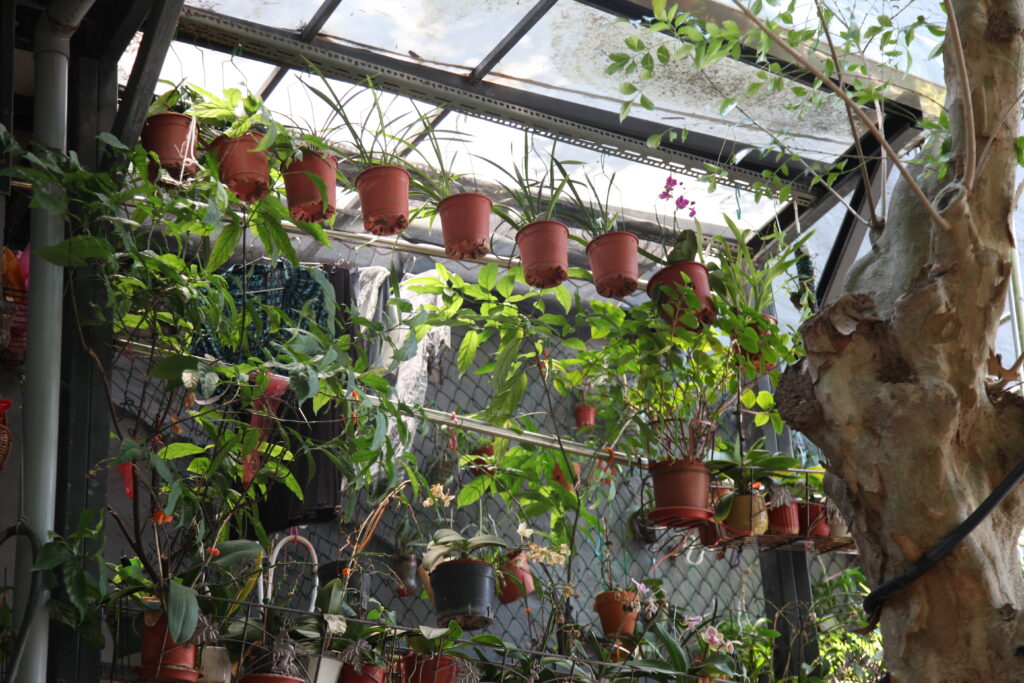
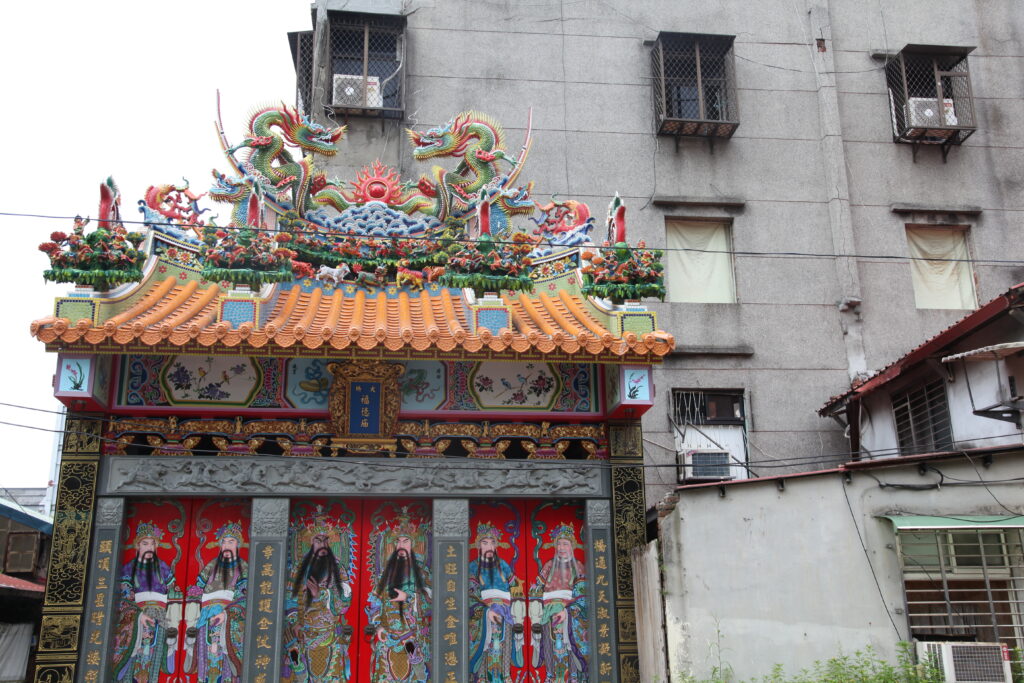
You'll continue for several blocks and when you pass under the elevated expressway of Minquan Road the entire neighborhood changes. You're now in the heritage part of Dihua Road and it's a delightful tourist trap.
There's historical architecture. Artisans sell their unique crafts in the upper stories of buildings. On the ground floor stores compete to sell identical wares to tourists; in between these stores are the odd hip store selling a new brand of clothing or food. Soak it all in.
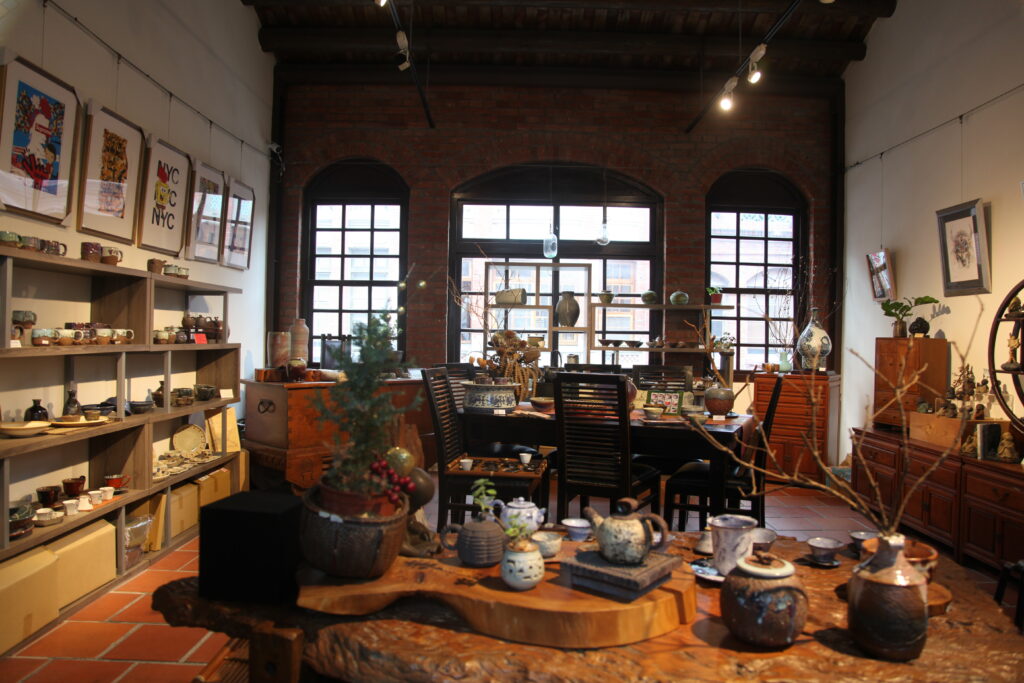
You've now had a taste of Old Taipei. Jump on the train again and take it to Taipei 101 for a completely different experience.
When I was preparing for this trip I found myself at the kids' dentist talking to a Taiwanese nurse there. I asked her what we should do and her response was "go to the mall at Taipei 101."
This seemed like a strange response as if you came to Seattle I'd never recommend you hit up the mall - but after visiting I understand why she mentioned it.
Taipei 101 is this weird engineering/luxury/self-indulgence complex. The building is an engineering marvel. It was the tallest building in the world for six years and dominates the skyline. The elevator is ridiculously fast; you rise up 90 stories or so in 45 seconds yet you don't ever feel too much acceleration. And the 660 tonne inertial mass damper (it sways opposite the building during earthquakes and typhoons) is a featured part of the tour.
But to get there you have to walk through a luxury battleground. You have to go up multiple floors to get to the elevator to the viewing deck and the last is a massive atrium featuring every major luxury brand known to man. There is literally a bridge that takes you to an LVMH store! You can feel the peacocking going on.
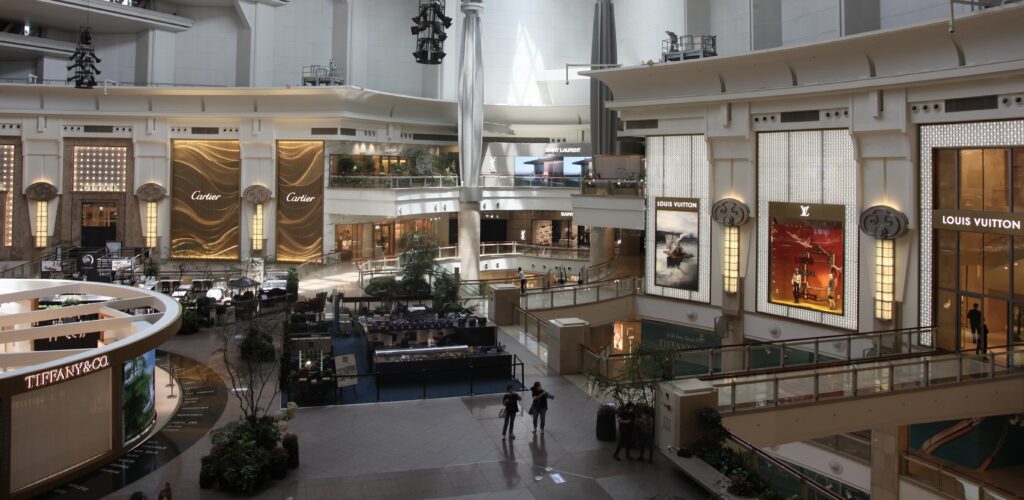
And when you get up to the top of Taipei 101 it is all designed for Instagram. There are all sorts of pre-designed displays for you to take your photo in. Never mind that most won't photograph well (there's too much glare to see any background), rather this is purely designed for you to show off your new handbag at the top of the world.
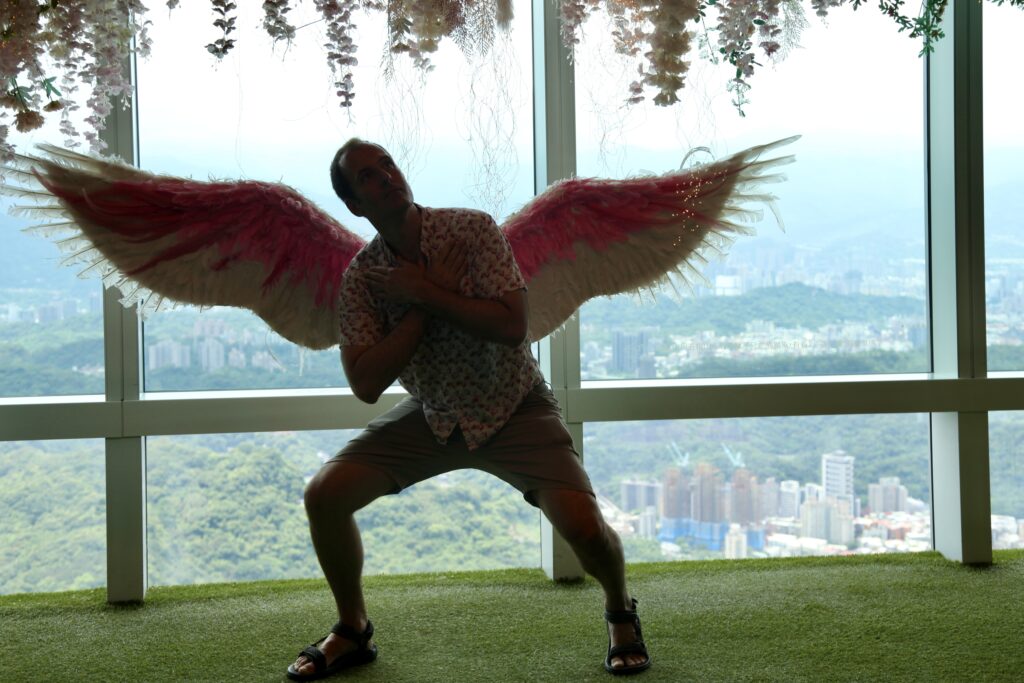
It's fascinating - and the view is worth it (and consider going at night; didn't fit our itinerary but I think it would be incredible).
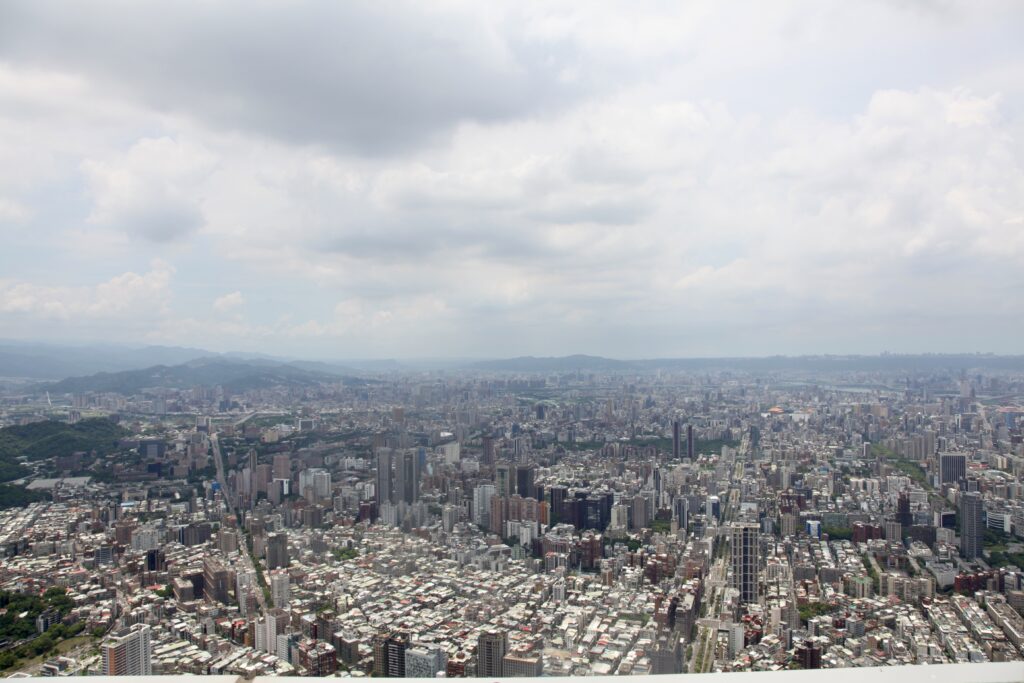
Finally, finish your day at a night market. You can go to Shillin however it's a bit far and an absolute zoo. We quite enjoyed this night market where we tried Hsiung Chi's amazing green onion pancakes:
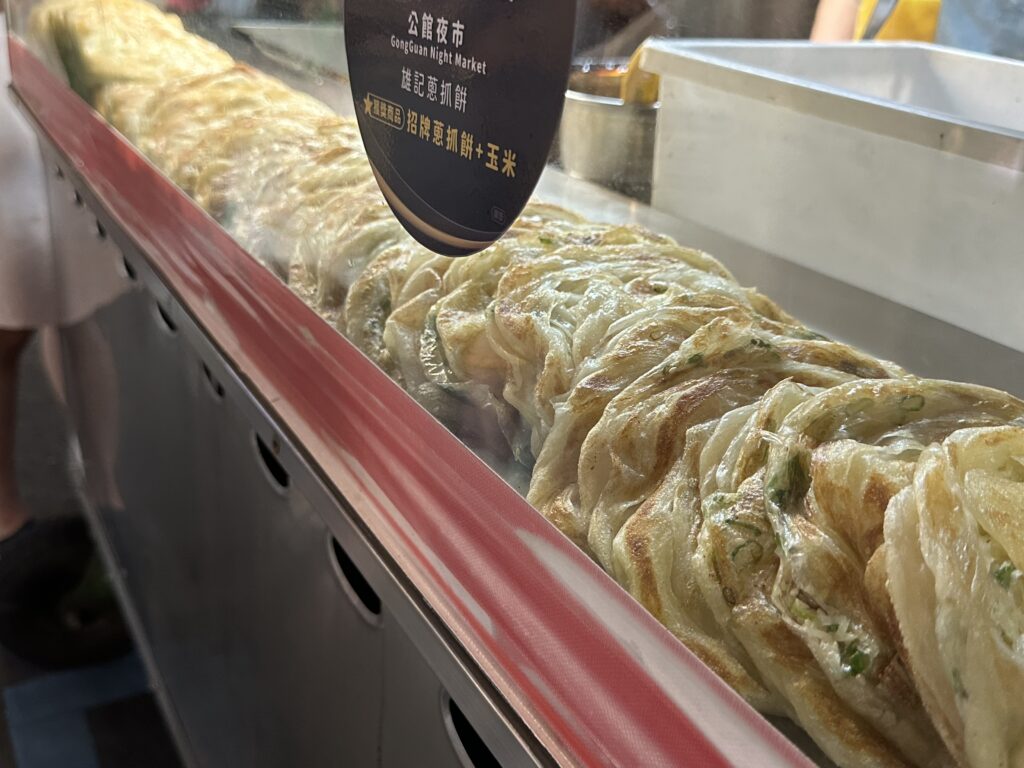
The secret seems to be that after a first frying they add red basil, soy sauce and honey mustard. I tried recreating it at home; it works.
After this, retire to bed; you'll be spent.
3.
The heat in Taiwan is oppressive in July. Angry photons bombard you. The light is bright and indirect and washes out photos while tiring you. You need to carry a sweat rag to towel off; don't be surprised to see locals with portable fans - electric, not paper.
Fortunately, Taiwan has embraced air conditioning. In Taipei, the subway stations are even air conditioned (one to grow on, NYC!). The train cars are all connected into one long tube and downright chilly; as the train accelerates the cold air lags, creating a cold breeze that pushes towards the end of the car. Taipei is haunted by a cold wind with no name.
In fact, air conditioning is even used as a promotional tool. At Shilin Market you walk the alleys and some clothing stores have open fronts and are blasting air conditioning. Letting it spill out into the street to get you to pause in front of their stores to consider their stock. There is a noticeable temperature gradient between your feet and your head.
Despite the heat you'll survive. You'll just be sweaty. It's a two shower a day place.
4.
I fundamentally think that all people are the same. For instance, we are all status-seeking apes possessed of similar vanities. One of the joys of traveling is seeing how this is expressed in other societies.
I quite enjoyed seeing these ads for iRestore. What is this terrifying beauty helmet? How will it set me apart from the unrestored masses?
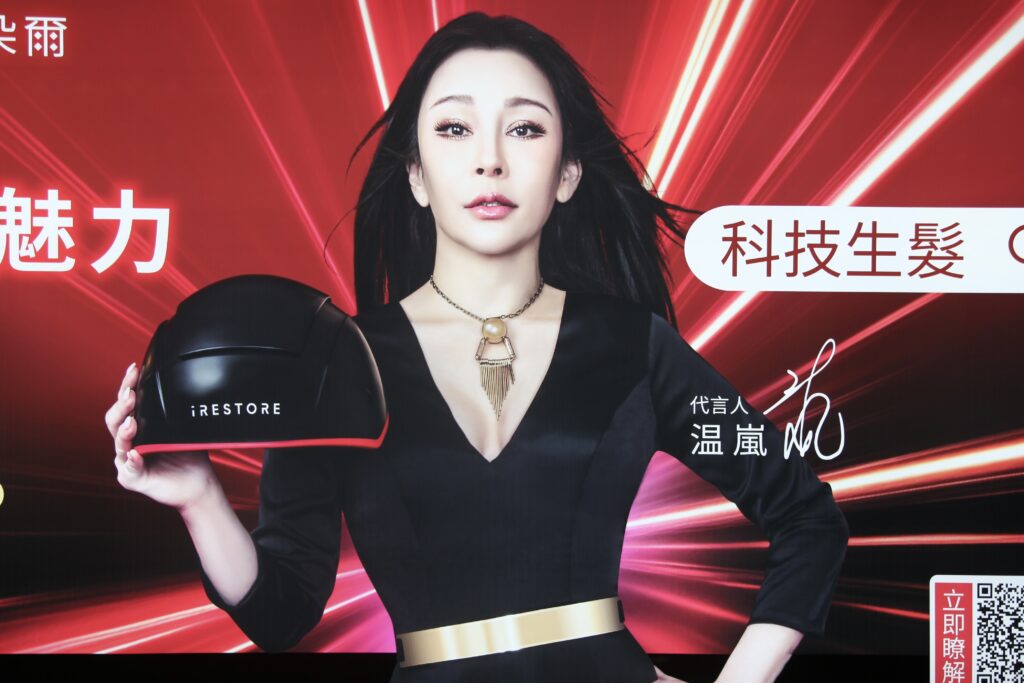
Turns out that it's a hair restoration service.
English brand names for Chinese brands are a great one, too. Names - like "Extremely slim devil" or "Night slim elf" would be almost gibberish in North America but are premium branding in Taiwan.

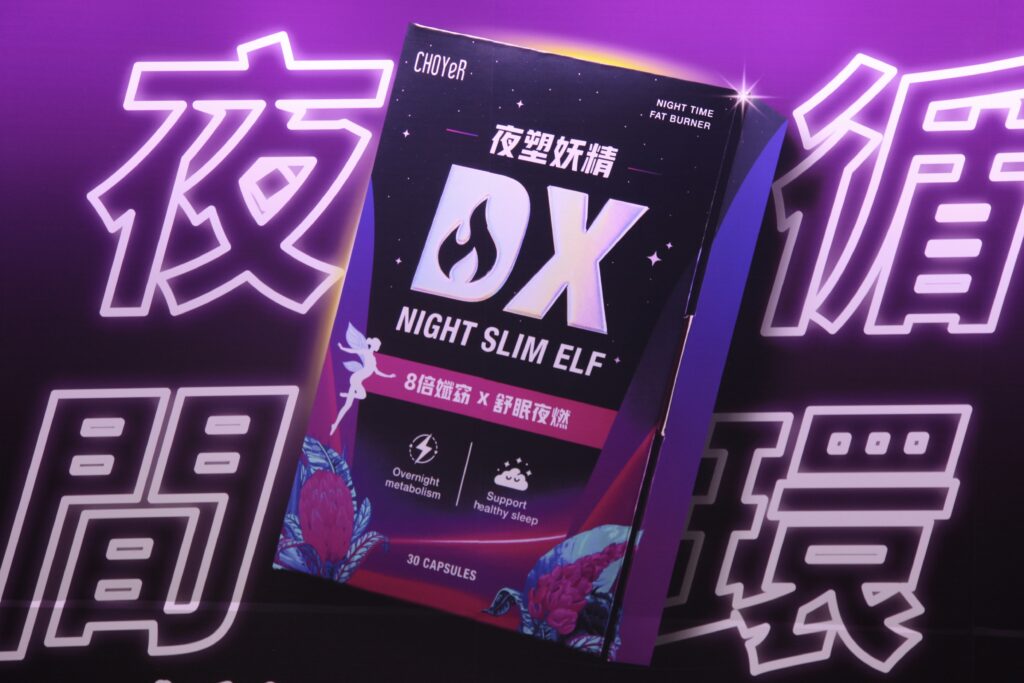
Another "we're all the same" problem is instructing people. What is the right level of instructions people need in order for society to function?
America is full of signs telling people not to be dumb (e.g., all of Yellowstone). Taiwanese signs were oddly specific - especially the Taipei Metro:
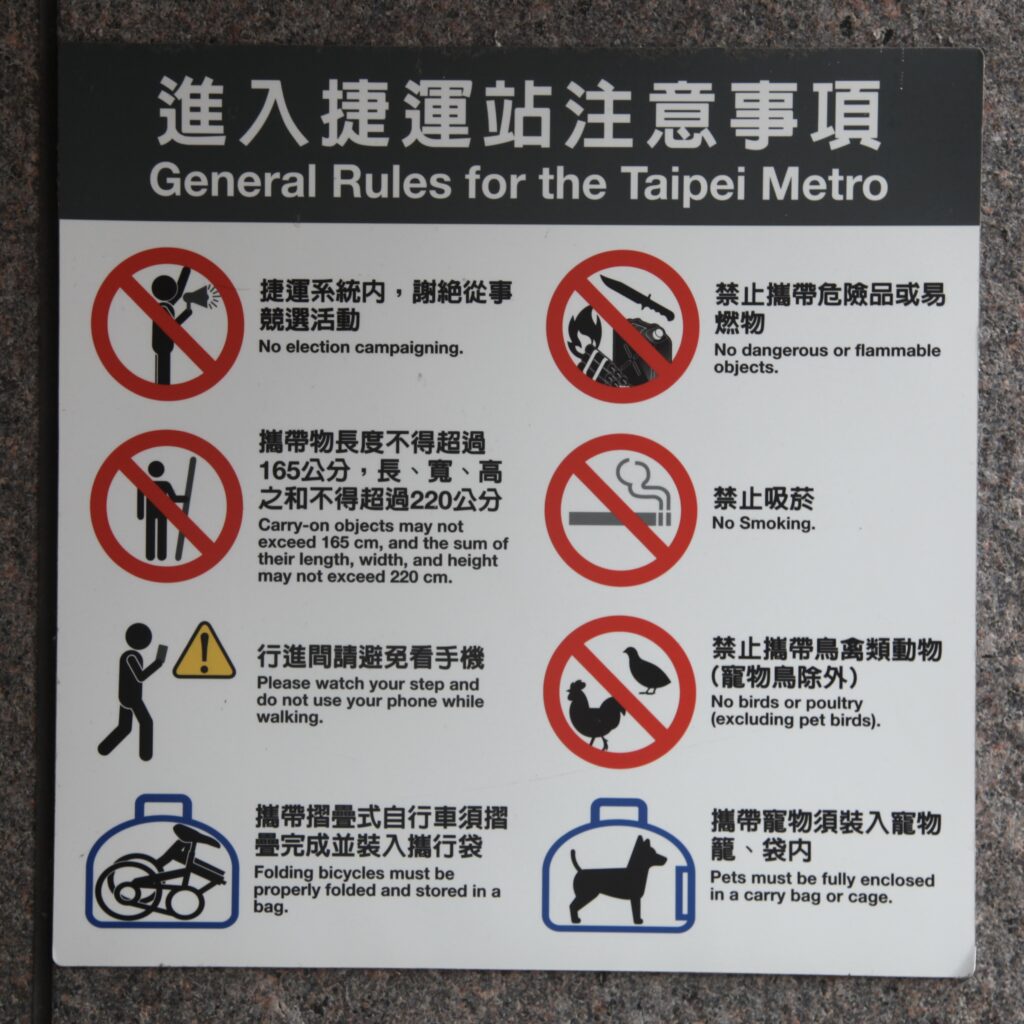
In the mountains we learned to be wary of the unique combination of poisonous snakes, bees, falling rocks and slippery surfaces.
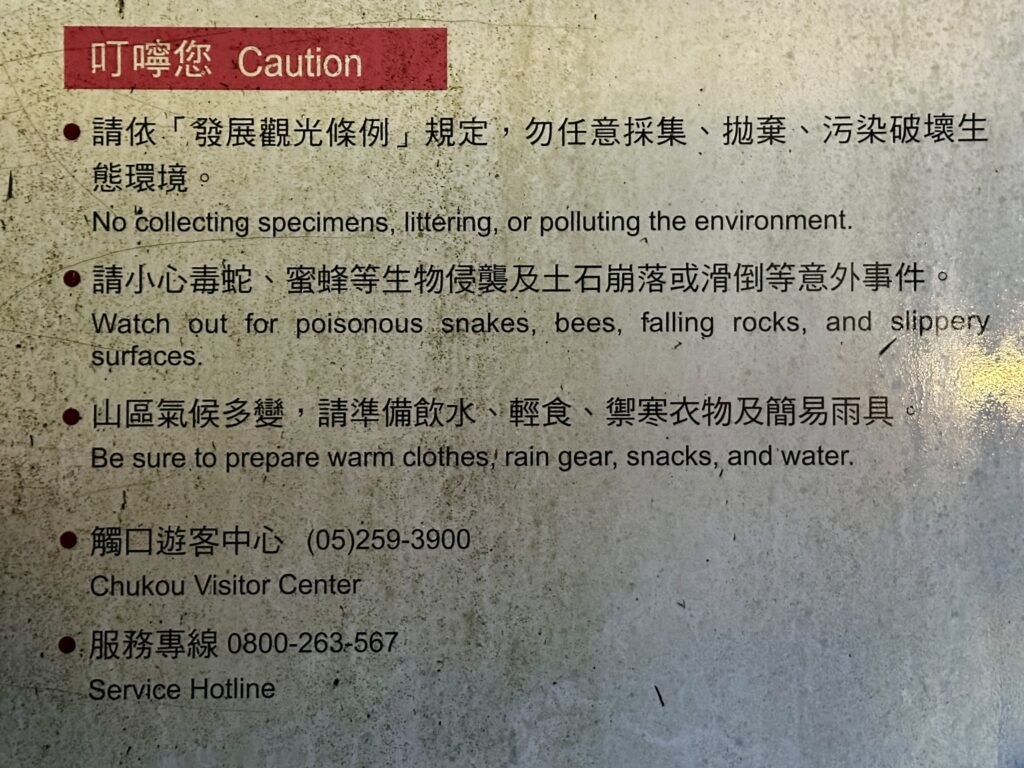
And the elevator at the Keelung tower had this helpful list of hints and tricks of what to do in the unlikely event that you get stuck in the elevator. To be clear: this would be an exceptional circumstance as there are two attendants working the buttons.
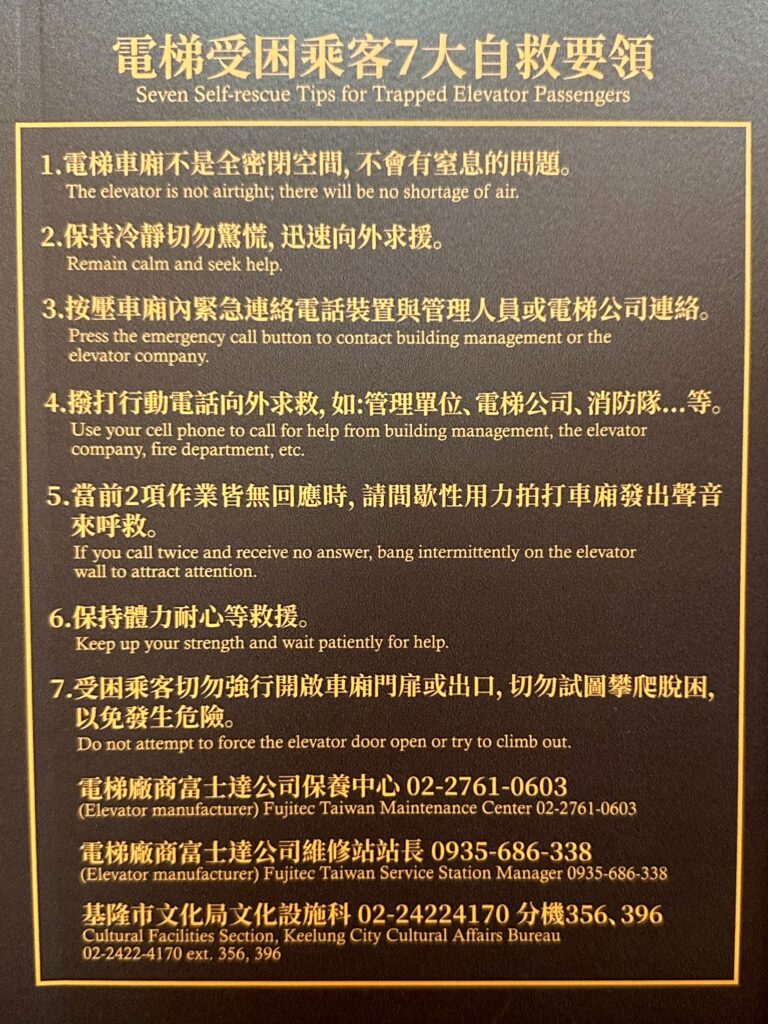
What I love here is that a human somewhere made the call that this was the right level of instruction for the locals.
5.
In America right now, Taiwan is known as the place where our microchips come from and the front line on the cold war with China. Interestingly enough, there's very little mention of this in Taiwan - or at least is isn't evident in daily life.
The sole political sign I saw was on a tourist hat hidden in the far recesses of the second story of a shop:
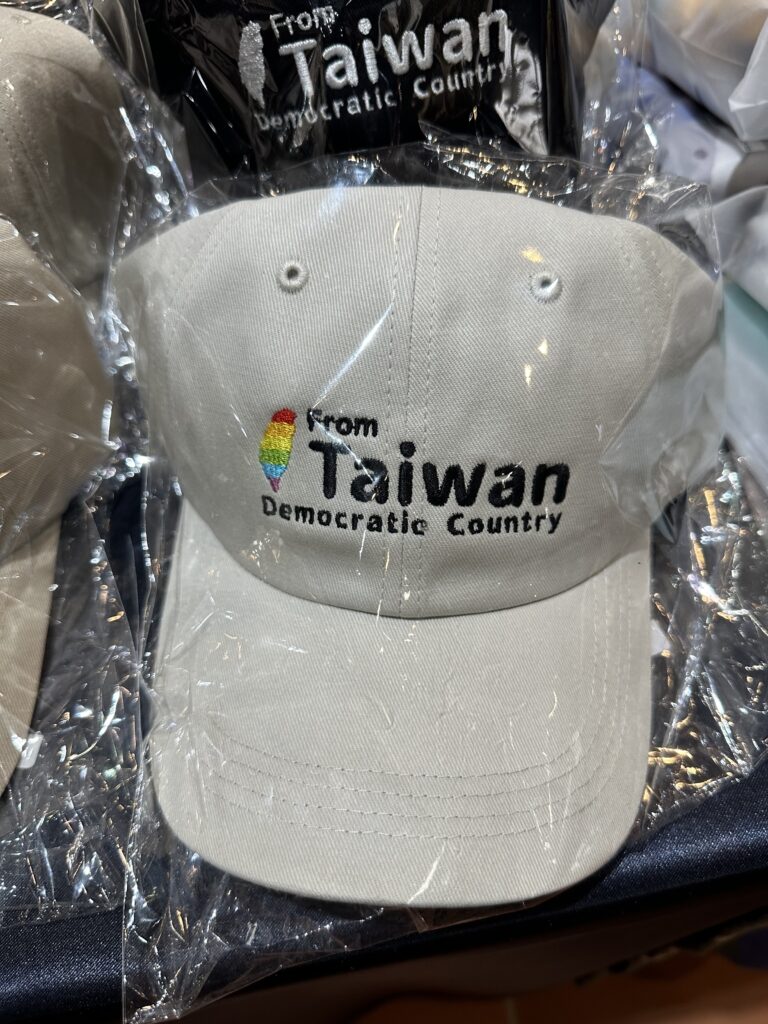
The only other gentle reminder was ubiquitous evacuation signs weaved into the daily cacophony of Taiwanese street signage:

6.
I have no idea how you could effectively travel in Taiwan before smartphones. We relied on Google Maps and Apple Translate to guide us and I don't know how we could have got around without them.
Navigating Mandarin characters was a unique experience. You're hurtling down the road and trying to pattern match the shape on the screen with the shape on the exit; no words here rather loose matching of a few thousand different characters.
It's also not enough to have a map. You will want to know exactly where you are on it. As we drove up to Alishan in fog so thick that you could see maybe 30 feet ahead, there was no way we would have found our rural town without GPS.
Apple Translate was a godsend when we found ourselves in restaurants that didn't have English menus - and this was the vast majority of places. Using it made me want to learn some Mandarin as I think there are some idioms that don't translate well and I'd like to learn more to understand why.
For instance, what does it mean for salmon eggs to be "domineering?"
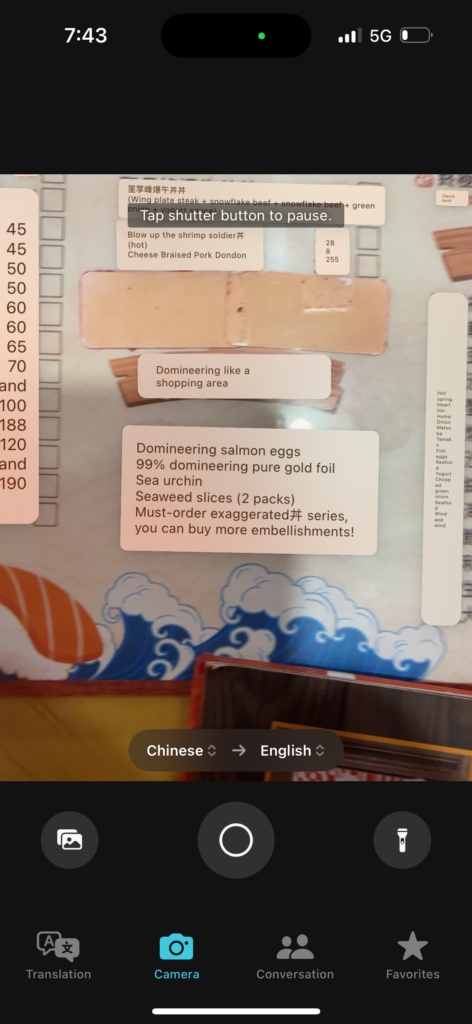
And I would love to know which sushi dish translates as "Fear of good women's love nipples." Despite these hiccups the translation system is more than good enough to help you get by.
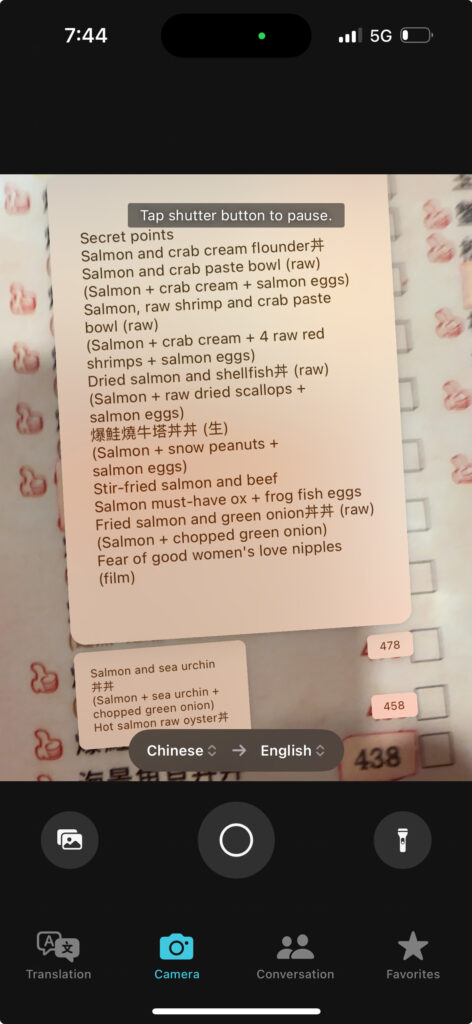
7.
And speaking of food, let me share a few of my favorite dishes with you.
I've already spoken fondly of noodles, dumplings and green onion pancakes. Allow me to add a few things to the list.
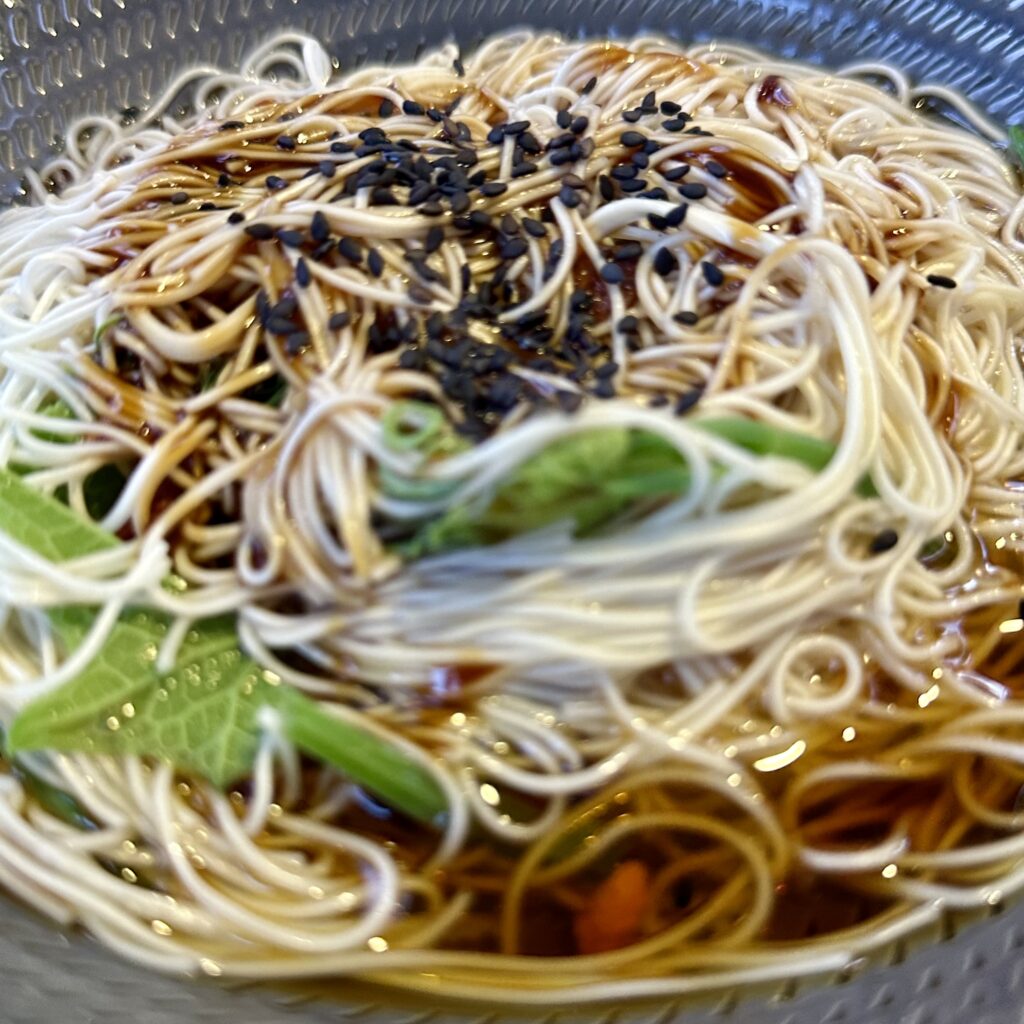
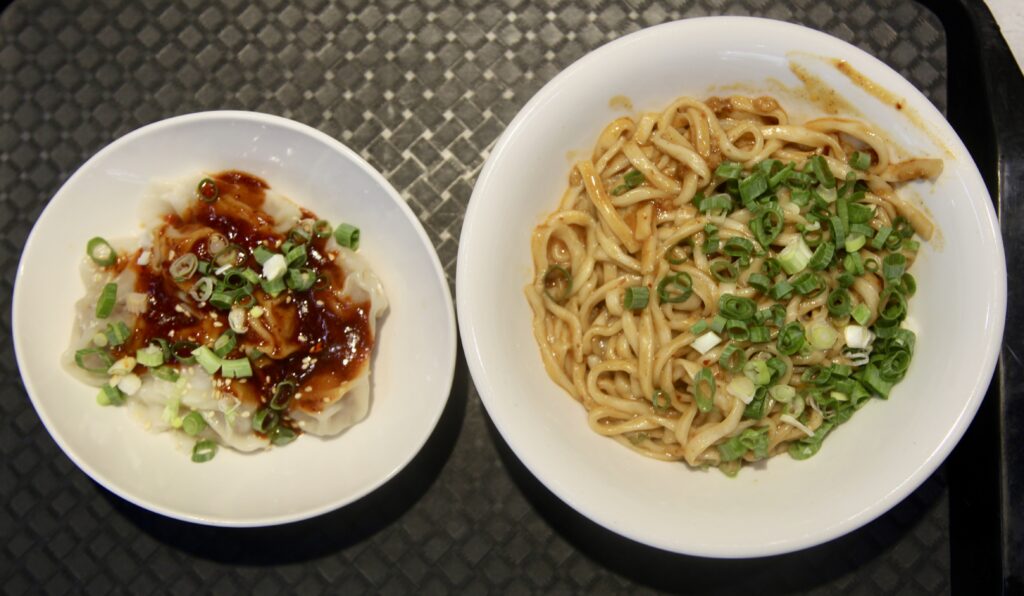
Taiwan is famous for its beef noodle soup. We found ourselves at a highway rest stop and, lo and behold, they had a beef noodle restaurant. I should add that this was not your typical American-style rest stop with a Philips 76, a world-leading selection of energy drinks and some tired taquitos getting a sunburn under some hot lamps. No, a Taiwanese rest stop is a self-contained city with its own exit off the freeway - and every one we stopped at had an arcade of restaurants and a delicious beef noodle soup shop (the other place that did this well: the airport post-security; great food court).
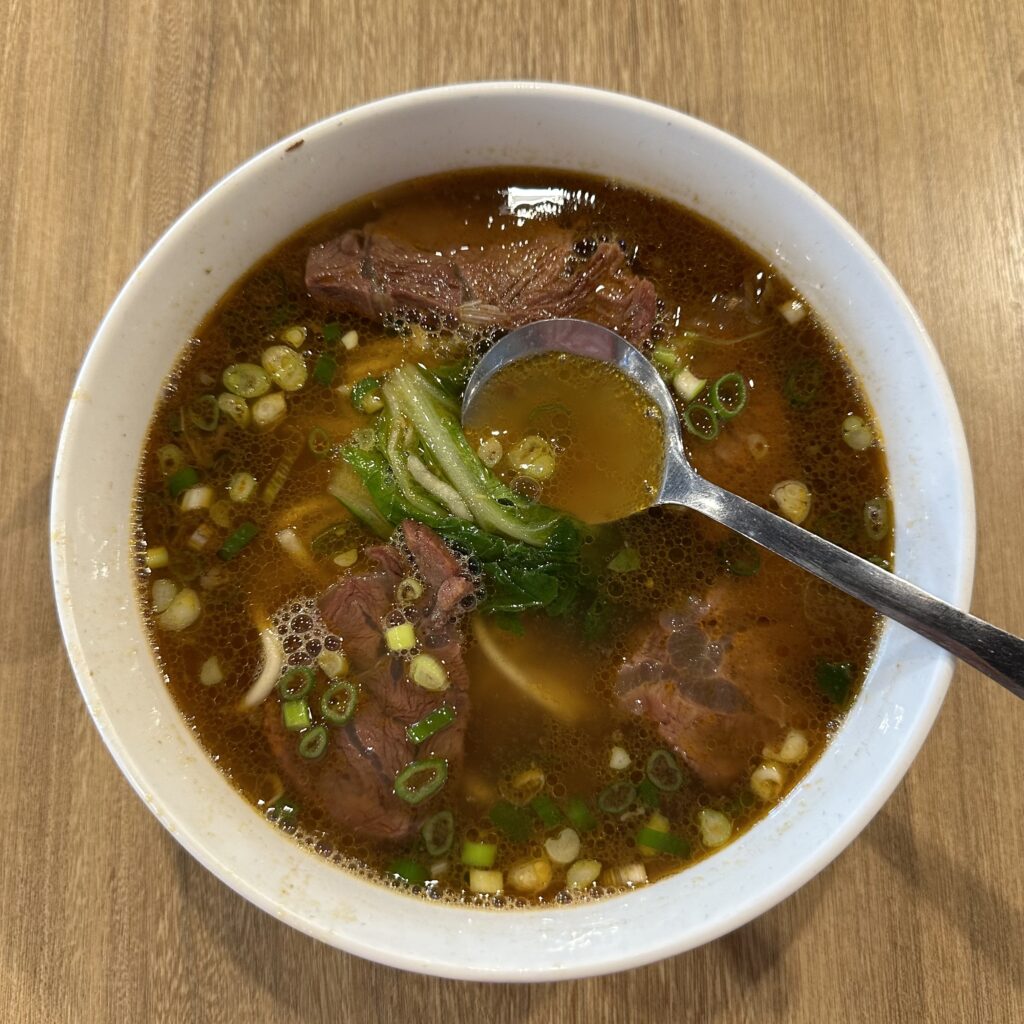
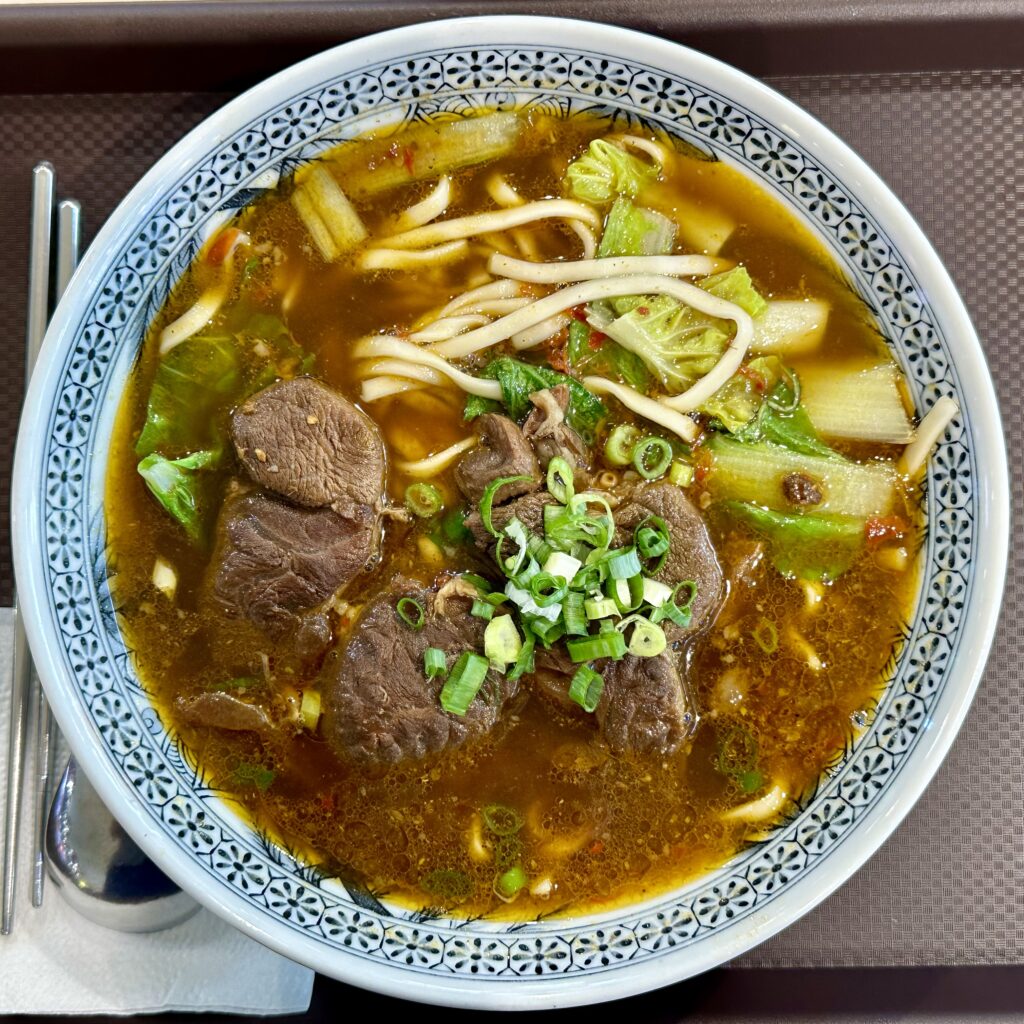
However, the greatest food discovery of this trip was the pepper cake. I'd never heard of this before; it's essentially minced pork inside a dough pocket and cooked inside the Chinese version of a tandoor.
And it tastes incredible.
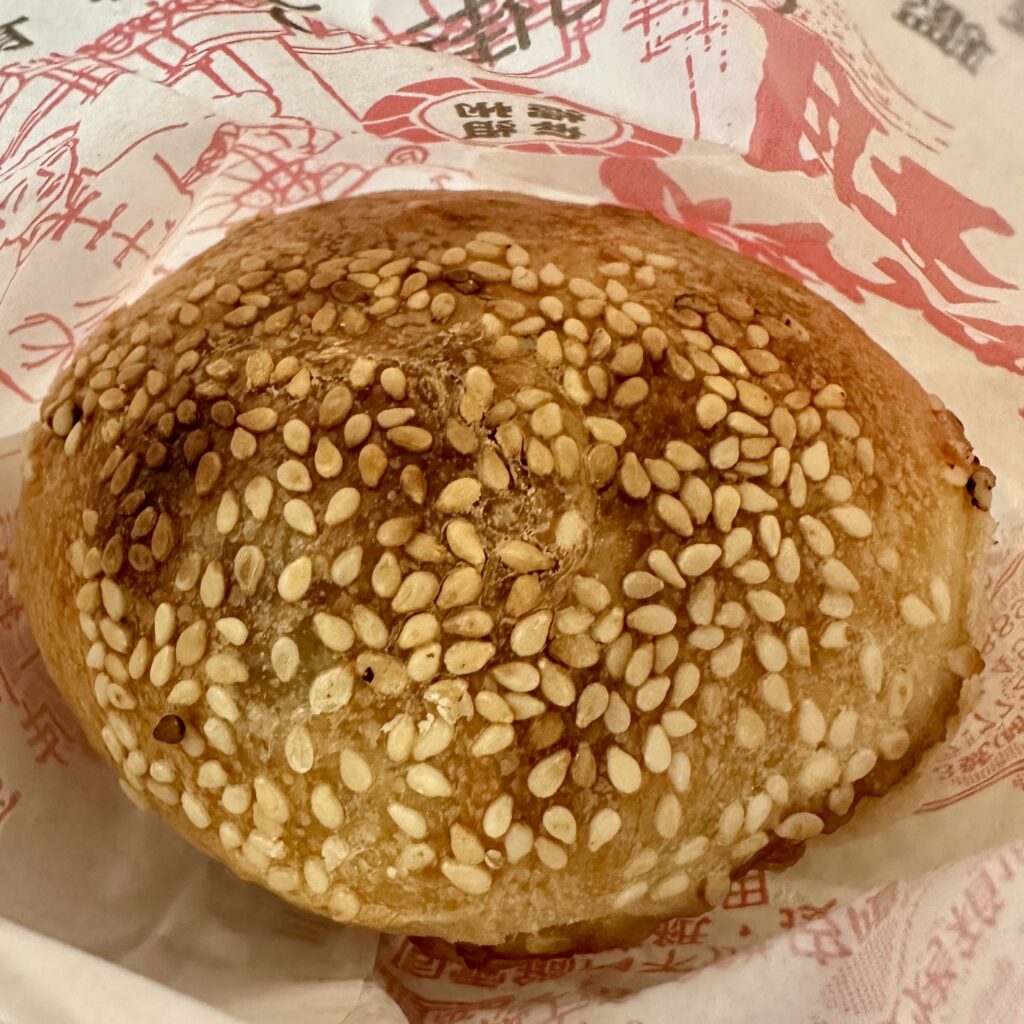
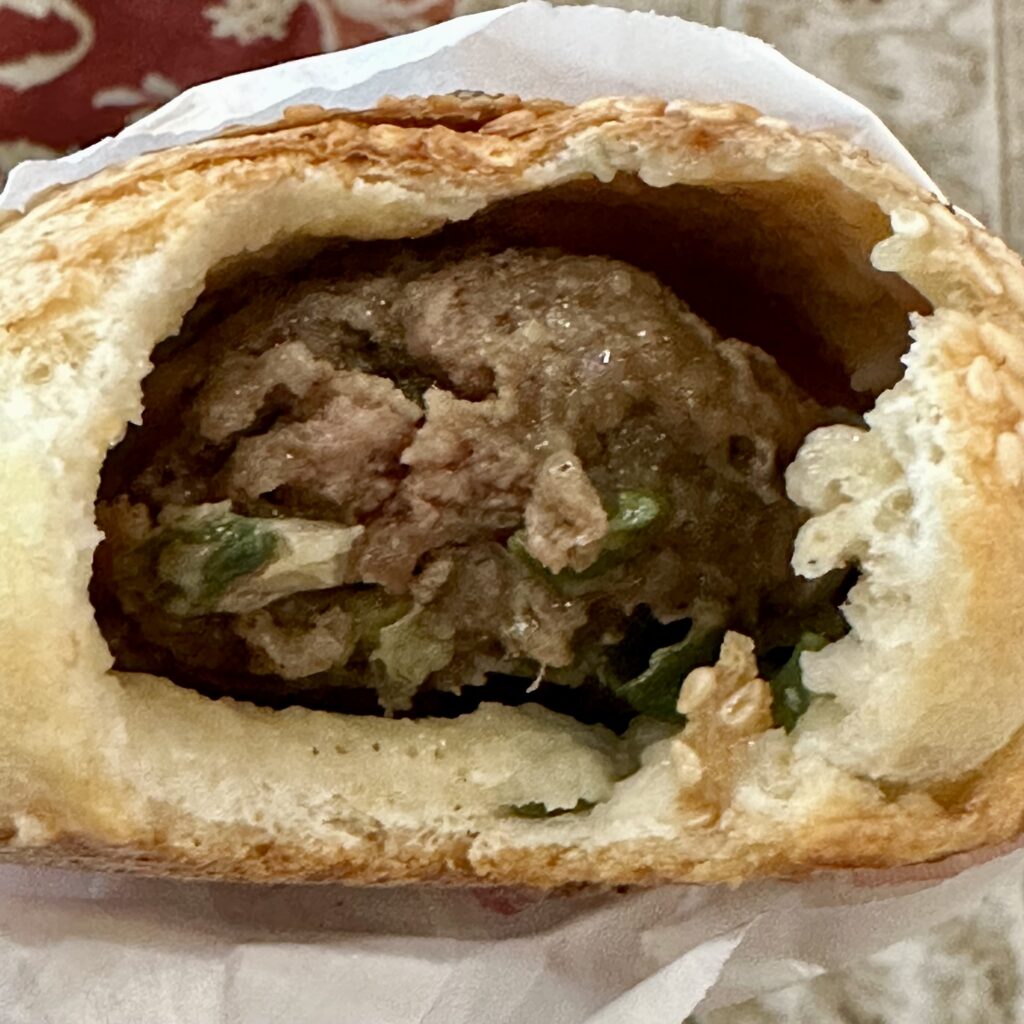
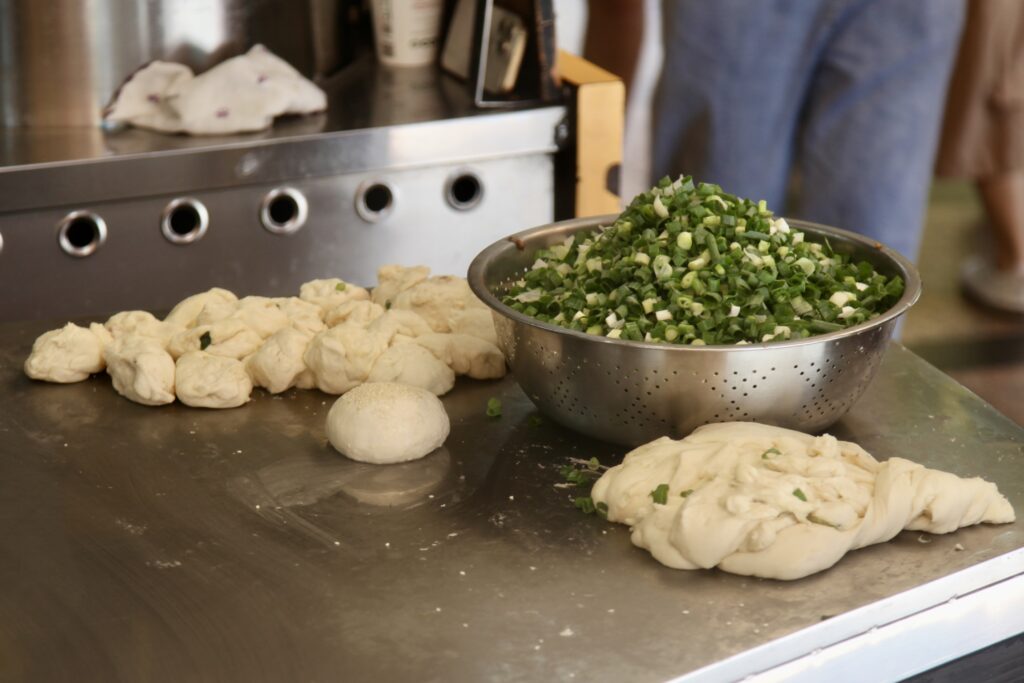
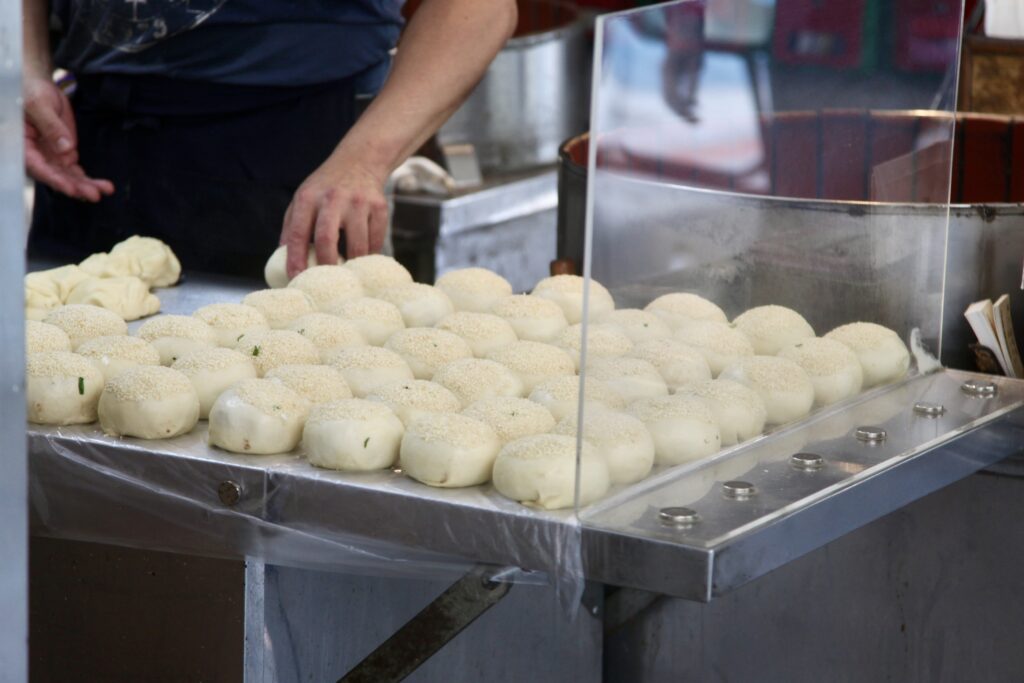
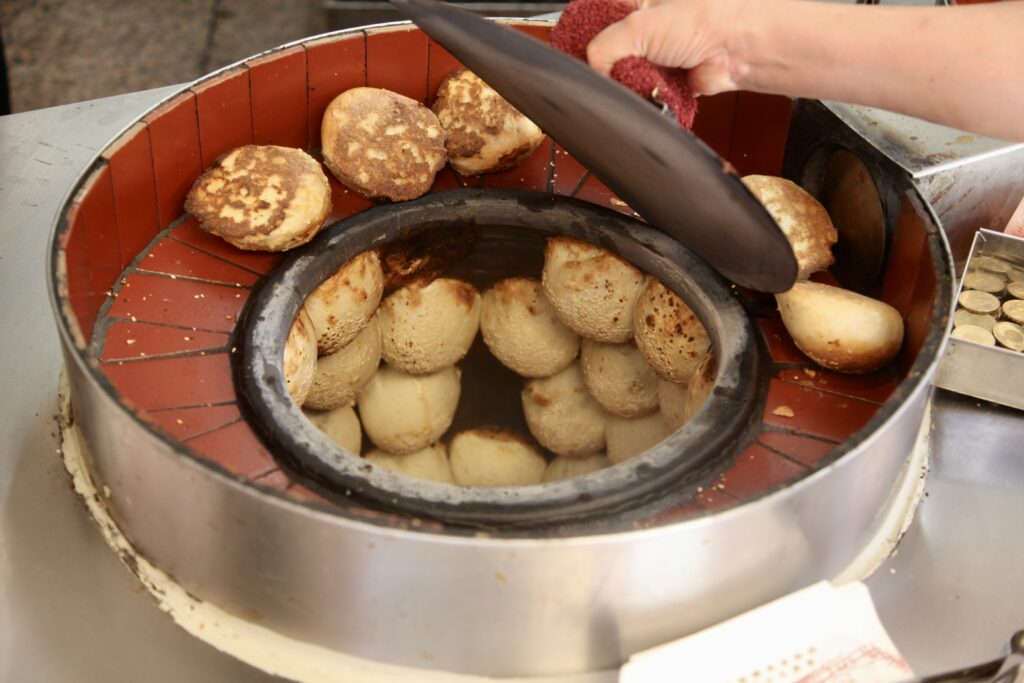
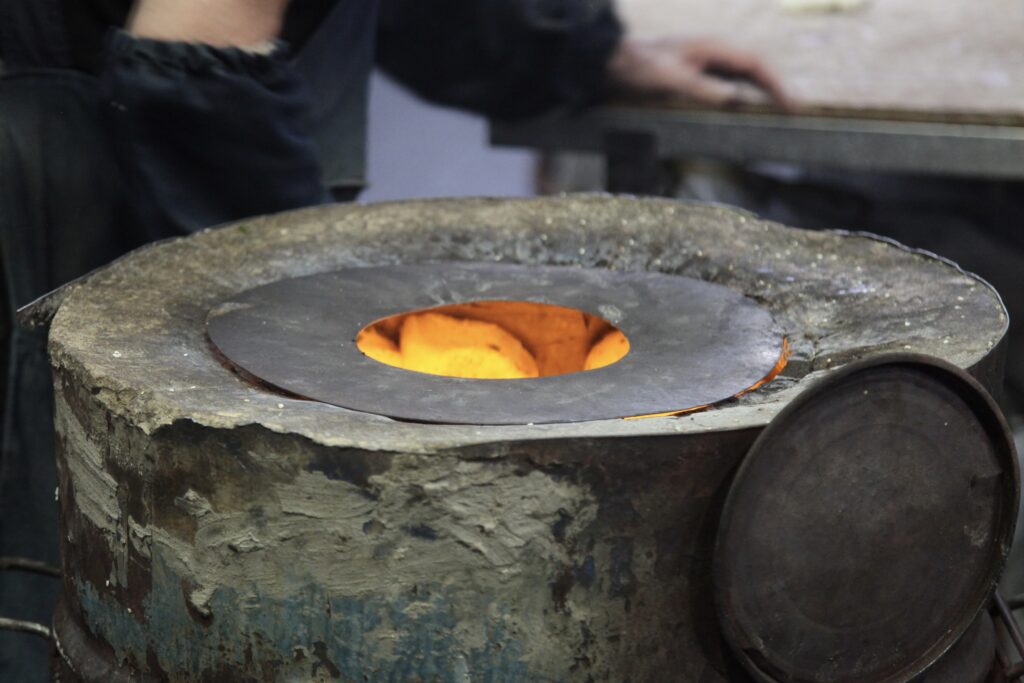
As you bite in you get the combination of a crisp outer shell and a juicy interior. I absolutely love it and want to learn how to make it at home. I'm told the place to go is Fuyuan Pepper Cake but you need to budget a few hours if you go there; they batch their cakes and they sell out so fast that they'll give you a token for a batch later in the day. Consider nearby Fuzhou Ancestral Pepper Cake instead (photos above are mostly from there).
The last food I want to call out...is juice. Part of the joy of traveling is exposure to new foods; I did not expect to get exposed to new juices. However, as mentioned above, the Taiwanese convenience store is home to an astounding array of foods.
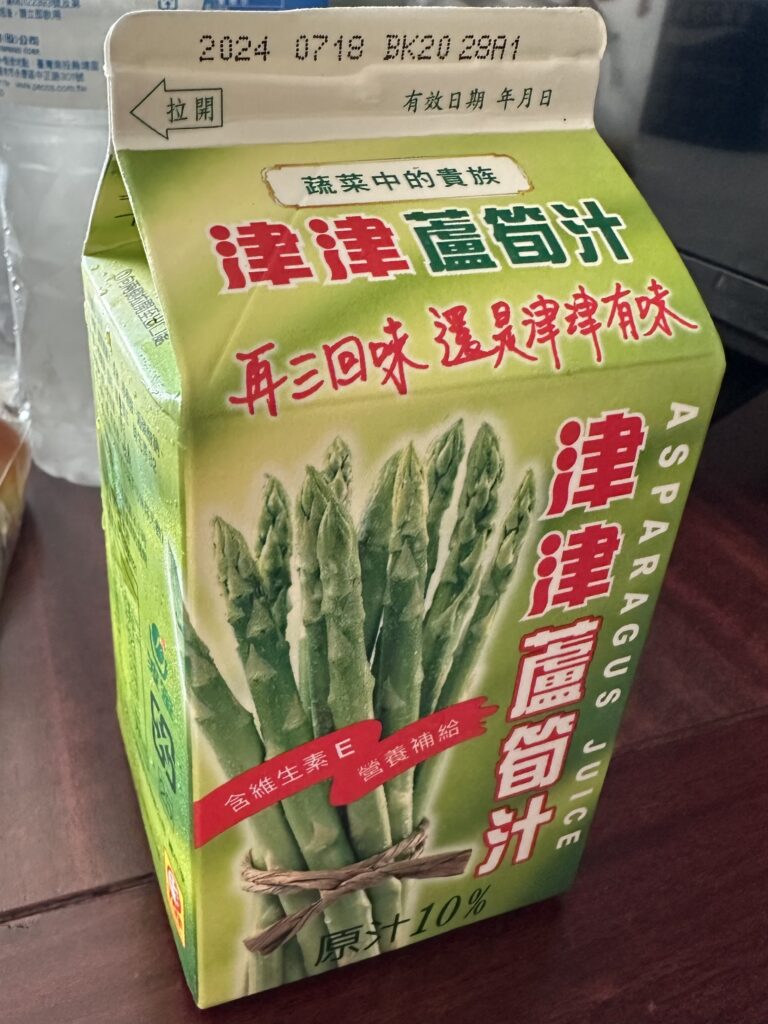
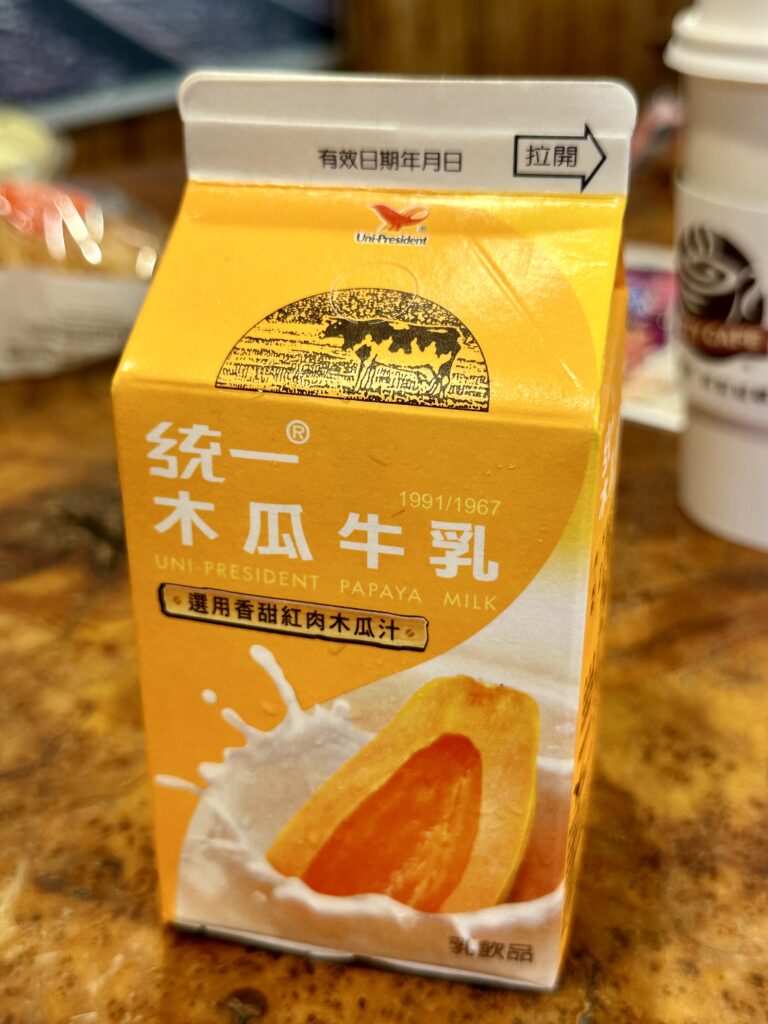
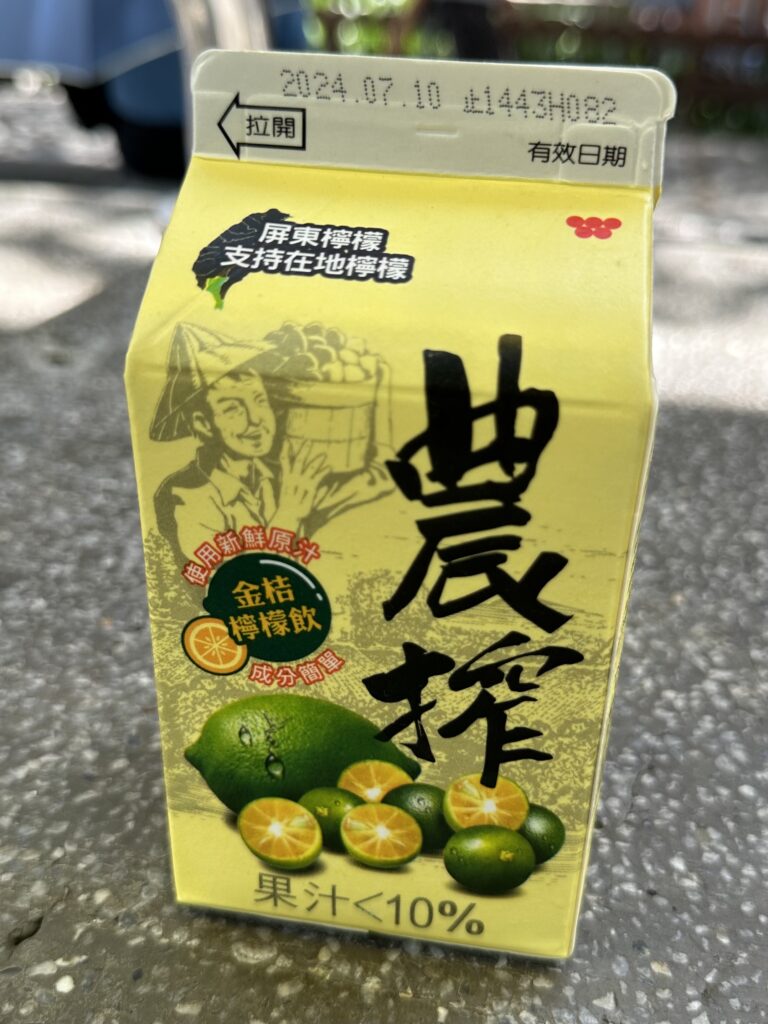
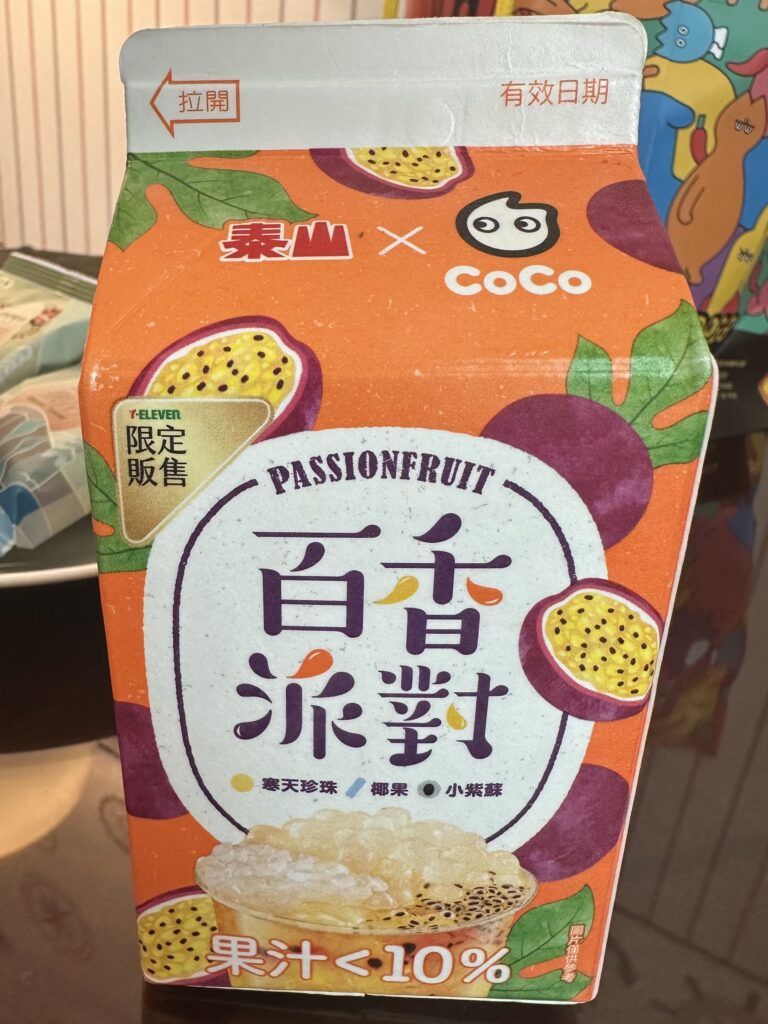
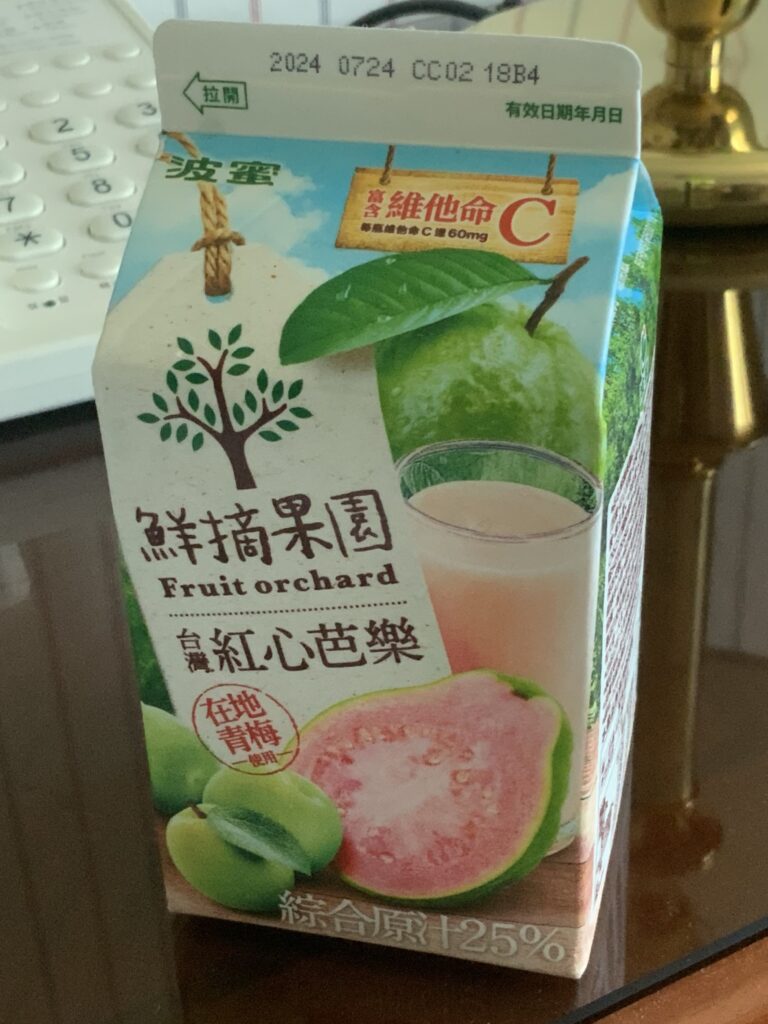
It being subtropical, Taiwan has exotic (to me) fruit juices like calamansi lime, passionfruit and guava. Totally novel was asparagus juice - it's like drinking sugary asparagus - and papaya milk - two flavors I'd never consider combining. I'm not sure the latter two will enter regular rotation for me (even if I could find them) but I will not forget trying them.
If you're in Taiwan, spend some time dawdling in the juice section of the nearest convenience store.
8.
And that's a wrap. I could keep writing about Taiwan but this is already a pretty long blog post. Let me finish with a few one liners and then some photos that I liked but didn't really fit into the narrative above.
- Taiwan seems to be trying to liberalize and finding it tough to strike a balance. We saw a breastfeeding station and there was an exhibit of LGBT art - but you could only enter if you were 18+ (it was not pornographic; just same sex kissing).
- There's no homelessness in Taipei - but it's because homeless folks are pushed out of sight. There are literally no seats in the main station; young folks just sit on the floor waiting. And if you stay in a train station for more than 20 minutes you need to pay 15 TWD more. It is a no-loitering society.
- There is a curious lack of garbage cans outside of downtown Taipei. But there's no trash. Nobody consumes anything outside of their home.
- Several times we saw an older person sitting in a convenience store playing games on several phones at once. Pretty sure this was someone earning points for someone else, not passing the time.
- TSMC HQ is worth a stop off the highway. The most advanced microchips on earth in the most sophisticated factory on earth are made next to a gas station. There is a giant pit right now where a future fab is going in. I like to think of it as a $20B pit; it's going to need so much power that a giant electricity pylon just ends in it, waiting to feed the beast.
- Unique car rental scenario: they made me take a video of the car with them before they handed it over to me. The guys were also incredibly insistent I use the parking break.
- Taipei is the only place on earth where I've seen e-ink displays deployed outdoors. The whole island feels like it has gotten a technology do-over vs. the West.
